It might seem strange to learn that in the centre of Provence stands a city where you can visit some of the most remarkably well-preserved Roman ruins. While many of us might only think of Rome (obviously), Herculaneum and Pompeii, the idea of Roman ruins being in Provence might surprise many of you. But in fact, here in Provence, there is a fantastic collection of everything from ancient Roman aqueducts to an amphitheatre to rival the great Roman Collesium in Italy. One of the very best places to see a massive collection of antiquities is right here in the picturesque city of Arles.
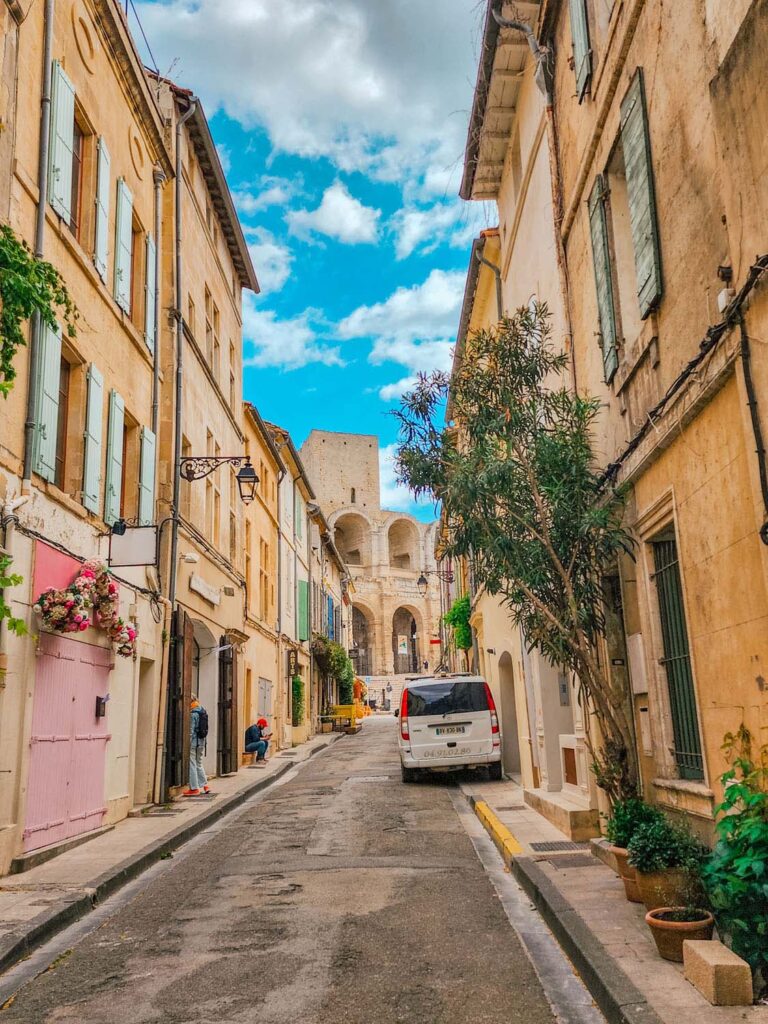
Our previous self-guided walking tour focused primarily on following in the footsteps of Vincent Van Gogh. Van Gogh lived and worked here in Arles, and some of his most prolific works of art were made during his time in his yellow house. Featured in many of his paintings were remnants of the ancient Roman ruins of Arles, as they are hard to miss and truly a part of the fabric of this city. And just like this mesmerized Van Gogh a hundred years ago, they fascinate visitors daily. So join us as we travel back in time, long before Van Gogh, to peek into the Roman and Medieval world of Arles.
- Map of Walking Tour of Ancient Arles
- History
- Admission to Historical Sights
- How To Get To Arles
- By Train
- Alyscamps, the Roman Necropolis
- Tour des Mourgues
- Théâtre Antique d'Arles
- Arles Amphitheatre
- Rue Voltaire
- Amédée Pichot fountain
- The Porte de la Cavalerie
- Quay Marx Dormoy
- Thermes de Constantin
- Musée Réattu
- Place du Forum
- Van Gogh Café
- Cryptoporticus
- The Obelisk
- Church of St. Trophime
- Cloître Saint-Trophime
- Jardin Des Arts
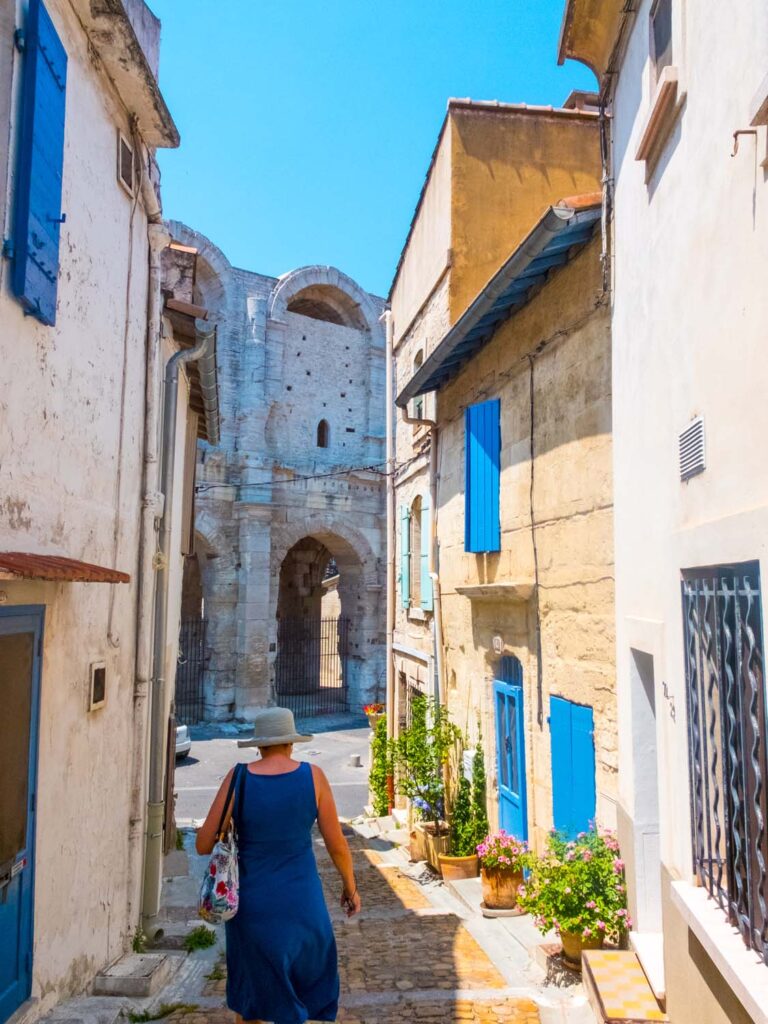
Map of Walking Tour of Ancient Arles
History
Arles has a rich and storied history that dates back thousands of years. The Ligurians were the first known people to inhabit this area around 800 BC. In the 2nd century BC, Arles came under Roman rule, and the village flourished with the construction of the canal connecting the Mediterranean Sea to the city. The Romans sought to build huge architectural landmarks that included the Arles Amphitheatre and the Roman Theatre, which were built during this period. Both of which we can still see prominently featured in the city today.
The Roman Era
During the Roman era of Arles, the city became a vital hub for trade due to its strategic location along the Rhône River, which made facilitating commerce and cultural exchange a breeze. As the city grew, it became the centre of arts and culture in the Roman “Provincias,” a Latin phrase which referred to the territories that the Roman Republic controlled. And where the name Provence came from.
Many Emperors frequently were drawn to the city of Arles. And even would use it as a home base during their military campaigns. Emperor Constantine I, especially favoured the city. Under his rule, the Roman Baths were built in Arles to mirror the Baths of Constantine in Rome. His son Constantine II was born in Arles, and his son Emperor Constantine III went on to declare Arles as the capital of Rome when he moved there in 408!
The Fall of Rome
After the fall of the Roman Empire, Arles continued to hold lots of power over the rest of the South of France. It was still a major center for trade and commerce along the Rhone River. But soon, its prominence was eclipsed by the ever-growing port of Marseilles. Since Marseille was located right along the Medieterran, they could accept larger ships from farther away into their ports. And before long, Arles ceased to hold any real political power.
Admission to Historical Sights
While many of the Roman ruins can be seen, at least in part, from outside the ticketed area, visiting the interior of many of these sights is well worth the admission fee. You get up close and personal. Explore hidden interiors, and even delve below the city to see the internal structure holding it up today.
The best ticket to buy for our self-guided tour is the Pass Avantage. This gives you access to six monuments and four museums. While that might seem like a lot, it’s mainly the monuments we’re focused on, and the museums are simply a bonus. If you are planning to spend more than one day in Arles, this is great as it will allow you more time to check out the additional museums. The ticket is valid for six months, so if you prefer to split this tour into two days, you can take everything at your own pace.
Pass Avantage Price
Adults 19€ | Reduced 16€ | Free for children under 18 accompanied by a parent. You can buy your Pass Avantage at the first stop on our guided tour.
For the most up-to-date opening hours for each stop on the tour, check this handy guide.
If you don’t want to buy the monuments and instead would rather pick and choose only a few different locations to go inside, I’ve included all the individual entry prices in this post.
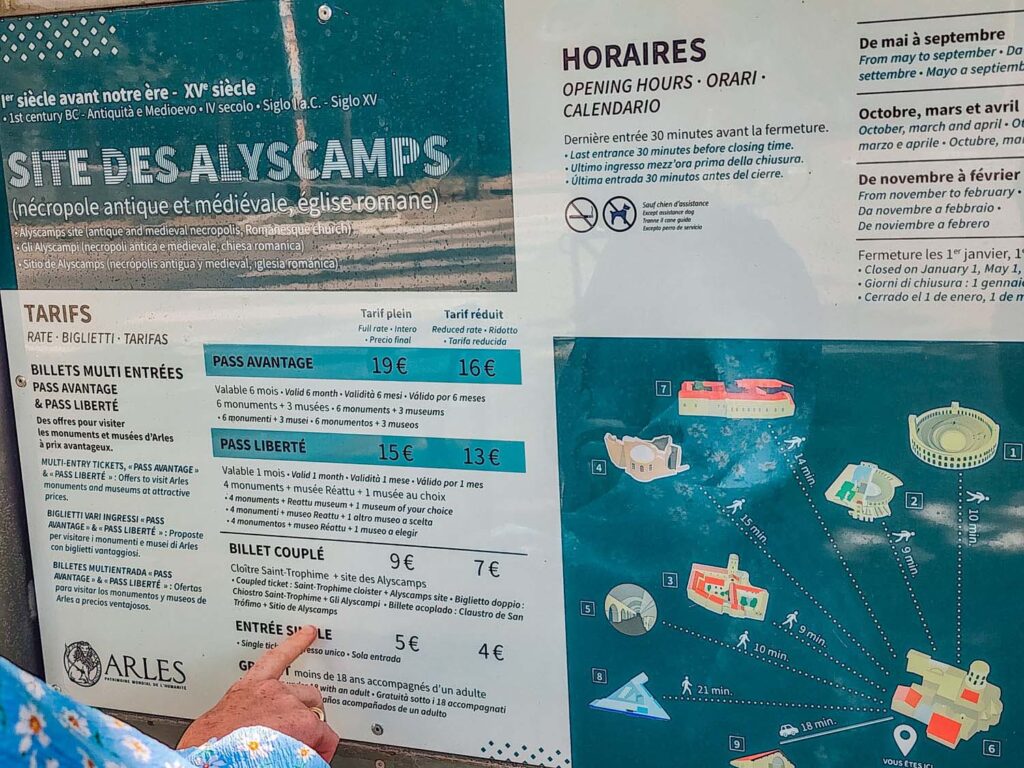
How To Get To Arles
By Car
Arles is easily reached by car via the N113 and A54 highways from Marseille or D570 via Avignon.
By Train
If you are staying in towns like Nimes, Avignon or Marseille, you can also opt to take the TER train. These trains run very frequently and are often even quicker than driving! But note that most small Provencal villages around Arles don’t have public transit. So, in that case, driving will be the only option.
Where to Park
One of the best spots to park, where there are lots of spaces, and it’s very central, is at the Parking du Centre. Along the Rue Emile Fassin. I’ve made sure to mark that on the map. Parking costs 2€ an hour. There is also a public washroom kiosk outside this parking lot. But remember, these require a 0.20€ coin to get use. I always make sure to carry some coins as often “public” doesn’t mean “free” in Provence.
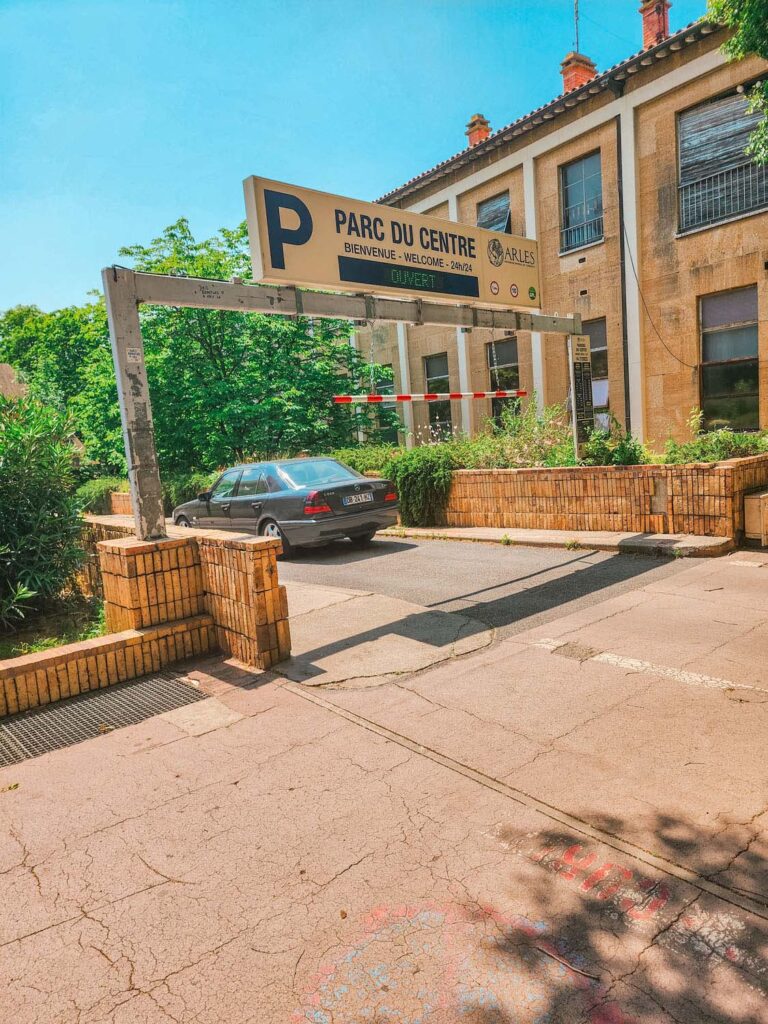
How Long is the Walking Tour
I would recommend spending an entire day in Arles. There is much to see and do besides the stops mentioned here on this tour. You’ll want to stop for food, and there are great shopping opportunities all along the colourful and quaint streets. As mentioned above, if you are staying in Arles, you can also split this tour up at your leisure. This means less walking all at once, and it will be a slightly more relaxed few days.
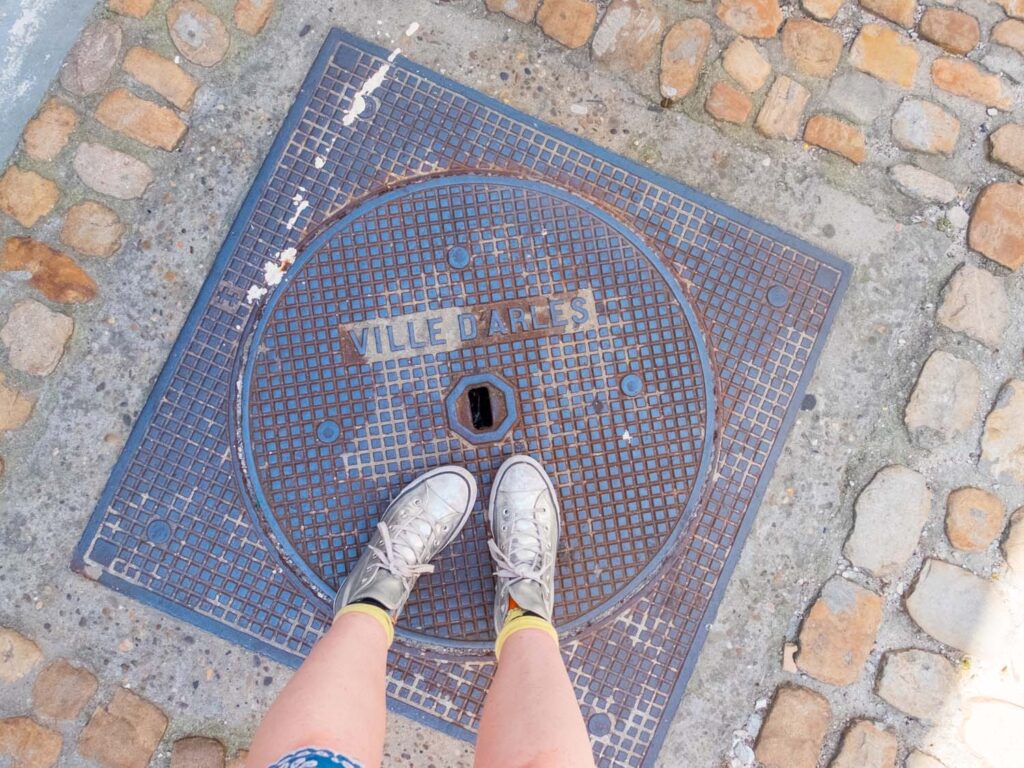
Alyscamps, the Roman Necropolis
Our journey back hundreds of years to ancient Arles begins on the city’s edge. Along what was once the ancient Roman road to Aurelia. Here hides a great Roman cemetery dating back to the 4th century AD. Behind the tall iron gate and under rows of poplar trees, we find the archaic Alyscamps, a Roman Necropolis.
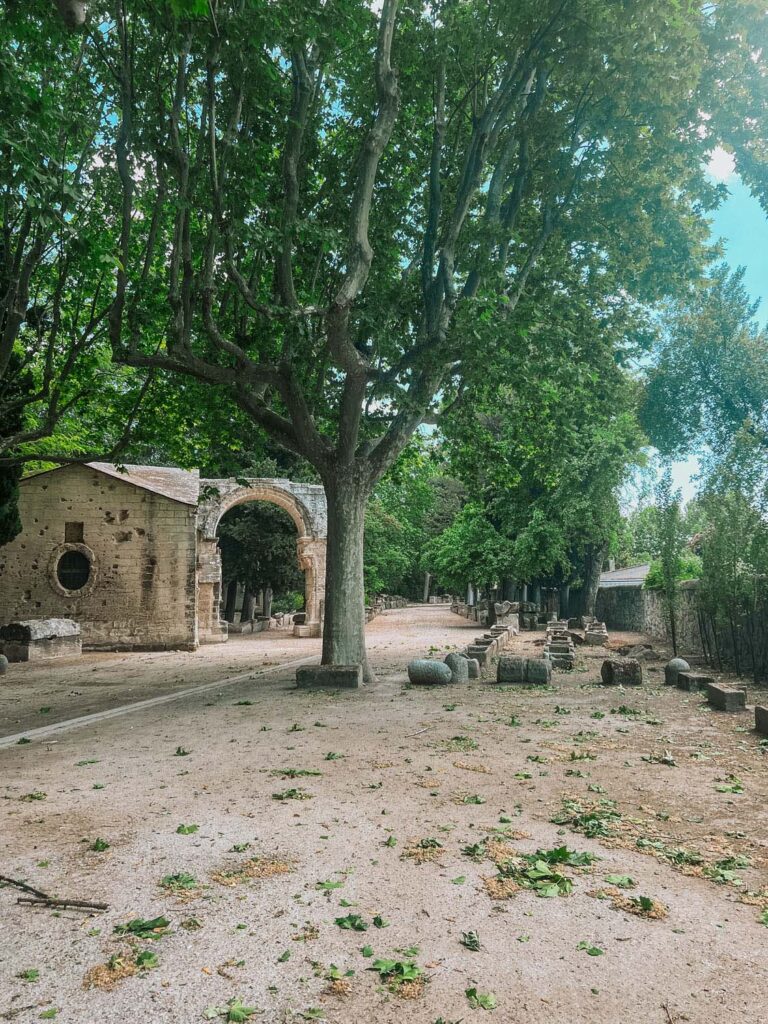
“Alyscamps” is a corruption of the original Latin name Elisii Camp. In English, we call this the Elysian Fields, which in Greek mythology refers to the afterlife paradise for heroic and virtuous souls.
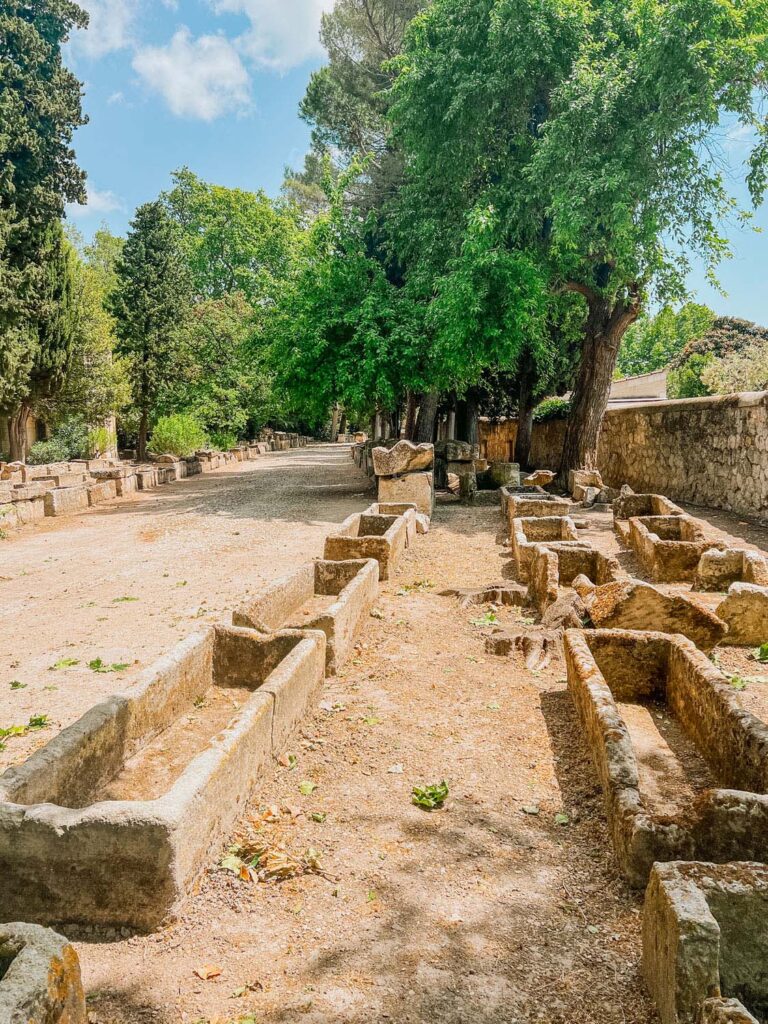
History of the Alyscamps
During the Roman Empire, burials were not allowed within the city limits. Therefore, it was commonplace for the roadways leading into cities to be lined with tombs and mausoleums. The cemetery followed the Roman practice of inhumation. Inhumation dates back at least to the Middle Paleolithic period. The oldest form of inhumation was done by hollowing out a trench in the ground and covering the body with rocks and dirt.
But for the Romans, buried their deceased in the ground inside stone tombs or sarcophagi. The burial ground accommodated various social classes, from common citizens to prominent figures of the time. This included everyone from military officers to merchants. Strolling down the main road, you can still see hundreds of these old sarcophagi and tombs lining the ancient Roman road. Stop to look at some of the details which can still be seen on these tombs, which are almost over 2000 years old.
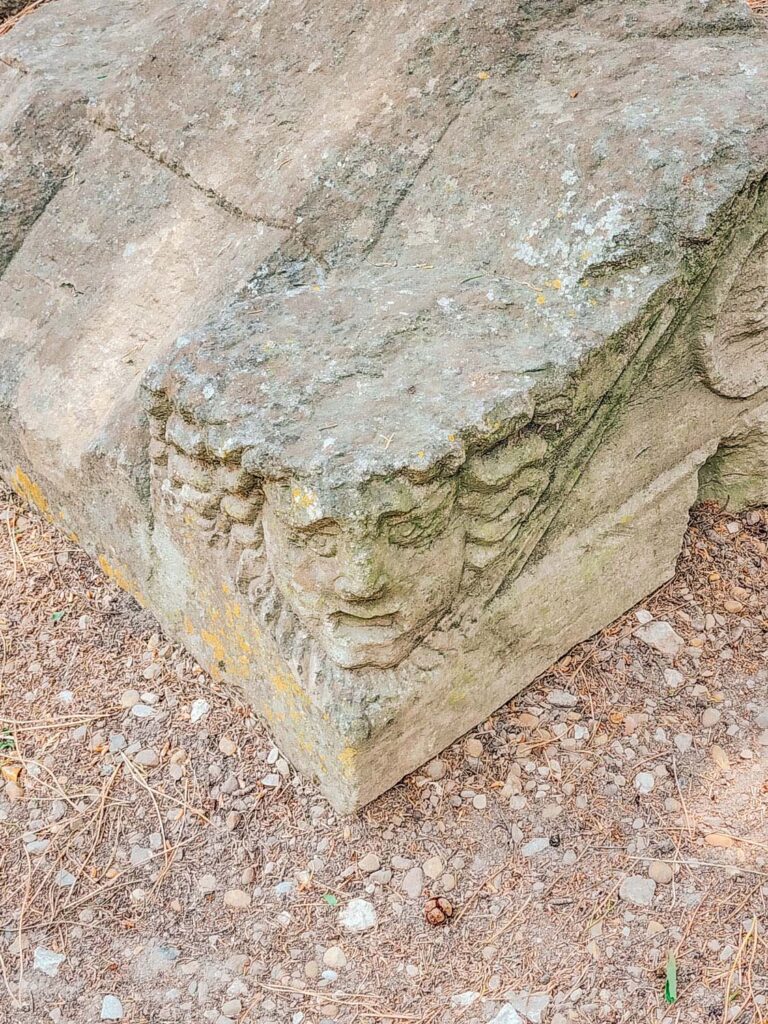
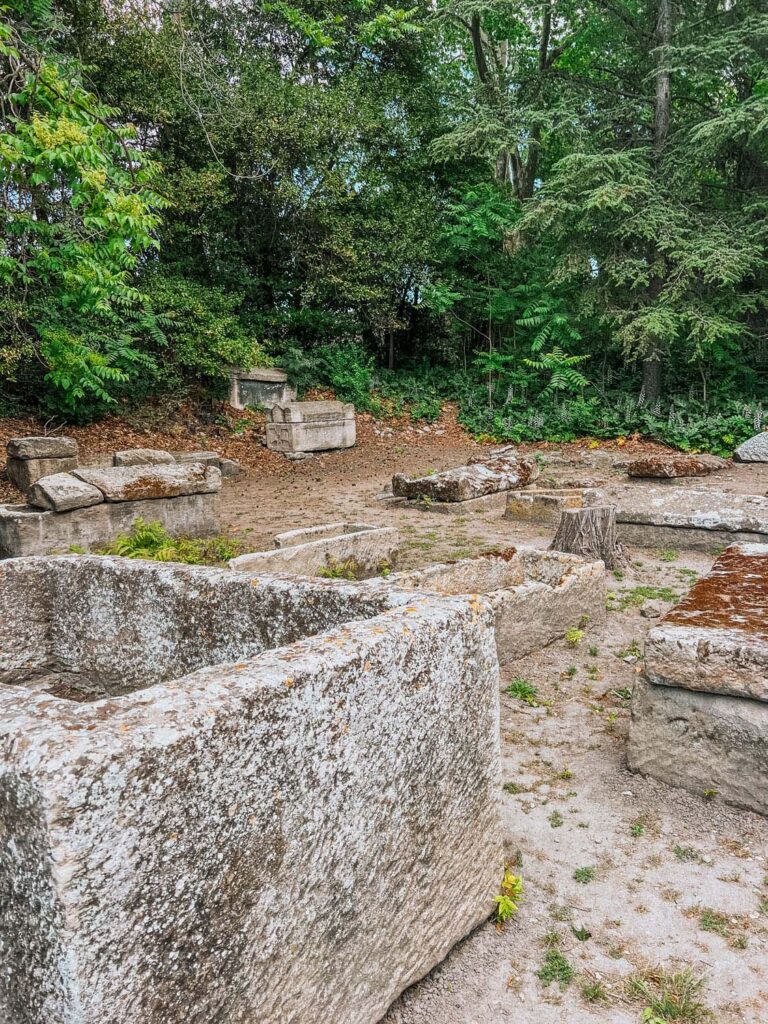
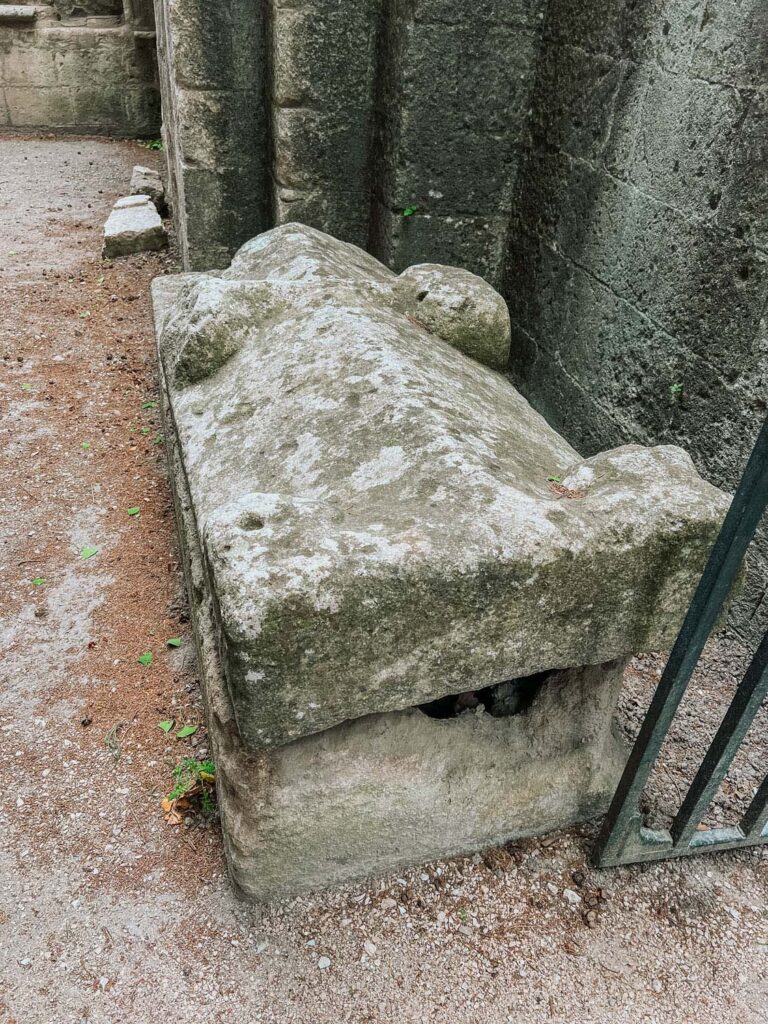
The Saints of the Alyscamp
With the spread of Christianity, the Alyscamps gained even greater significance. This was largely because Saint Genesius was buried here after his beheading and subsequent martyrdom. Saint Trophimus, the first Bishop of Arles, was also buried here. With these high-profile burials, people from all over the country started to want to have the honour of being buried here. The Rhone River became somewhat of a burial highway. Families had their loved ones shipped on boats in from all over Europe to be buried in such a distinguished cemetery. And tombs had to be stacked three layers deep to accommodate the influx.
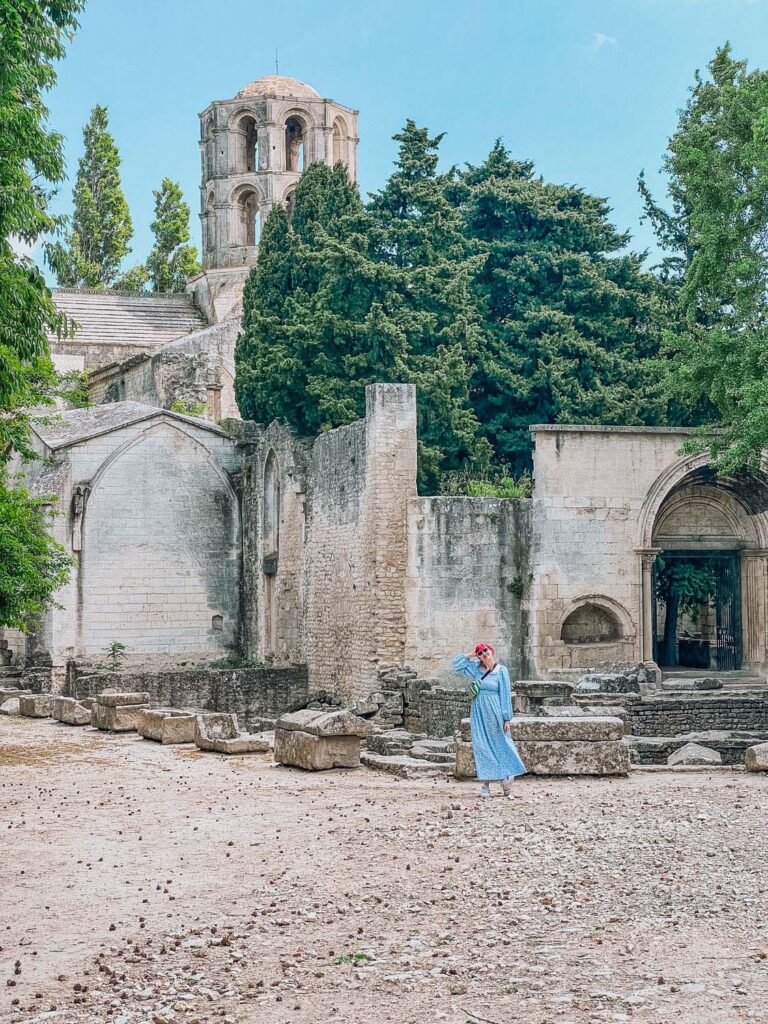
The Decline of Alyscamps
But in 1152, Saint Trophimus’ relics were moved to the Arles cathedral. This was the start of the end for the Alyscamps. Having lost its most important “resident,” its popularity dried up. And within a hundred years, the site was abandoned, and the tombs were systematically looted. Sarcophagi were given as gifts to distinguished visitors of the city. And many of the gravestones were dismantled to use as building materials. Some sarcophagi were even used as water troughs for cattle.
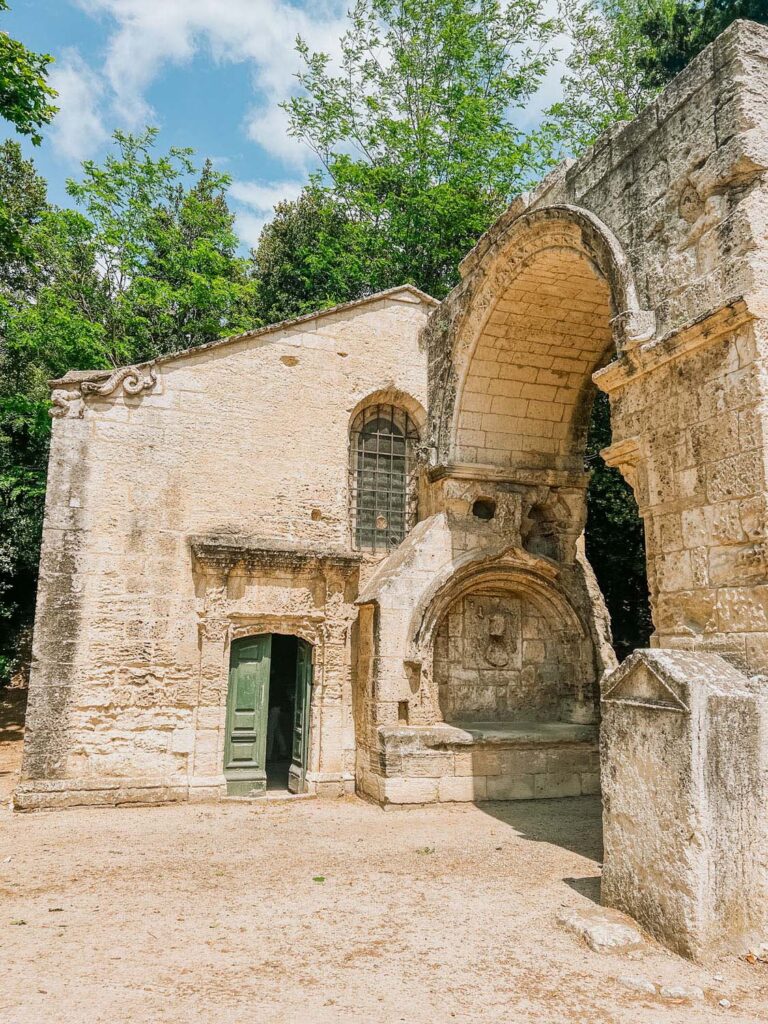
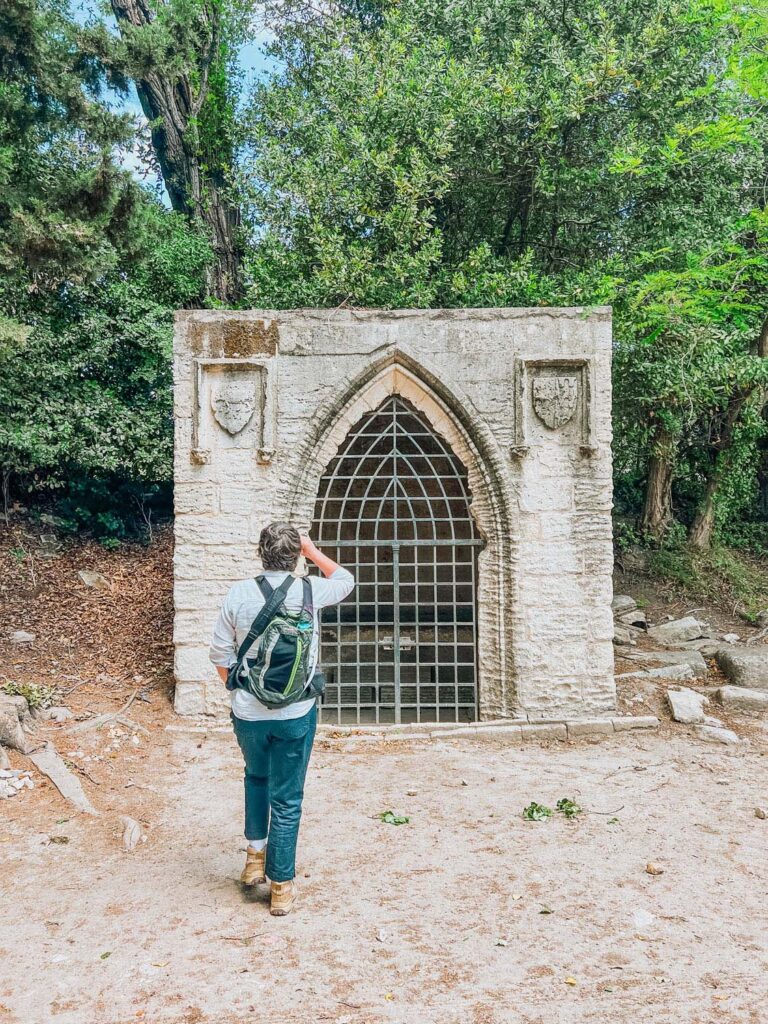
Van Gogh’s Alyscamps
But the Alyscamps never lost its natural beauty. And during the 19th century, the locals started to use it as a public park. Here they could stroll and remark on the ancient graves still present in the rubble. It was a favourite spot for Van Gogh when he lived in Arles. He even made a point to bring his fellow painting partner Paul Gaughin to the Alyscamps. Here each one made their own interpretation of the site’s picturesque and evocative atmosphere. To learn more about Van Gogh’s time in Arles, read our dedicated Van Gogh-ian Self-Guided Tour of Arles.
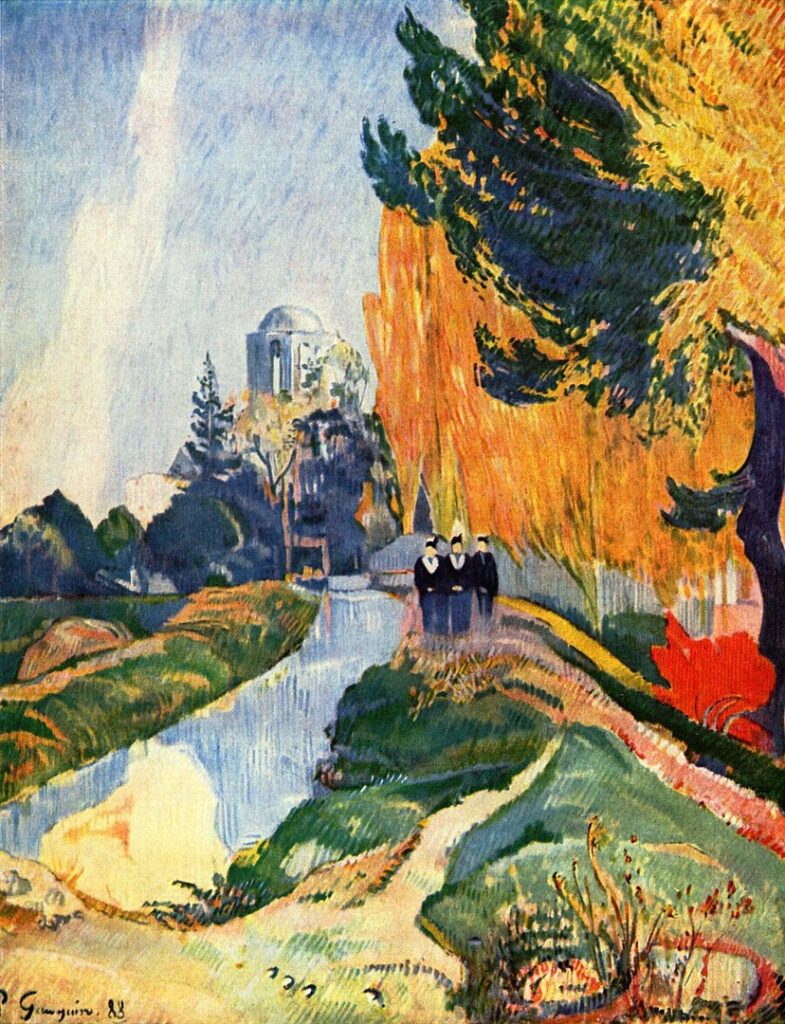
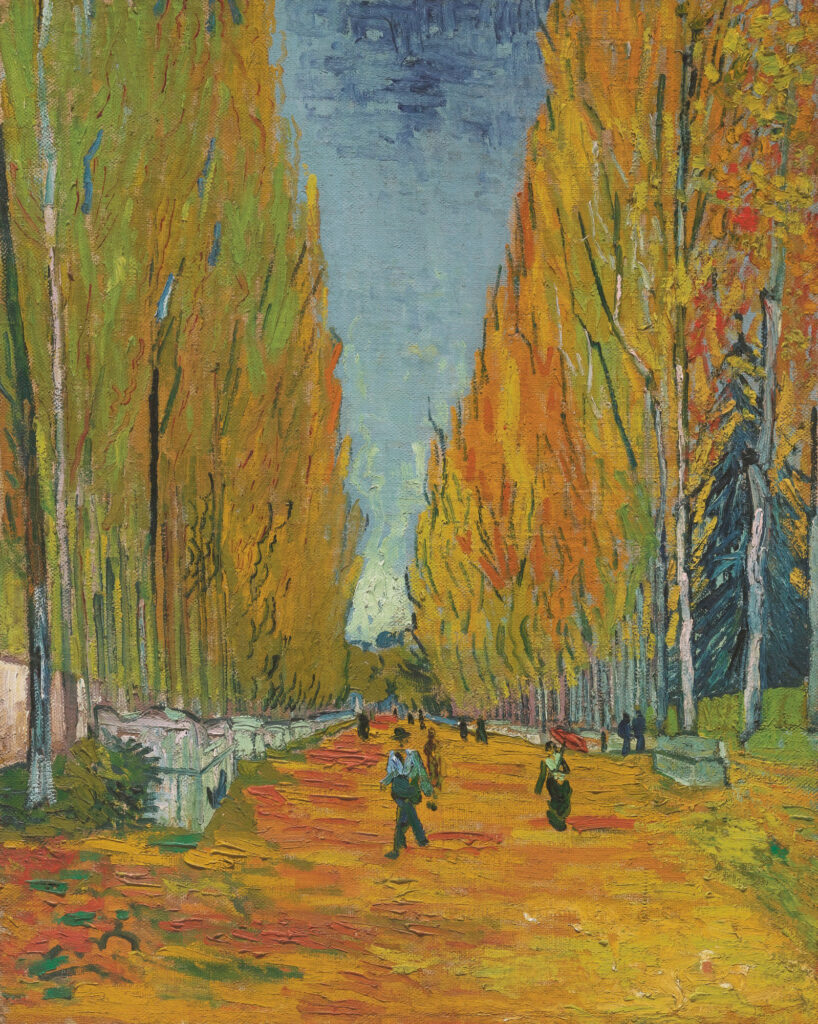
The Eglise Saint Honorat
Saint Honorat was Archbishop of Arles in the 3rd century. When he died in 429 AD, his tomb became a prominent pilgrimage site for the early Christians. In the mid-11th century, a Romanesque church was built inside Les Alyscamps and named after him. Much of the old church has fallen into ruins, but the east and west aisles still survive today. As well as the massive lantern tower that dominated the skyline inside.
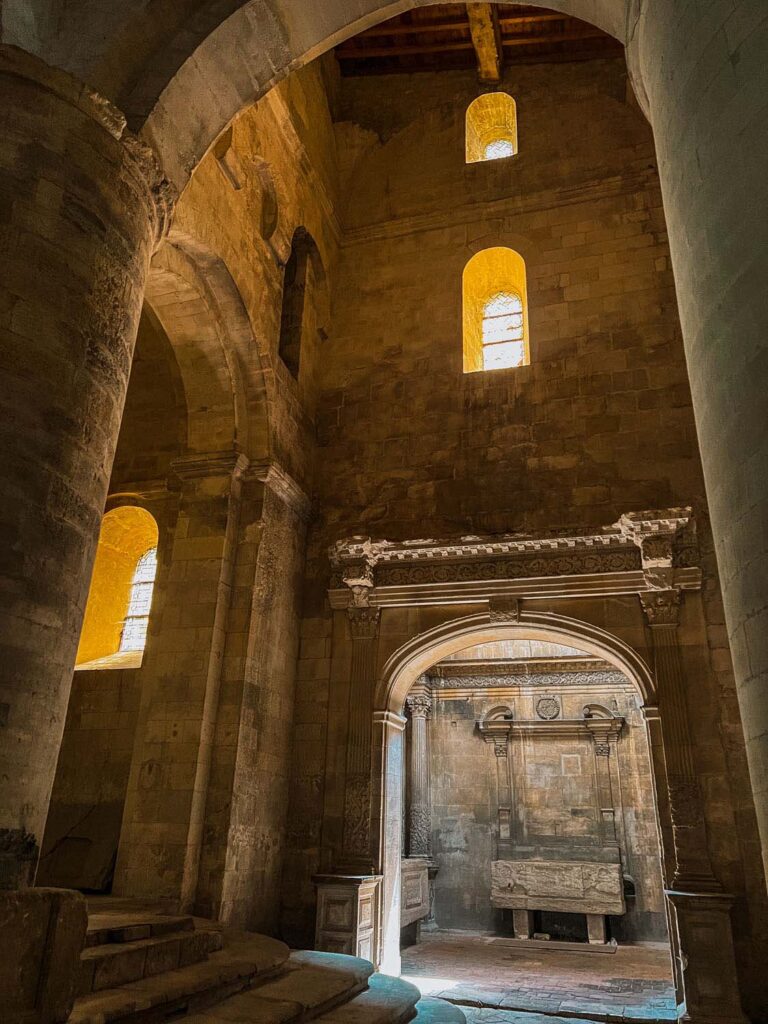
The building has almost entirely been left to the elements, and yet there are so many aspects of the original architecture that you can study inside. It’s a forgotten treasure, and even without being covered in stained glass and lavish ornamentation, there is such an earnest beauty to this church.
Individual Entry Price for Les Alyscamps: 5€
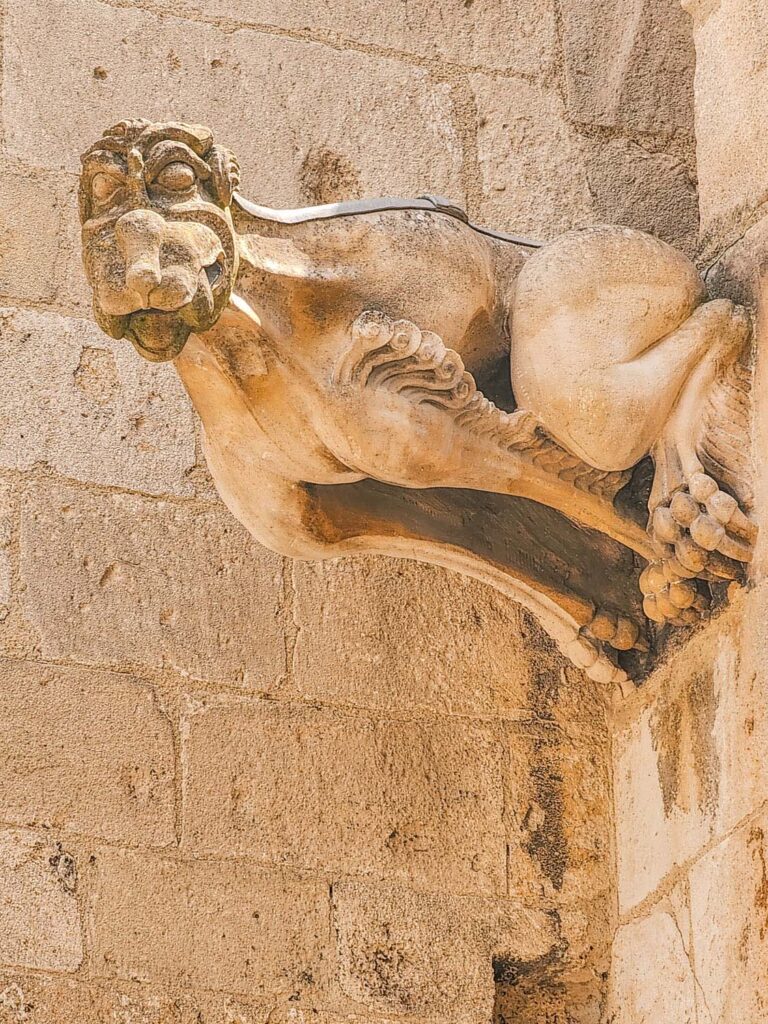
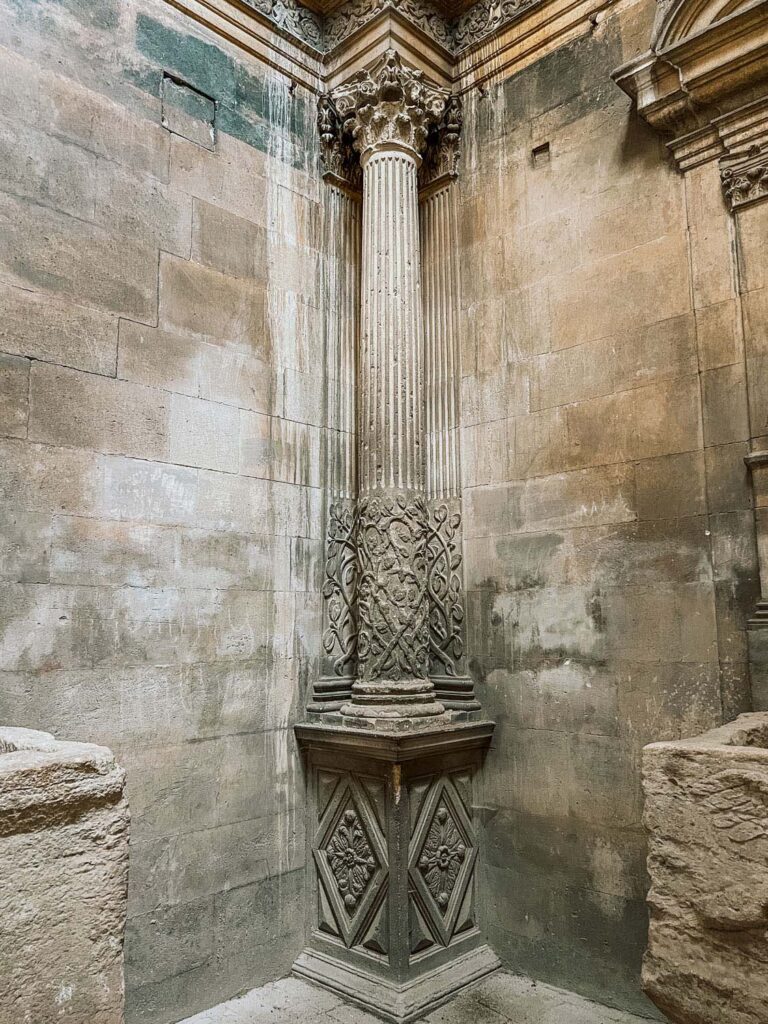
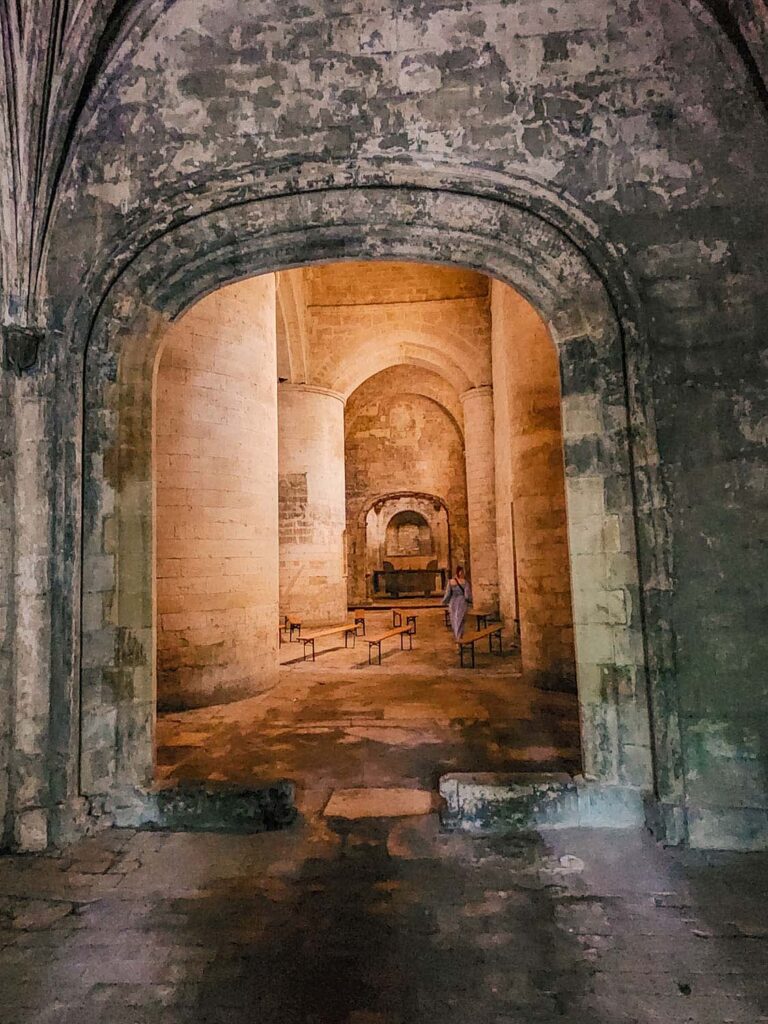
Tour des Mourgues
Walk northwest along Avenue des Alyscamps. On the northwest corner of Boulevard Emile Combes, you’ll see a great stone wall called the Tour des Mourgues. The Mourgues Tower is the most well-preserved of the circular towers that flanked the city’s defensive ramparts. The tower gets its name from the nearby monastery founded by Bishop Césaire in the 6th century. The monastery was the primary residence of nuns (called morgues in Latin.) Initially, The tower was circular but modified in the 14th to this more octagonal appearance.
Théâtre Antique d’Arles
Walk along Mnt Vauban street, turning up the Rue de la Calade as it curves around the back of the iconic Roman Theatre. Built in the 1st century BC, this well-preserved theatre was built to accommodate up to 8,000 spectators! The theatre was constructed during the reign of Emperor Augustus. Unlike the Colosseum or Roam Amphitheatre, which were the centre of gladiatorial events, this building served as a venue for various theatrical performances. Much lighter and less violent entertainment for the Roman public to enjoy.
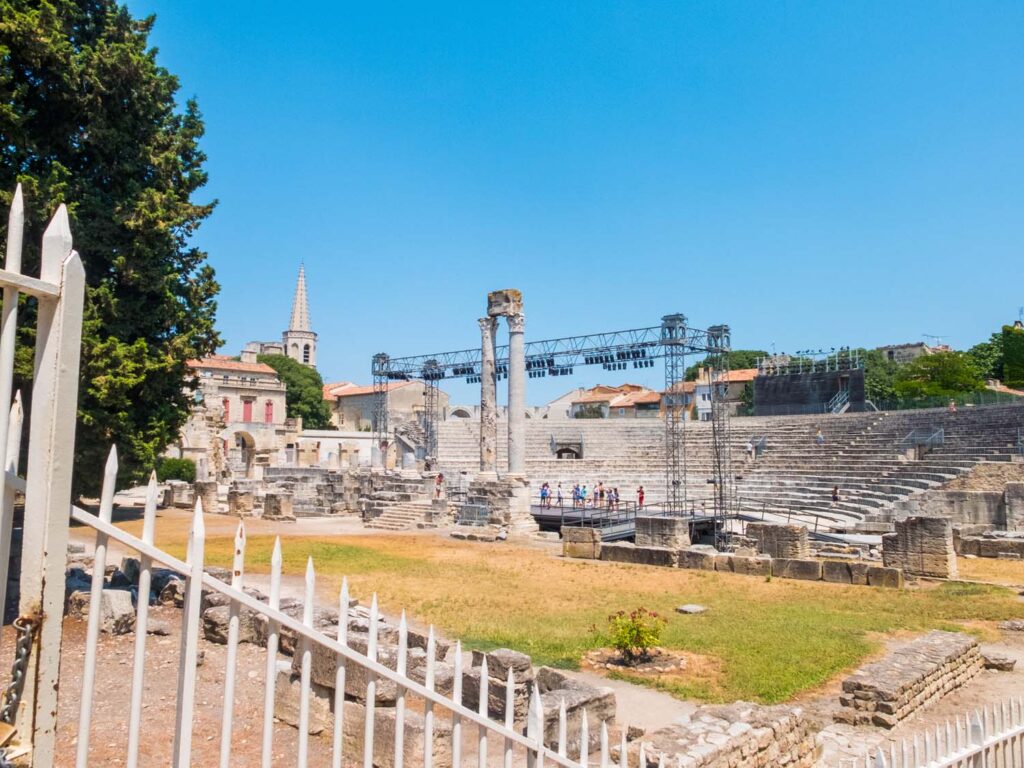
History of the Roman Theatre of Arles
The theatre’s design resembles a Roman amphitheatre which has been cut in half. Rows and rows of tiered seating are wrapped around the stage in a semi-circular shape. The structure is built into the side of a hill, maximizing its acoustics and providing excellent views of the stage from all angles. Originally, the would have been a wooden roof and a large rear wall at the back of the stage. Today, only the orchestra section, seating rows, and two large Corinthian columns survive. Little more than a few pieces of rubble remain of the once impressive rear wall, which would have acted as a theatrical backdrop for the actors.
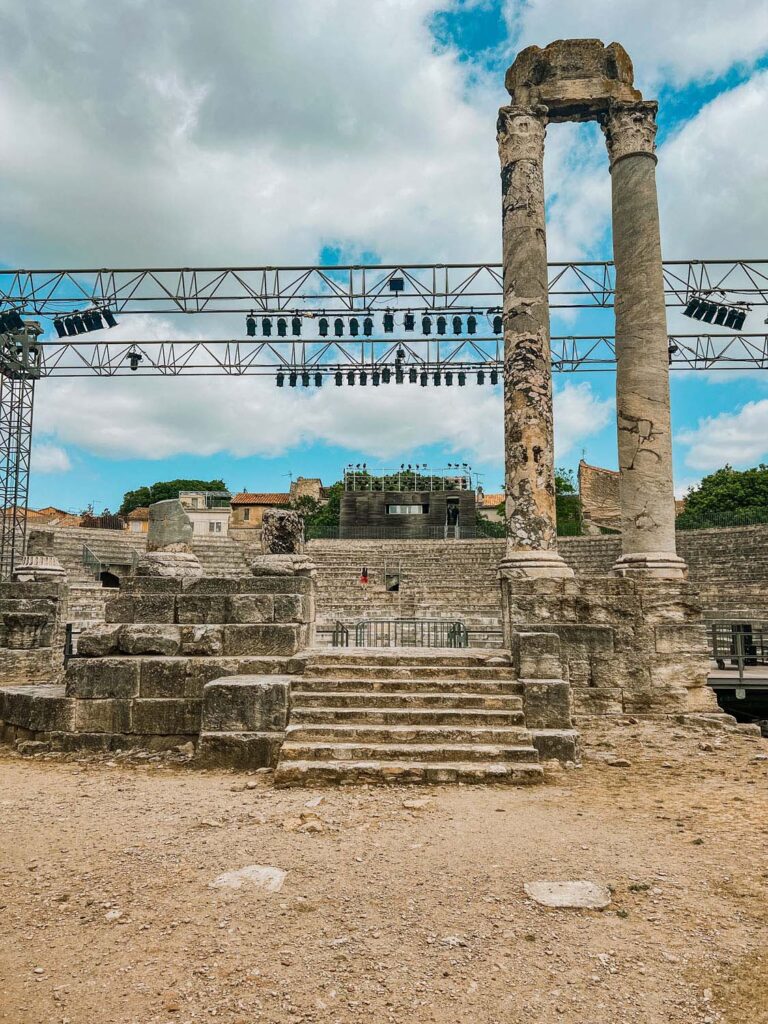
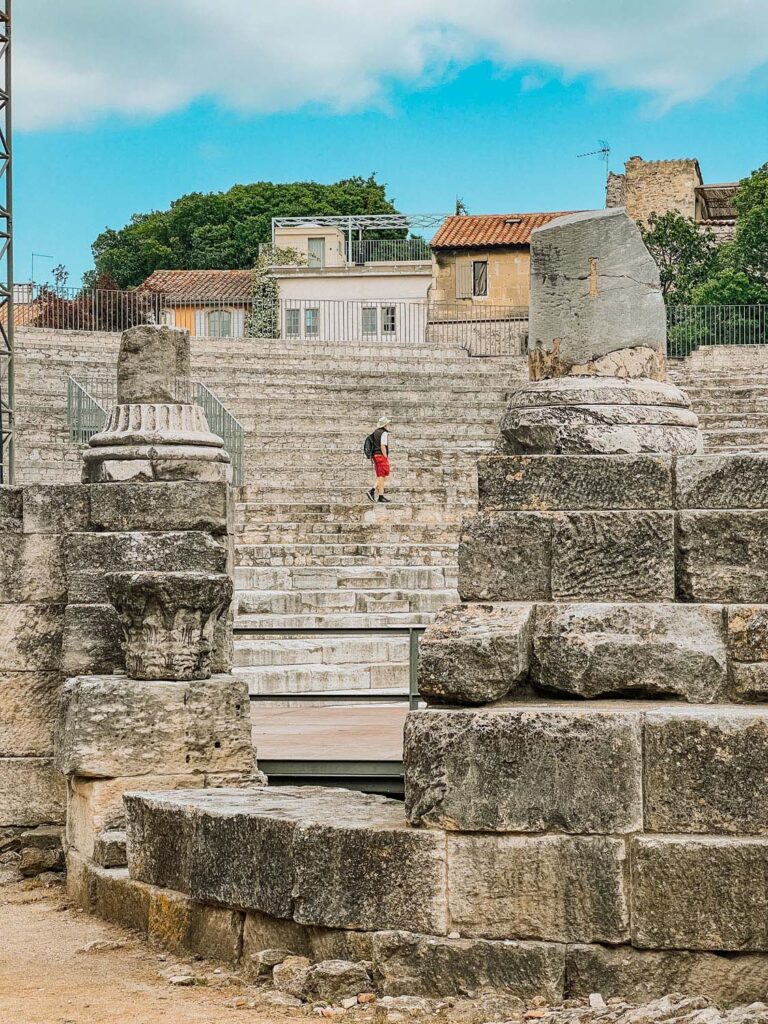
As a Roman citizen of Provence, you could attend everything from theatrical plays, musical performances, poetry readings, and political and religious gatherings here in the Roman Theatre. Just as theatre is today, this place would have been essential to the town’s social and cultural life.
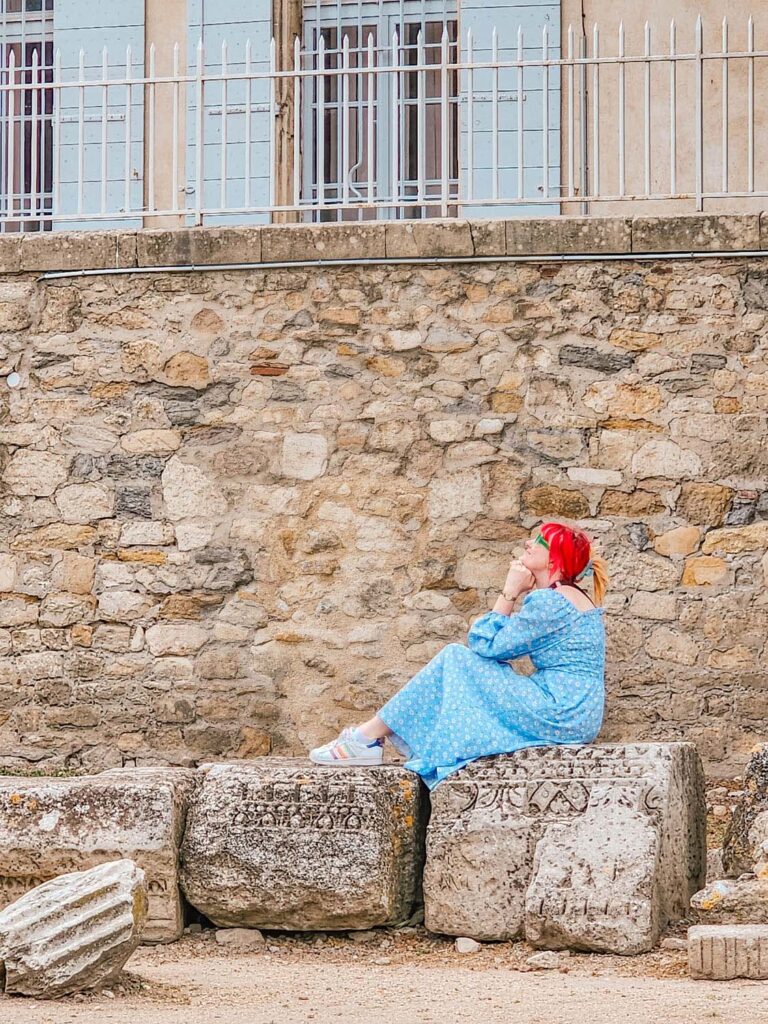
Like many other ancient Roman structures, the theatre gradually disappeared during the Middle Ages. Over the centuries, parts of the theatre were repurposed for other constructions. The ruins were later rediscovered and excavated during the 19th and 20th centuries.
Today, this theatre is still used for the very same purpose it once was, to host musical and theatrical events. When we visited, they were performing a soundcheck for the concert later that evening. The scaffolding of the lighting rig carefully places around the stone outline of the old stage. It is so nice to see these sites still in use today, rather than simply being a relic of a bygone era.\
Individual Entry Price for Roman Theatre of Arles: 9€
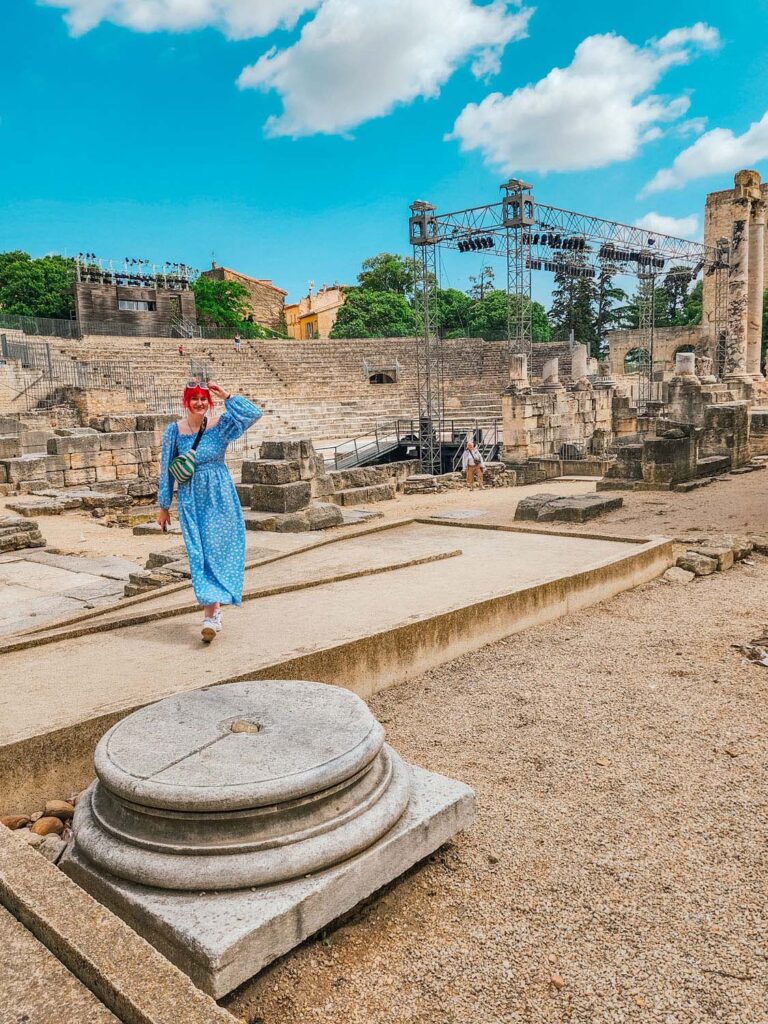
Arles Amphitheatre
Make your way back onto the Rue de la Calade onto the Rue Porte de Laure, which wraps around the giant arches of the majestic Arles Amphitheatre. The Arles Amphitheatre dates back to 90 AD. The Arena was primarily used for hosting various public spectacles and gladiatorial games. This enormous Arena could hold an estimated 20,000 spectators.
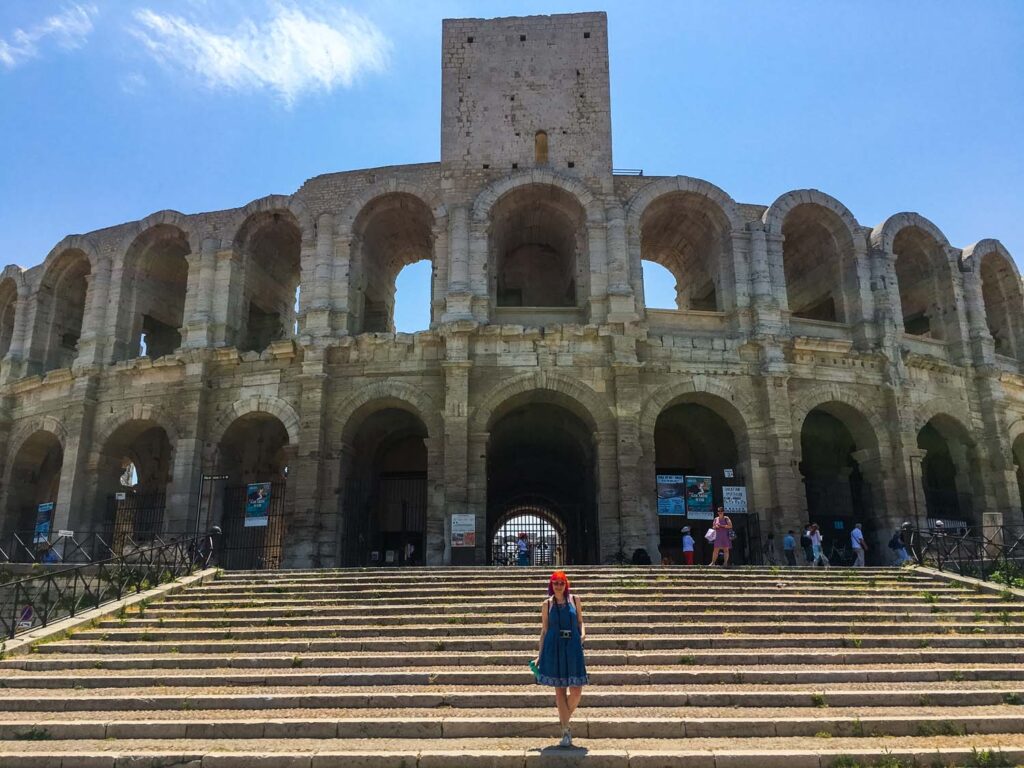
Gladiatorial Events
Gladiatorial contests were a central part of Roman entertainment. These events served to entertain and satisfy the masses while also reinforcing the power and authority of the Roman Empire. These battles were thrilling and often brutal spectacles in the Roman amphitheatre.
Gladiators in Arles were typically slaves, prisoners of war, or condemned criminals who were forced to fight to the death for the audience’s amusement. These fighters were trained in specialized gladiator schools, known as ludi, where they honed their combat skills and developed signature fighting techniques.
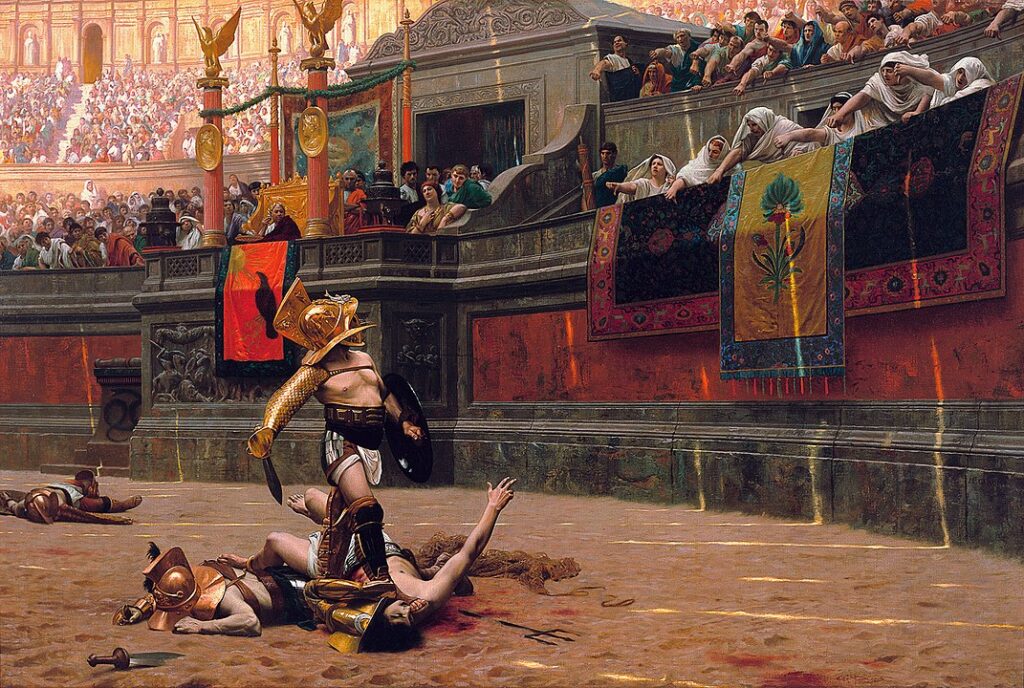
The spectacles in Arles included various forms of combat, such as one-on-one duels, group battles, and even confrontations with wild animals like lions and bears. The contests were often organized and sponsored by wealthy individuals or the Roman government to gain popularity and political influence.
As social attitudes changed, the demand for such violent spectacles waned. And by the 5th century AD, the tradition of gladiatorial games in Arles began to fade, and the amphitheatre was eventually repurposed for other activities.
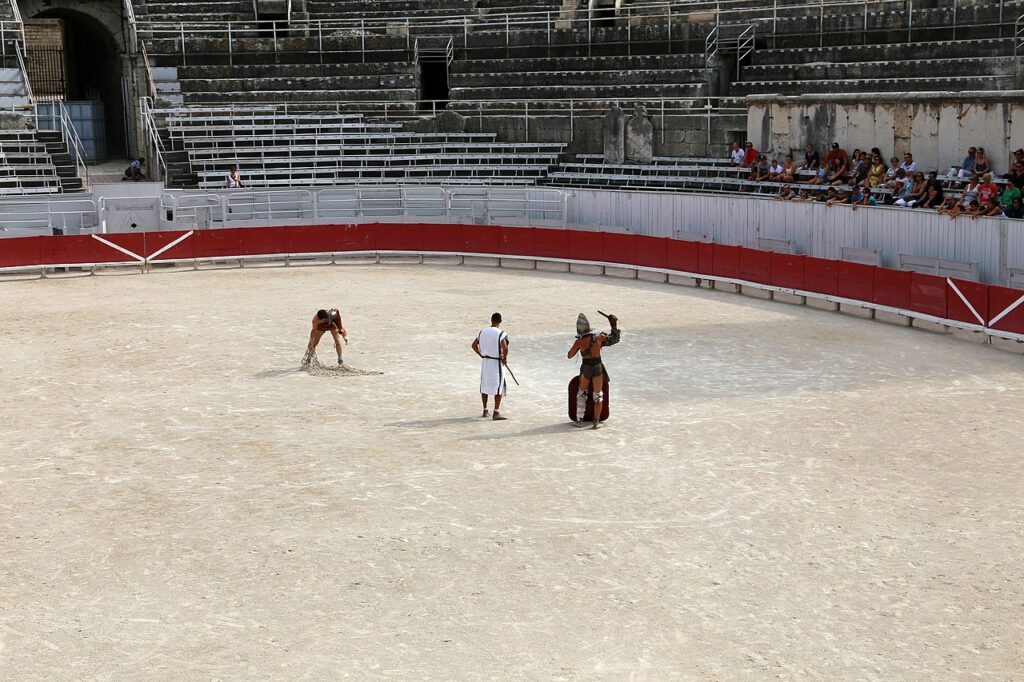
Amphitheatre in the Middle Ages
After the fall of the Roman Empire, the theatre’s purpose shifted. In the Middle Ages, it was transformed into a fortress to protect the inhabitants of Arles. Four towers were added to either side of the fortress to keep a lookout over the city. Houses, stables, and workshops were built right into the arches of the arena. It was indeed a town within a town, with a square where the arena once stood. There was even a chapel inside. If you look closely at the walls when you enter, you can still see holes where different structural supports were installed to build two-story houses inside the archways.
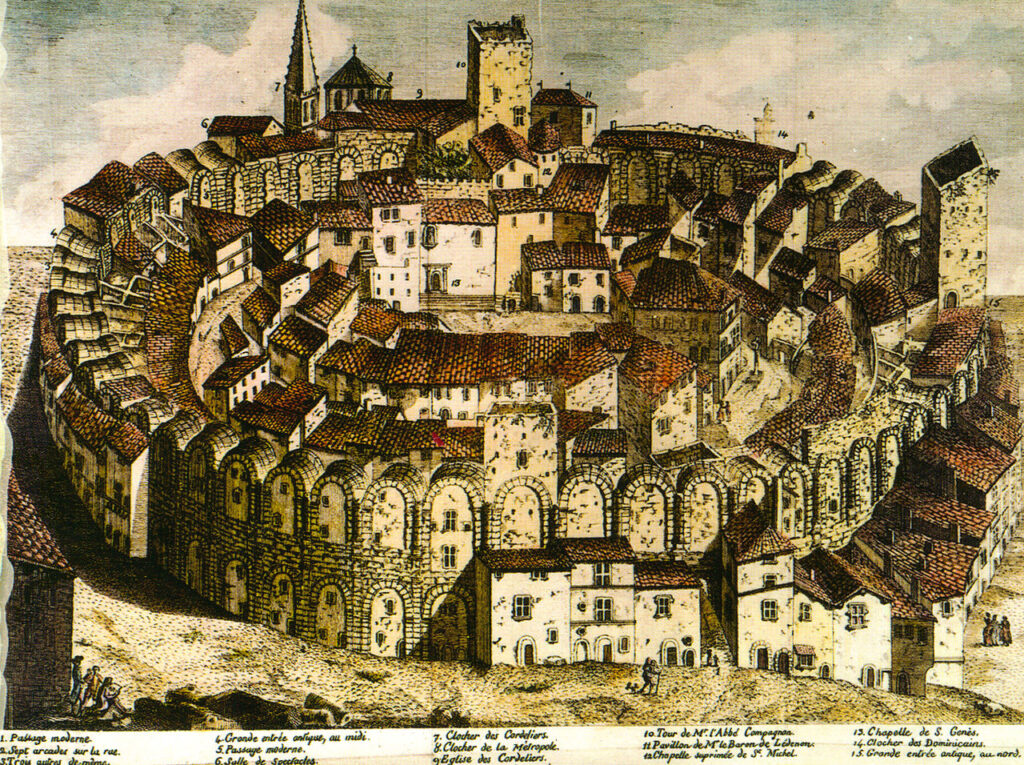
Arena Layout
Entering this elliptical-shaped amphitheatre, you can really appreciate how this is a masterpiece of Roman engineering and architecture. It measures about 136 meters long and 109 meters wide, and its exterior reaches a height of around 21 meters.
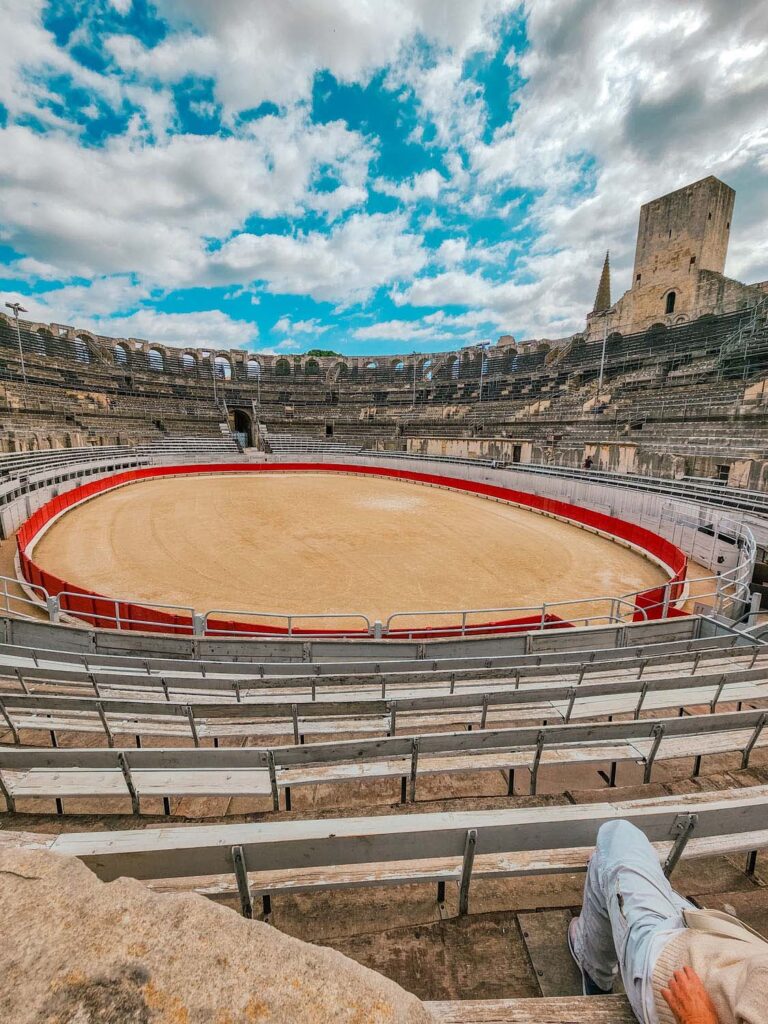
The structure consists of two levels of arches, a grand entrance, and a complex system of corridors, galleries, and staircases that allow easy access for spectators. You can access almost all these areas today with your entry ticket. Allowing you to really get a feel of the entirety of the arena.
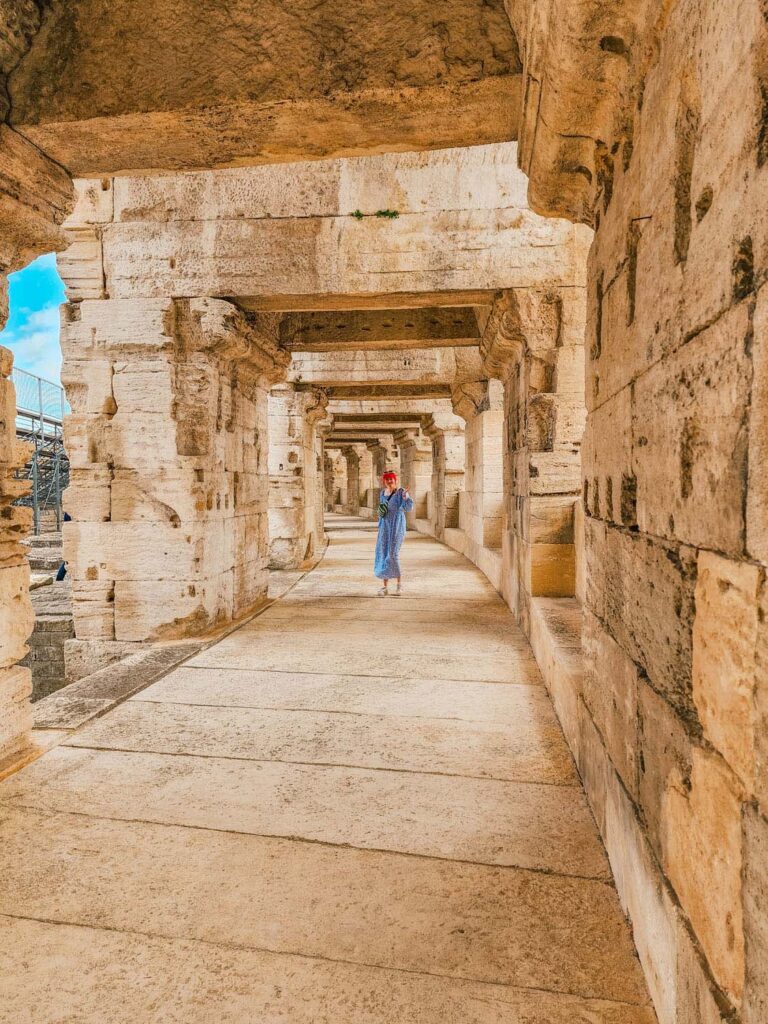
The Interior
While the main attractions were gladiatorial contests, other events included mock sea battles, animal hunts, and public executions. Climb to the top of the Arena for the most incredible panoramic views of the city and the surrounding countryside.
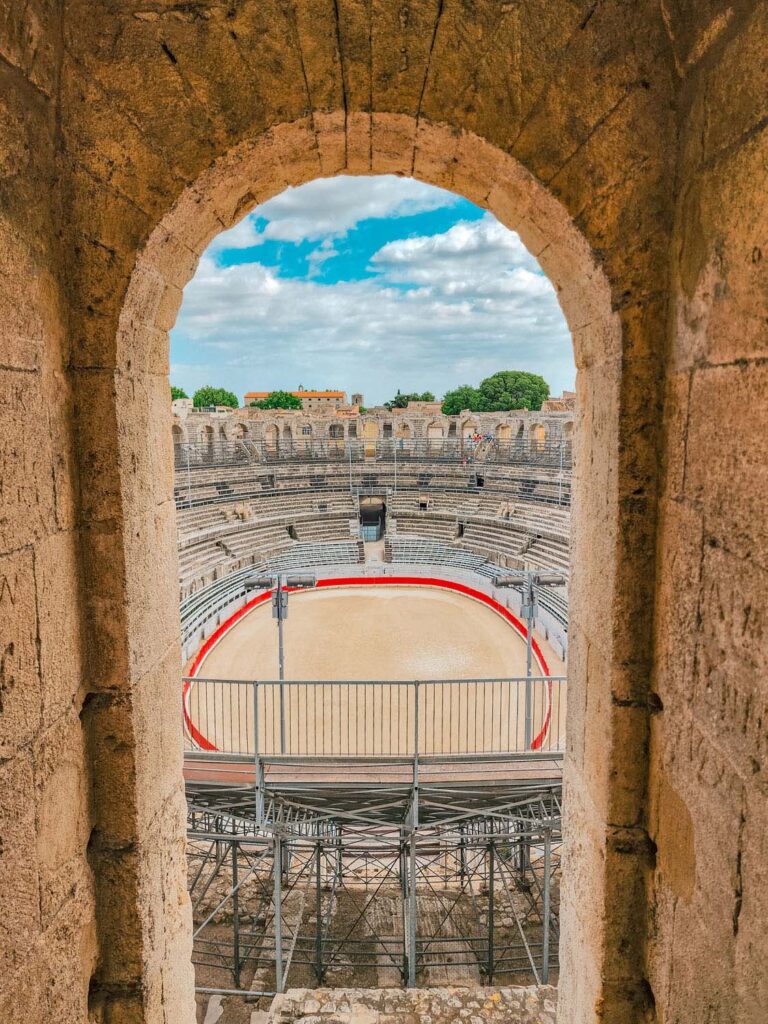
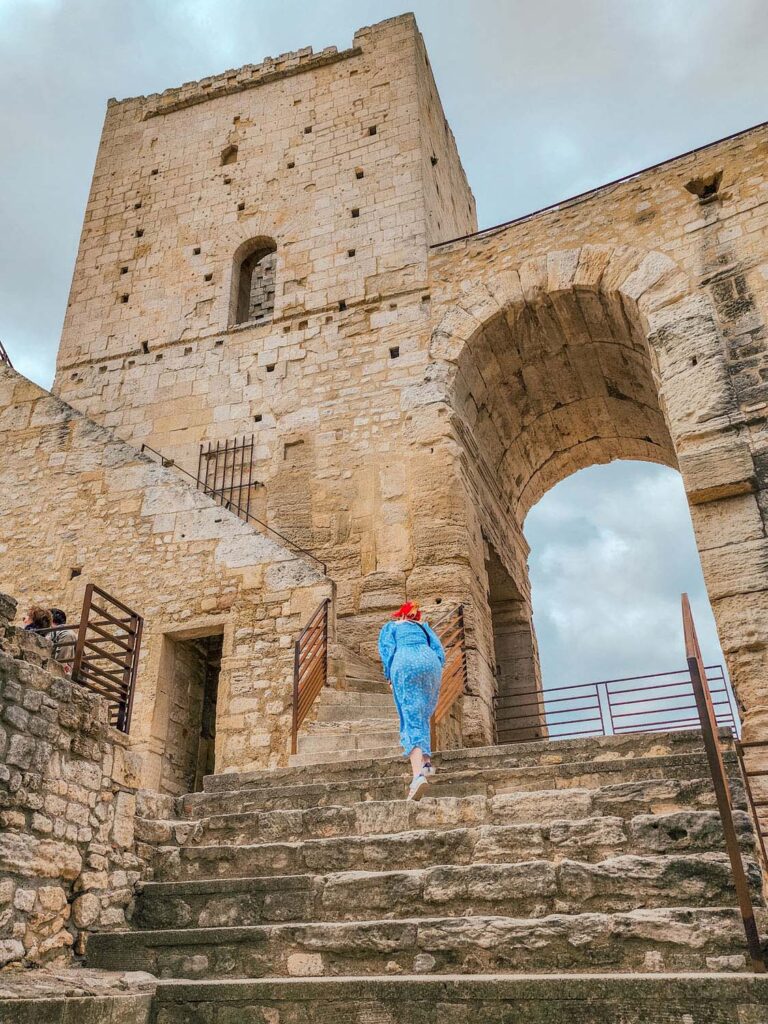
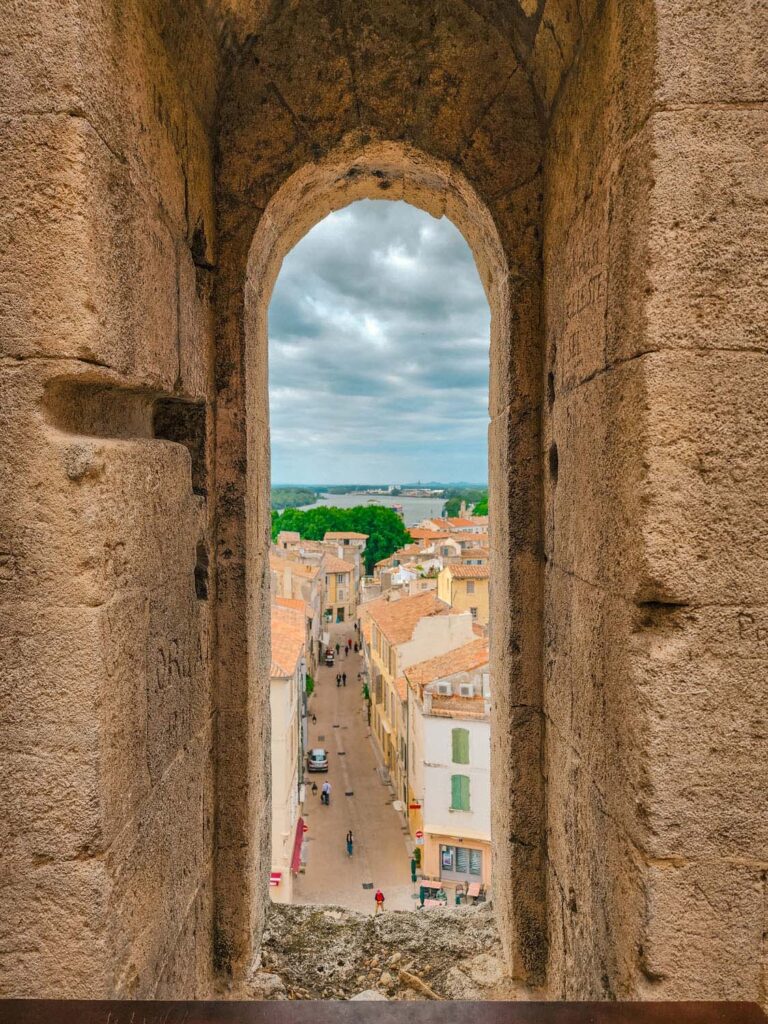
Bullfighting
In the 19th century, efforts were made to restore and protect this iconic structure. But instead of hosting Gladitorial events, it was repurposed into a bullfighting arena. Bullfighting in Provence is known as “Course Camarguaise.” It differs from the well-known Spanish-style bullfighting in that the bull is not killed in the theatre. Moreover, the focus is on the agility and daring of the participants rather than inflicting harm on the animal.
During Course Camarguaise, agile and skilled participants, known as “raseteurs,” attempt to remove small tassels or rosettes attached to the bull’s horns. The raseteurs use a claw-shaped hook called a “raset” to try to grab them. The objective is to demonstrate their bravery and deftness in evading the charging bull while trying to collect as many rosettes as possible. All the while dressed in spectacular costumes that sparkle and shine in the sun and impress a captive audience. Van Gogh himself loved to frequent these events and even captured a vibrant scene in the arena of spectators viewing the bullfighting games.
Individual Entry Price Arles Amphitheatre: 9€
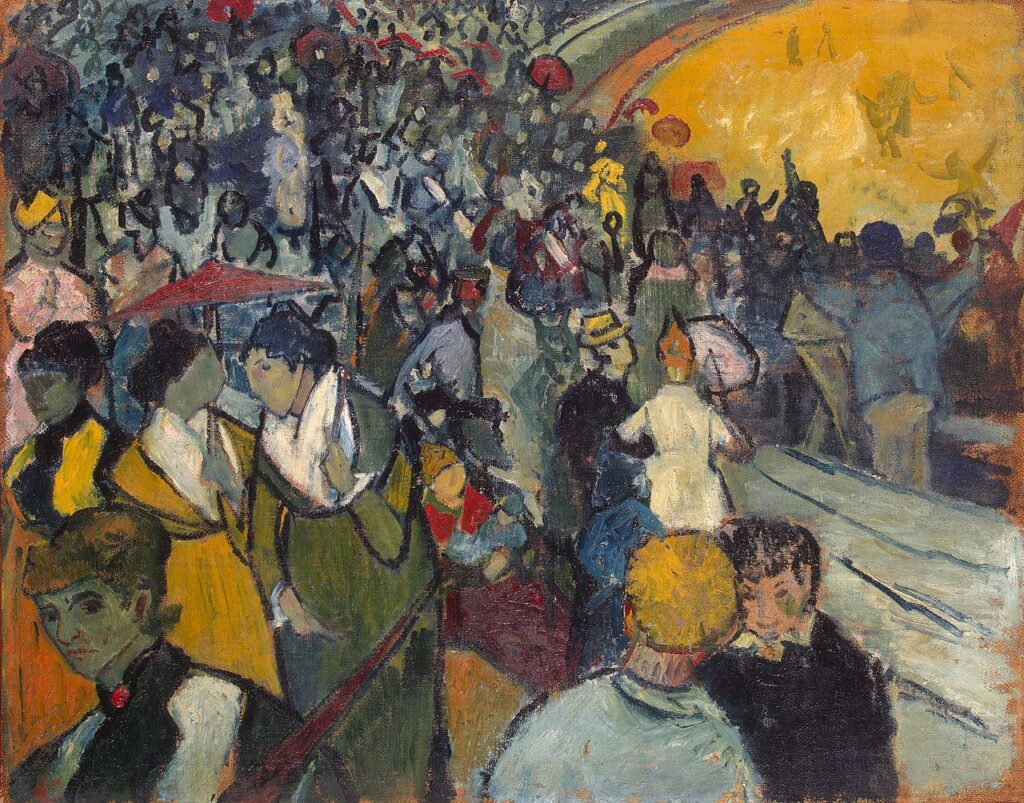
Rue Voltaire
After finishing touring the Amphitheatre, take a walk away along the Rue Voltaire. But sure to look back down the street towards the Amphitheatre as I loved this framed view of it.
The Rue Voltaire is an adorable cobblestone street flanked on all sides by charming shops, crawling ivy, and those classical Provencal brightly painted window shutters. This is the perfect place to grab a bit to eat, as the people-watching opportunities along this road are unmatched.
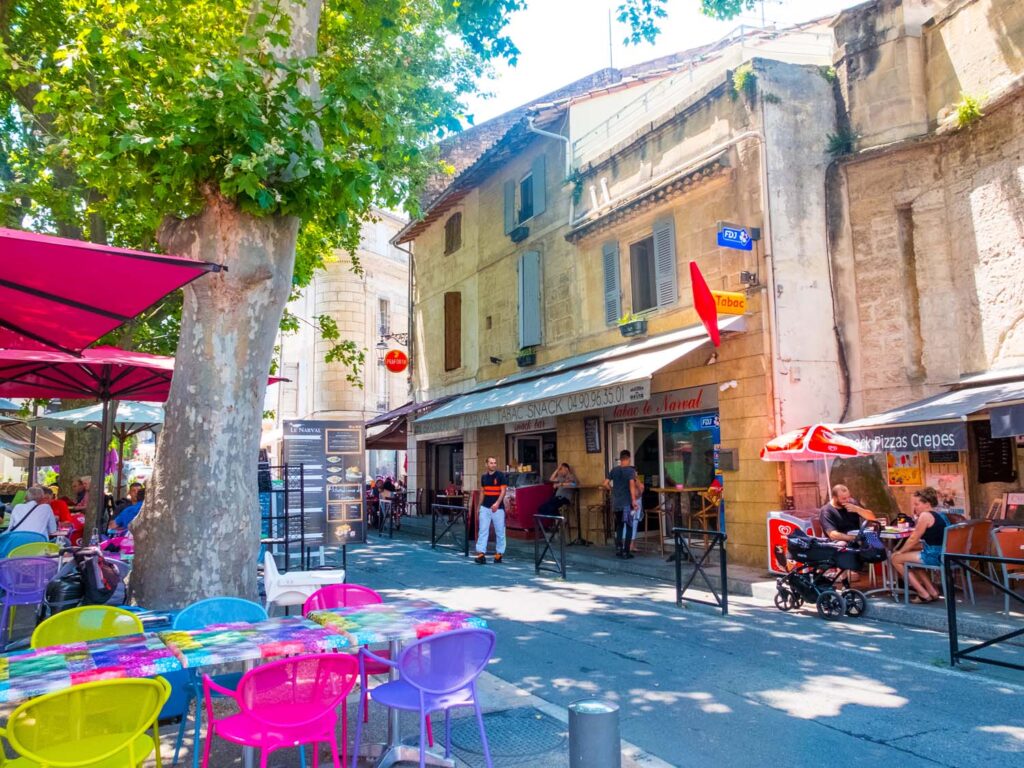
Bistrot le Mistral is a great choice for a hyper-local French menu that changes daily. Don’t let the handwritten chalkboard menu scare you away. Chalkboards are the best indication that the food is fresh, as it signals the dishes change with the season or, indeed, with the daily whims of the chef! For such artistic French plating, the prices are very affordable. A must-check out while you’re in town
Amédée Pichot fountain
Returning to the road, stop to admire the incredible Amédée Pichot fountain, found at the intersection of Rue Amédée Pichot and Rue Voltaire. This elegant fountain and accompanying mosaic were built in honour of the 19th-century journalist and writer Amédée Pichot. The installation was a love letter from Pierre-Amédée Pichot to his father. When his father was alive, he purchased a monumental painting from French artist Paul Balze at his salon in Paris. The painting was an allegory of poetry inspired by a painting by Raffaello. Before Amédée Pichot died, he wanted to gift the painting to the people of the city of Arles. So they could enjoy its beauty instead of the painting being cooped up inside his house. But the city couldn’t find an appropriate location, and his dream was abandoned.
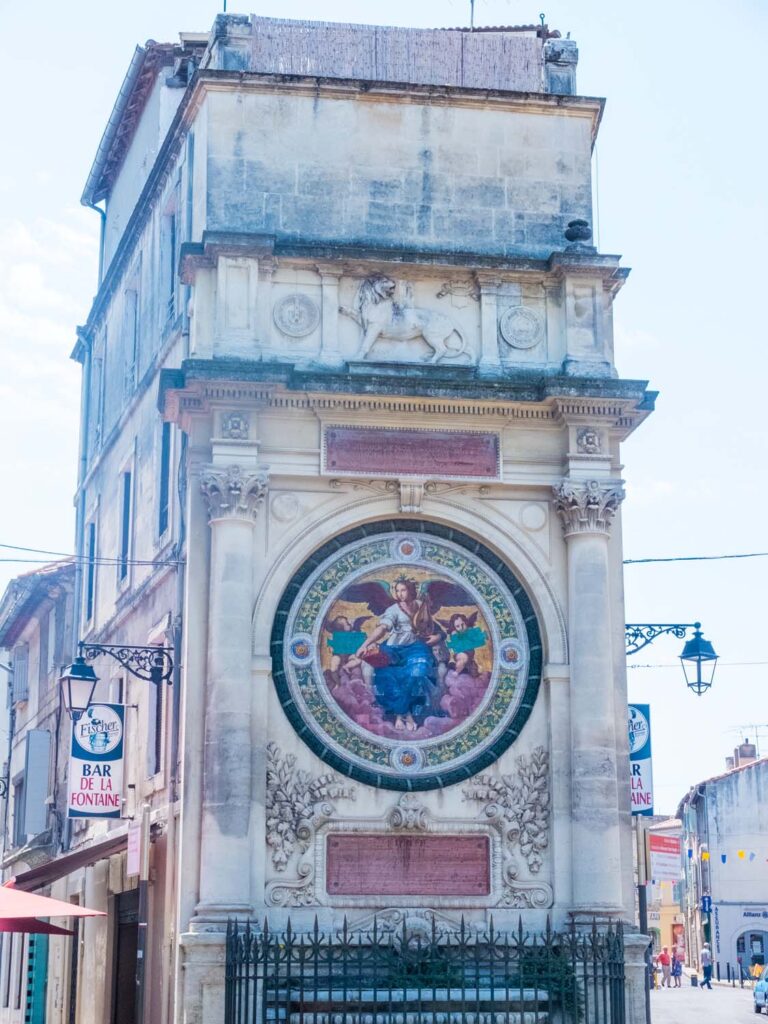
After his father died, Pierre-Amédée Pichot was driven to accomplish the goal that his father had abandoned. On a recent visit to Paris, he was inspired by the fountain outside the Place Saint Michel, which stood on the exterior of a large wall. Pierre managed to buy the house on the corner along Rue Voltaire to use its prominent exterior to build this monument. But you can’t simply hang a painting outside in the elements. So instead, he had a great reproduction artist reproduce the painting on enamel ceramic tiles. Now the painting is preserved in enamel and hanging in such a place of honour. Drawing the eyes of all those who pass it by.
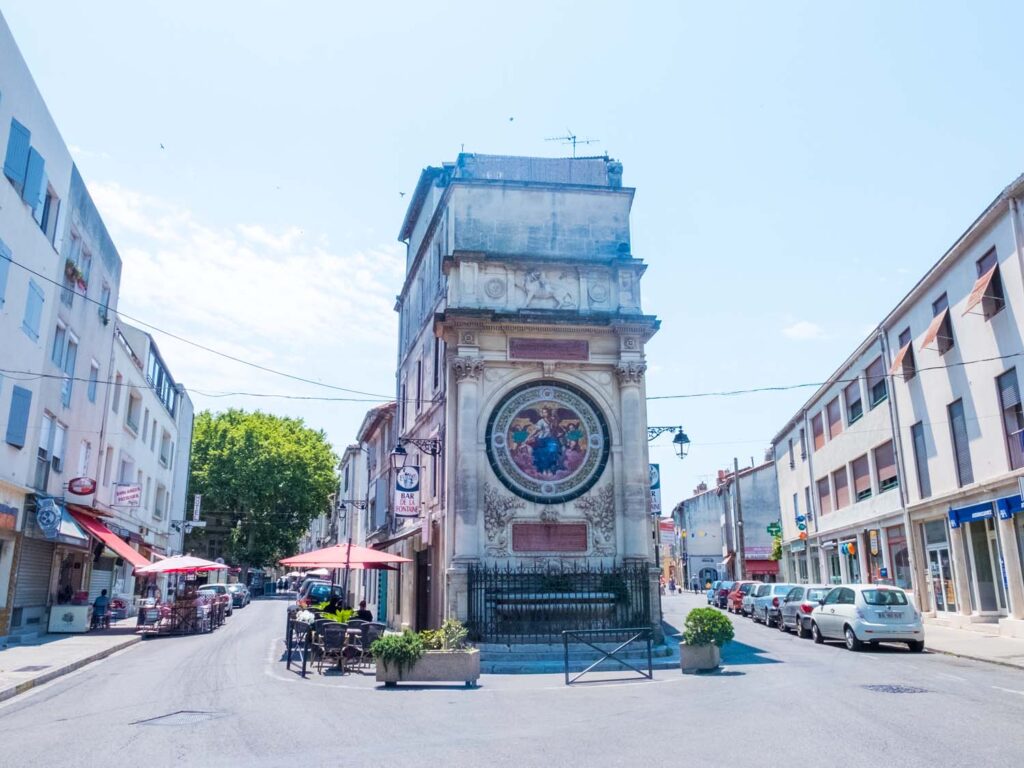
The Porte de la Cavalerie
At the end of the Rue Voltaire stands the great Porte de la Cavalerie, also known as the Cavalry Gate. This ancient Roman gate was where people would have entered the city for the first time along the long road to Arles. The enormous, crumbling, stone defensive walls date back to the 3rd century AD. Sturdy stone towers on either side of the arched opening are called the “barbicans.” They were designed to reinforce the gate’s defensive capabilities, allowing guards and soldiers to monitor and defend the entrance effectively.
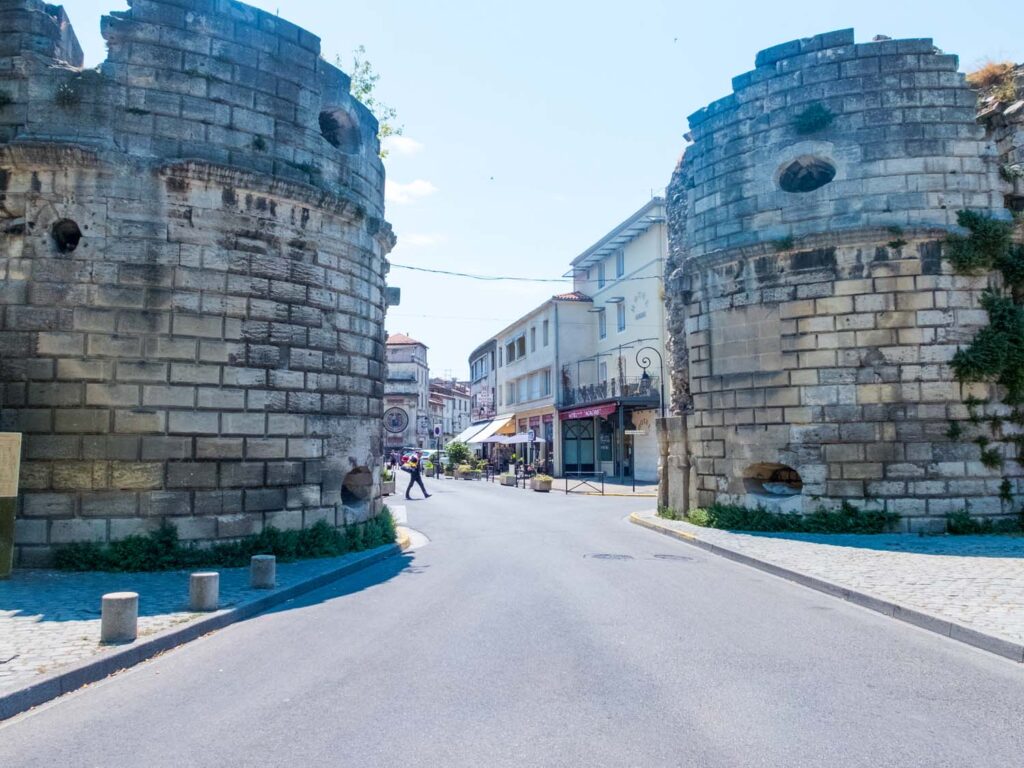
Quay Marx Dormoy
Walk through the gates and turn west along the Quay Marx Dormoy, which curves around the famous Rhone River. René Marx Dormoy was a French politician. During his tenure as mayor, he played a significant role in French politics and administration, advocating for social reforms and progressive urban development. Dormoy’s commitment to public service and contributions left a lasting impact on the communities he served, and he is given pride of place here in Arles with such a picturesque pathway named after him.
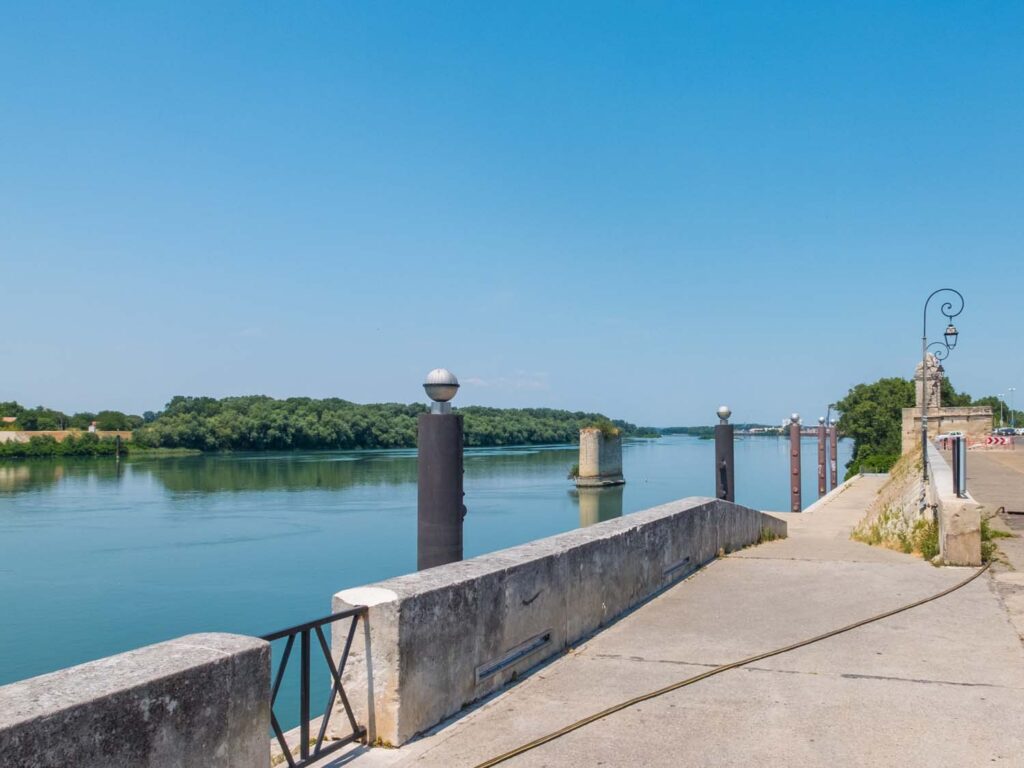
Wander along the riverside walk for a few minutes. Gazing out at the exquisite landscape which wraps around the river. The Rhône River holds immense historical importance to Arles, shaping its identity and playing a pivotal role in its development over the centuries. During the Roman Empire, the river connected Arles to the rest of the Empire. With goods being both imported and exported from this thoroughfare.
Post-Roman Empire, the river continued as a vital trade route connecting the city to the Mediterranean Sea. Goods, such as agricultural produce, textiles, and luxury items, passed through this waterway. Today, the river is no longer a busy port, with huge freight ships landing in Marseille. But you’ll be able to watch dozens of River Cruise boats gently floating on the water, taking in the sights of this majestic waterway.
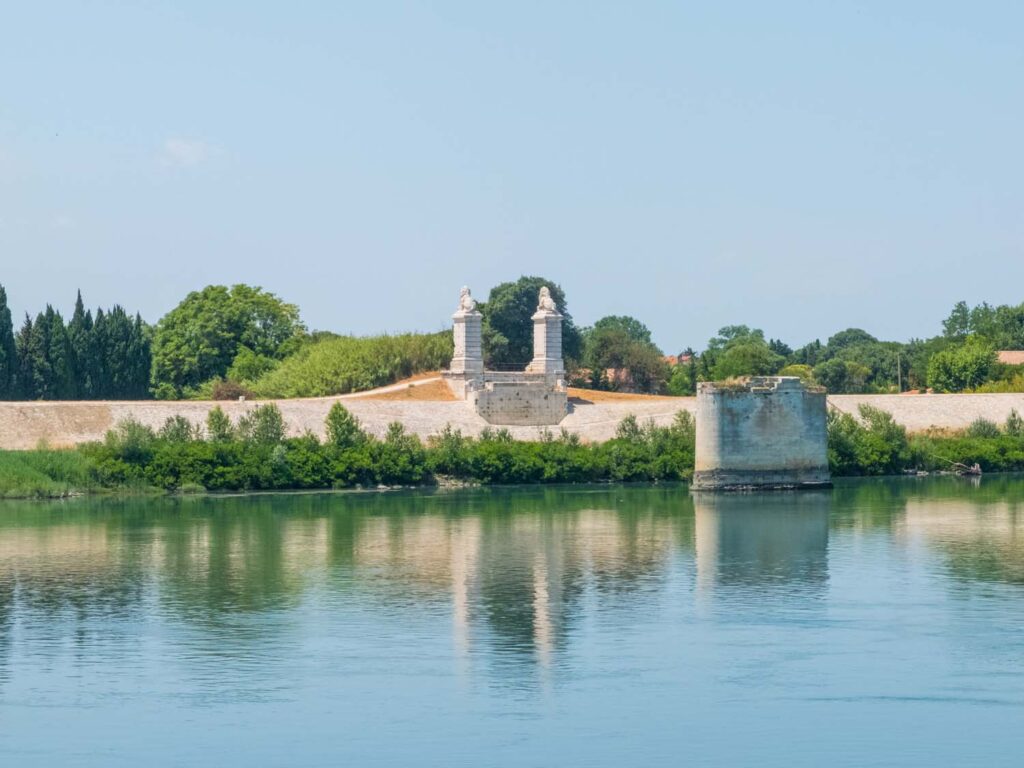
Starry Night Over the Rhône
One of the most prolific reasons people view this part of the river is to study the inspiration for Vincent Van Gogh’s famous paintings, Starry Night Over the Rhône. His home in Arles, the Yellow House, was just around the corner, and it was right here where he came to immortalize the river forever.
The painting features a starry night sky filled with a vibrant and swirling mix of blues and yellows. The brushstrokes are bold and expressive, making the scene almost turbulent. The stars appear to twinkle and dance across the canvas. Hidden in the bottom right corner, we can see a couple taking a leisurely stroll along the riverbank. Just like we are doing today!
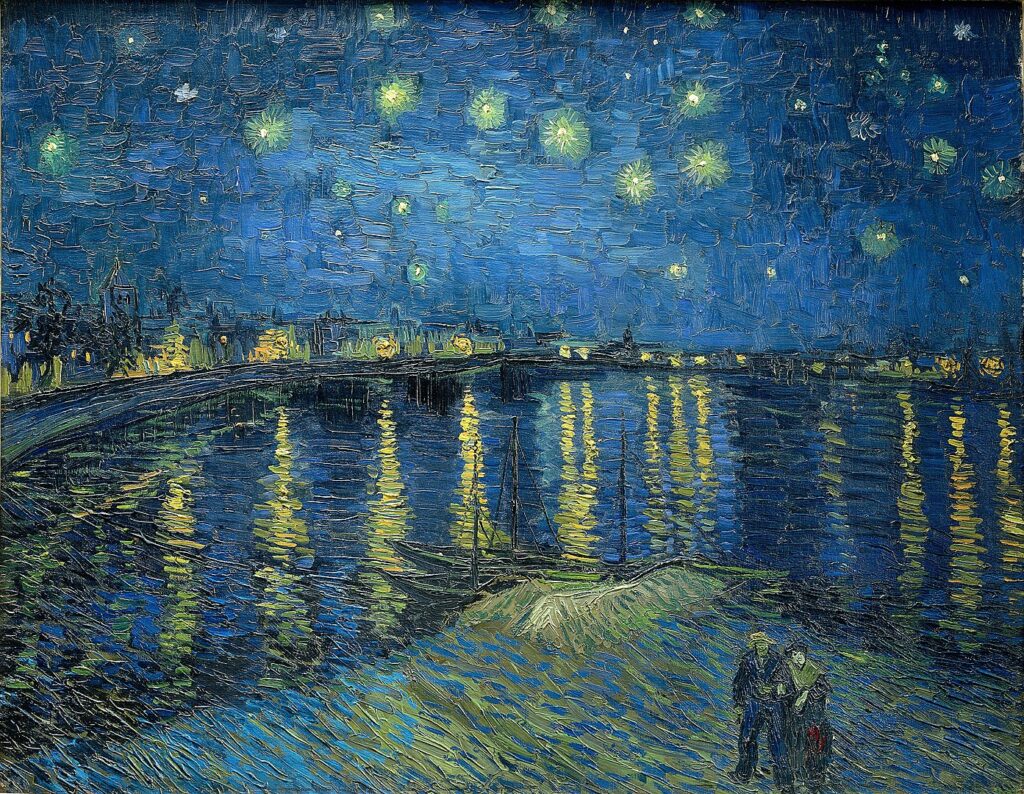
Thermes de Constantin
A small staircase leads you down away from the Quay towards the Rue du Grand Prieuré. As you make your way down, you are met with a large curved brick wall. This is the exterior of the great Thermes de Constantin. The Thermes de Constantin, also known as the Baths of Constantine, is an ancient Roman bath house.
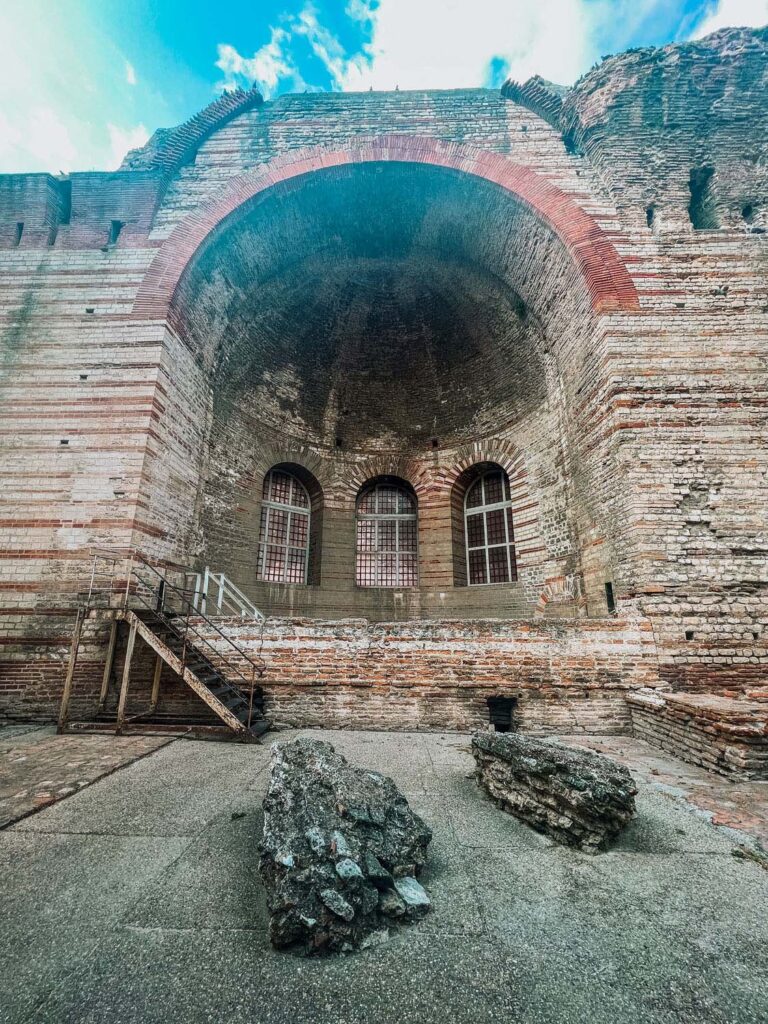
Built in the 4th century AD, the Thermes de Constantin was named in honour of the Roman Emperor Constantine the Great. When we hear the word “bath” today, we think of a small, plastic or enamel tub meant for one person. But during the Roman Empire, public baths were an enormous structure where dozens, if not hundreds, of people could come together. Bathing back then was not just to maintain your personal hygiene, but it was also great. For Romans, bathhouses were a social and cultural center where people from all walks of life would gather, relax, and socialize.
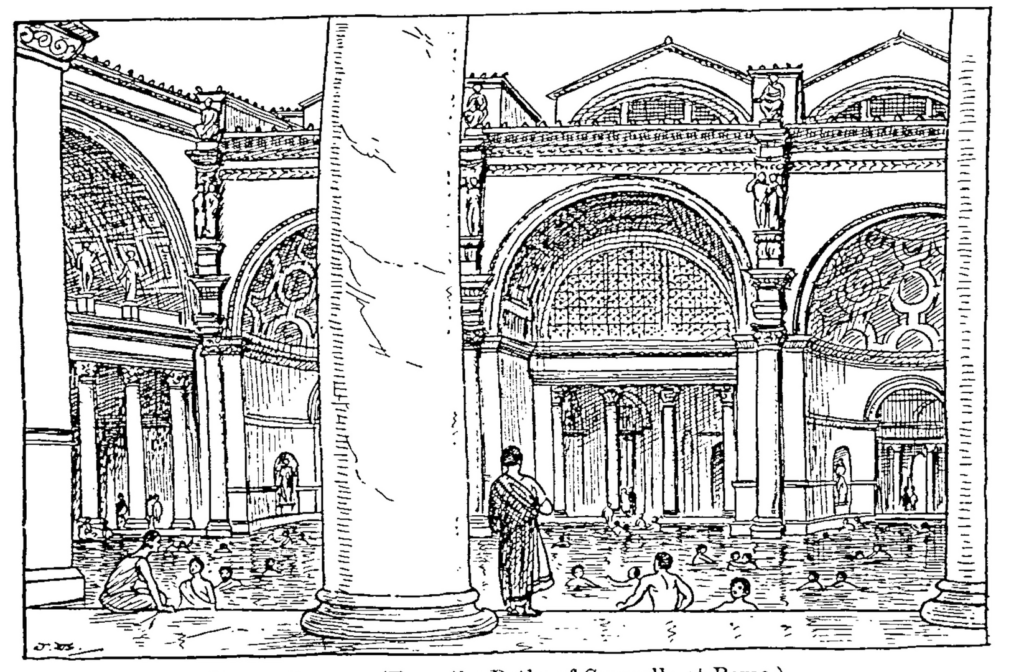
Using a Roman Bath House
Roman baths were grand, impressive structures. Stepping inside, you can walk around the space on raised platforms to really appreciate the grandeur of the building. While most of the decoration has been lost to time, imagine for yourself as you walk through the now-barren interior with stunning mosaic decorations and intricate marble sculptures. These were all meant to showcase the opulence and grandeur of Rome. The walls would have been adorned with frescoes depicting scenes from mythology, everyday life, and the glories of the Roman Empire.
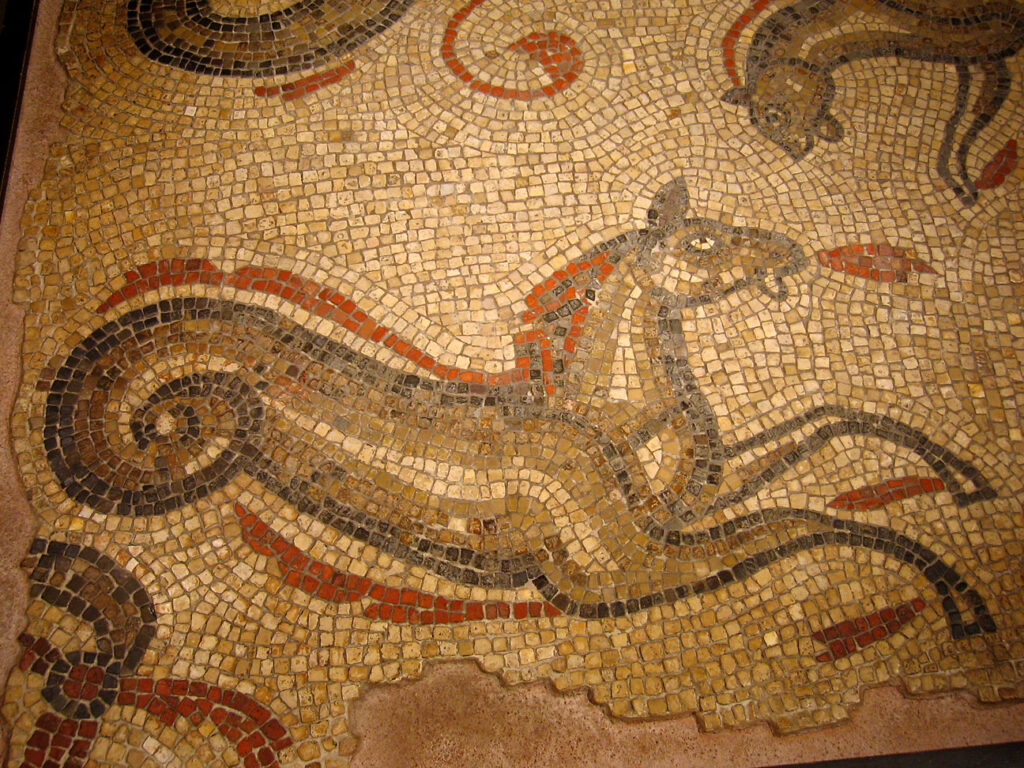
Visitors would enter through an imposing entrance hall known as the frigidarium, which led to a series of interconnected rooms offering different temperature baths. These rooms included the tepidarium (warm room) and the caldarium (hot room), equipped with underfloor heating systems known as hypocausts. You can still see several of these underfloor heating systems today; look for the signs that point it out.
Roman baths were not only for physical relaxation but also hubs for intellectual and cultural exchange. Philosophical discussions, debates, and other social interactions would occur within these spaces.
Individual Entry Price Roman Baths: 5€
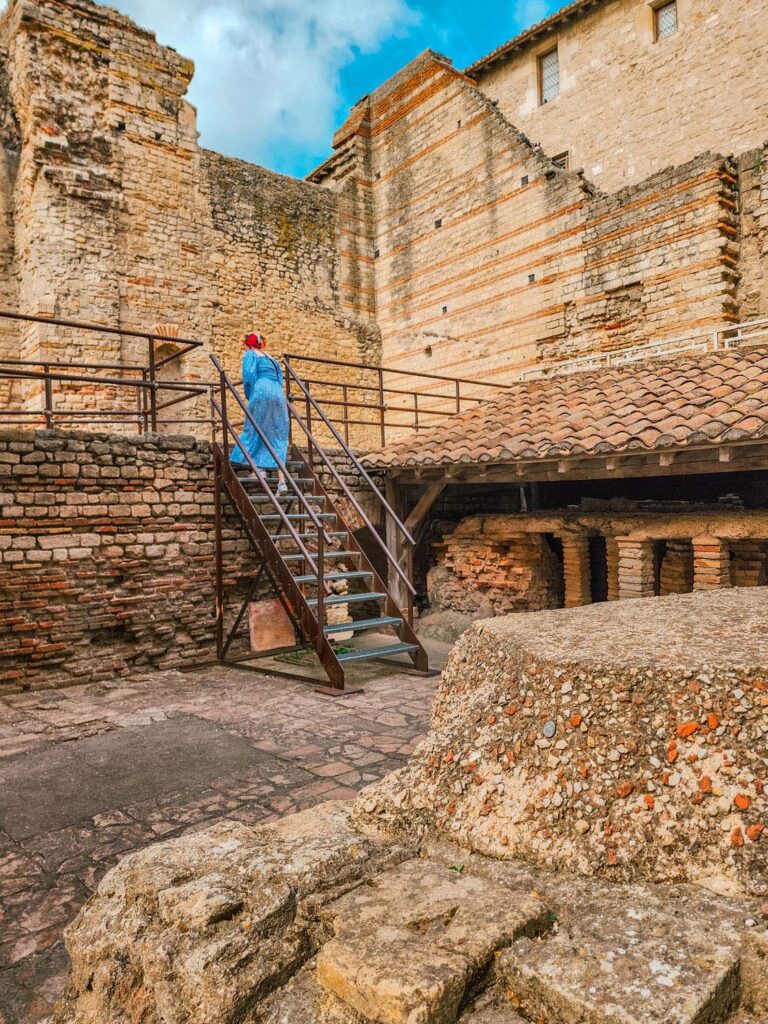
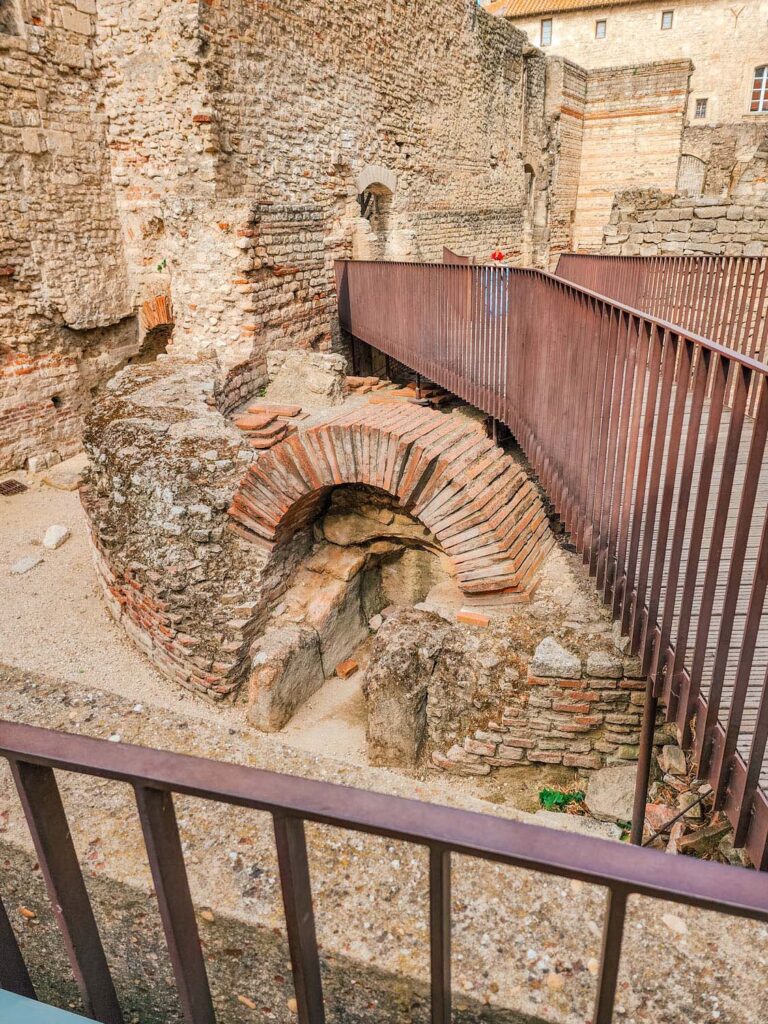
Musée Réattu
Leaving the Roman Baths, you can opt to visit the Musée Réattu just down the street. Entry to the Musée Réattu is included in the Pass Avantage. If you’re not an avid art fan, you can skip this stop. But the museum is very small, so even if you just want to peek inside to see a few pieces, you won’t spend very much time inside.
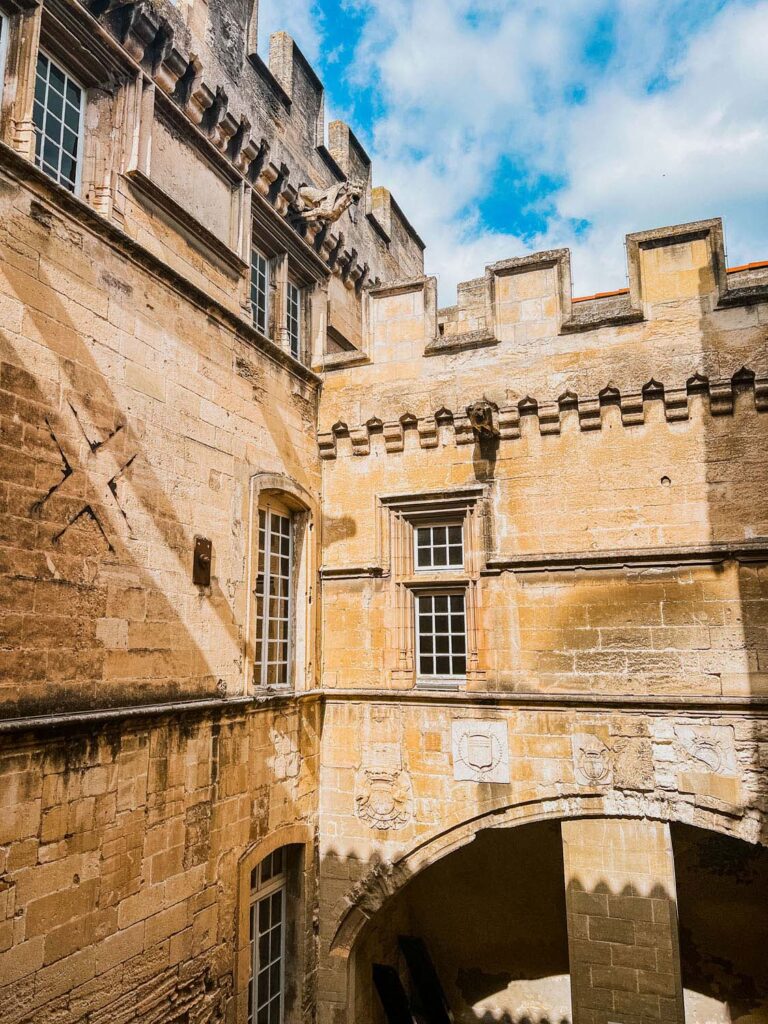
The Musée Réattu is housed in a former 15th-century priory. Exploring some of the historic parts of the building is one of the best reasons to stop here. The museum primarily showcases the world of Jacques Réattu, an influential French artist who was born in Arles. Réattu’s artistic journey took him from his hometown to the vibrant Paris art scene. It was in Paris that he gained recognition for his exceptional painting. But he never forgot about his beloved home of Arles. While Van Gogh might be the biggest name to have worked in Arles, Réattu is the homegrown pride of the city.
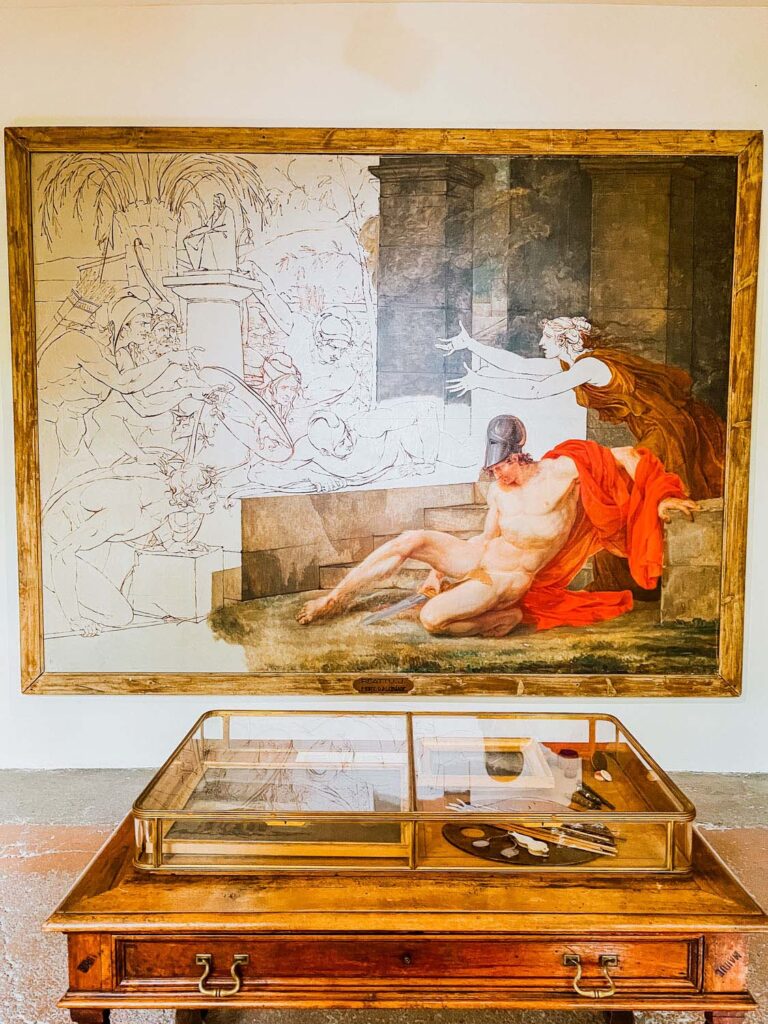
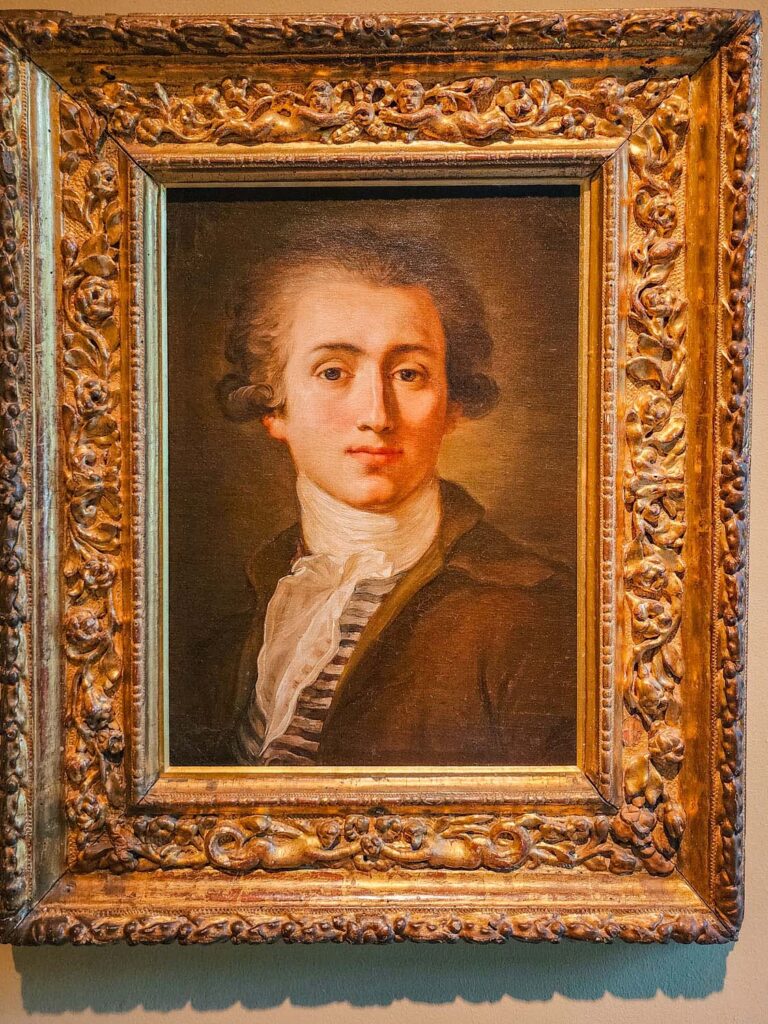
Réattu’s artistic repertoire encompassed various subjects, from historical and mythological themes. His works often exhibited a harmonious blend of classicism and romanticism, with a keen attention to detail and a deep understanding of human emotions.
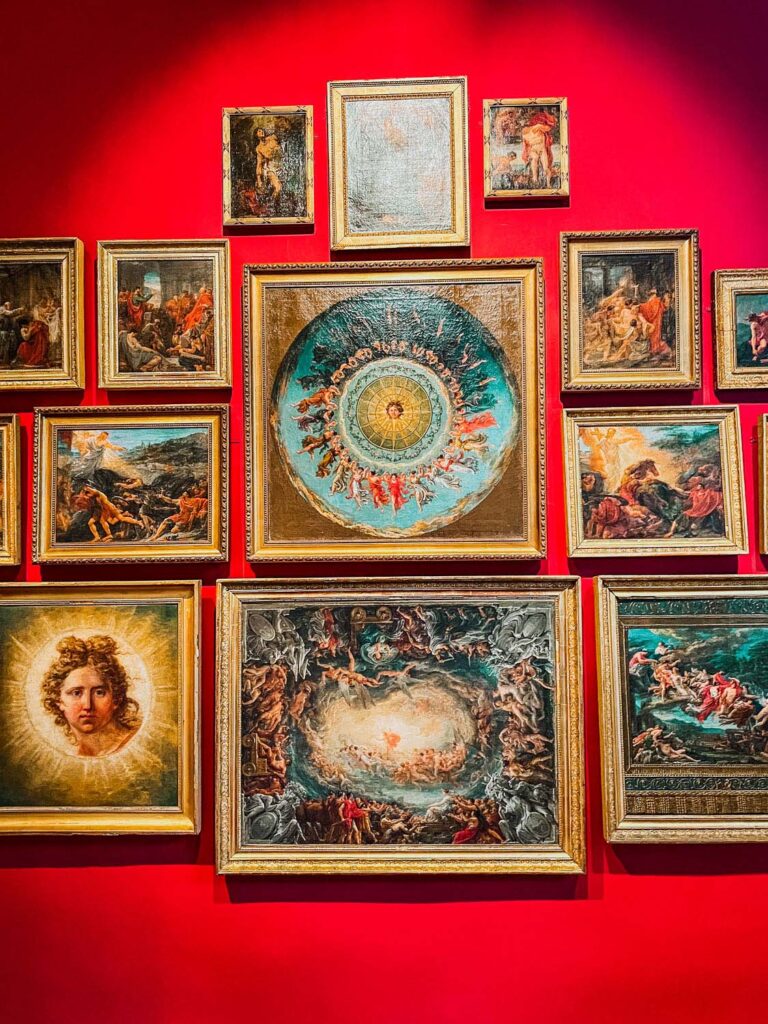
Picasso’s Arlesienne
Also included in the museum’s collection is a series of eight portraits painted by Picasso of his muse Jacqueline Roque, dressed as an Arlesienne. The term “Arlesienne” was often used to describe the traditional costume worn by women in the Arles region in the 19th century. This traditional dress typically includes a white or light-coloured blouse, a full black skirt, and an elaborate, intricately embroidered black velvet bodice. The outfit is completed with a headdress adorned with ribbons and flowers, which vary depending on the occasion. The Arlesienne has become an enduring symbol of Provencal and was also frequently painted by Gaugin and Van Gogh.
Individual Entry Price Roman Baths: 8€
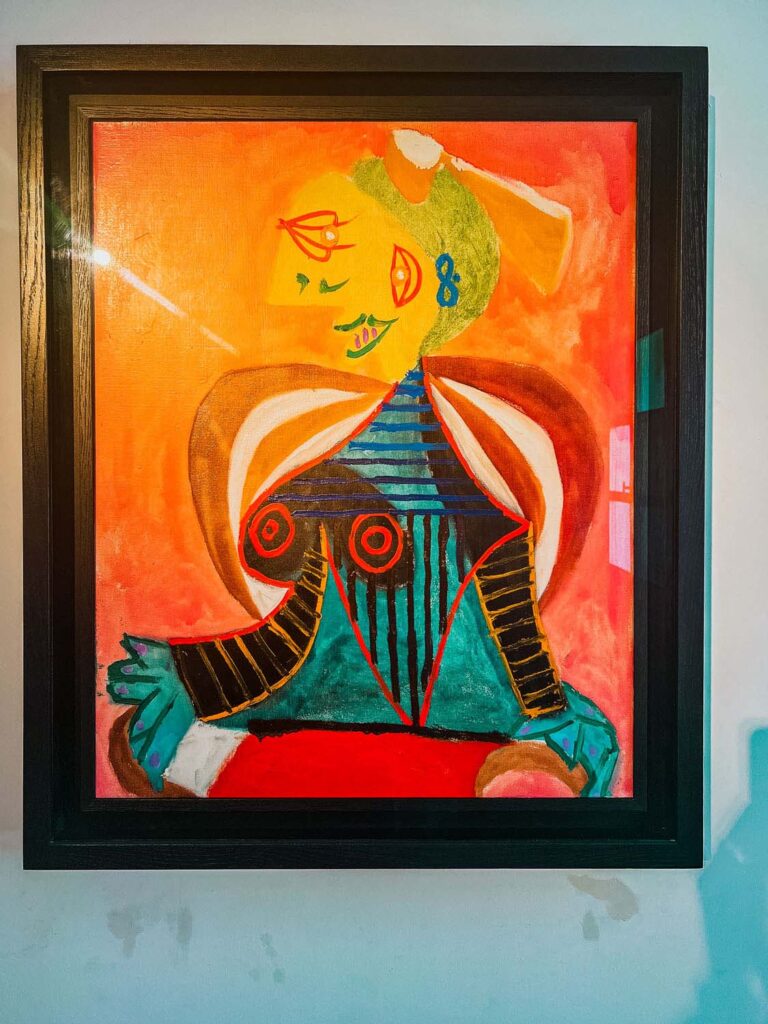
Place du Forum
From the museum, let’s meander down toward the Place du Forum. Turn left onto Rue Dominique Maisto, then right onto Rue du Sauvage, leading into Rue de la Place. The Place du Forum is a picturesque, vibrant square steeped in history and surrounded by charming cafes and shops.
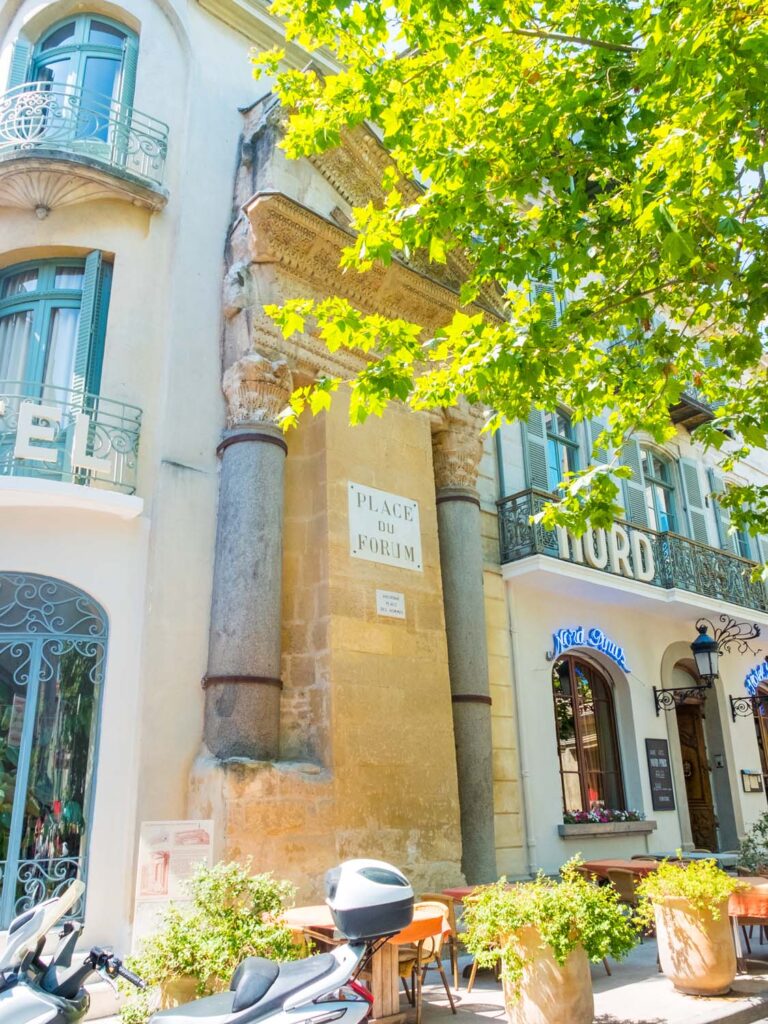
The Place du Forum is named after the Roman Forum that once stood a few blocks away. Today, remnants of the ancient Roman city can still be seen embedded into the walls of the square. Look closely at the building on the corner, now the Nord-Pinus Hotel. You can see it embedded in the hotel are two Roman Corinthian columns. These tall columns once supported a Roman temple that occupied this space.
A Corinthian column can be recognized immediately by its elaborate capitals decorated in acanthus leaves arranged in a spiral pattern, surrounding a central bell-shaped element called the “abacus.”
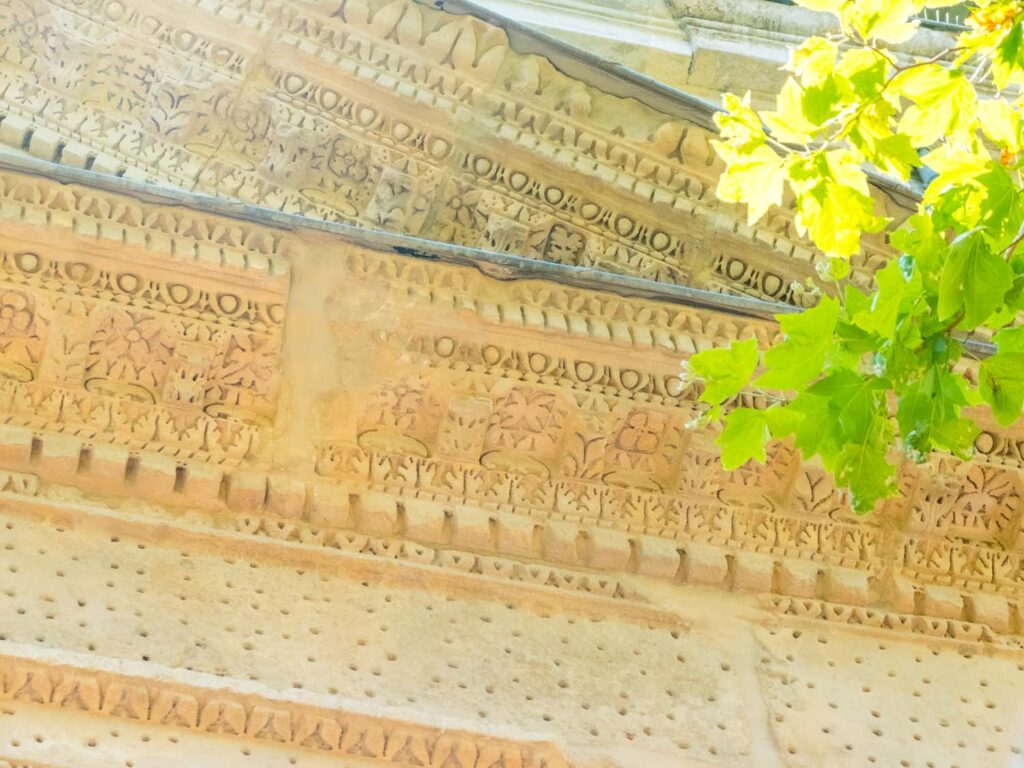
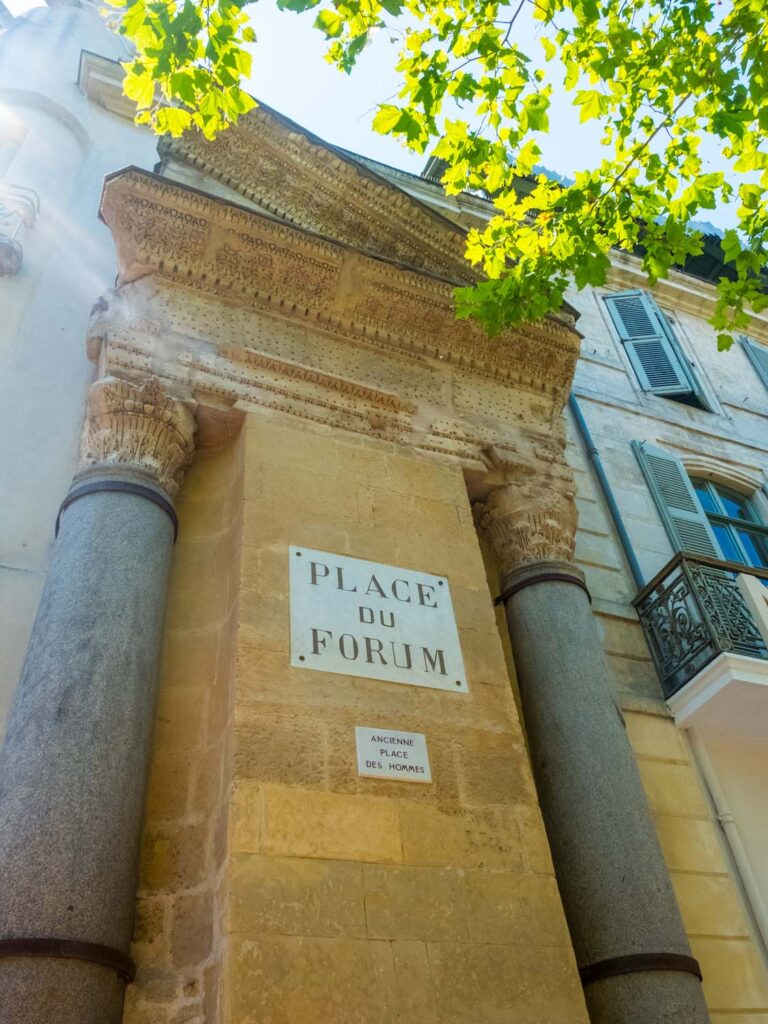
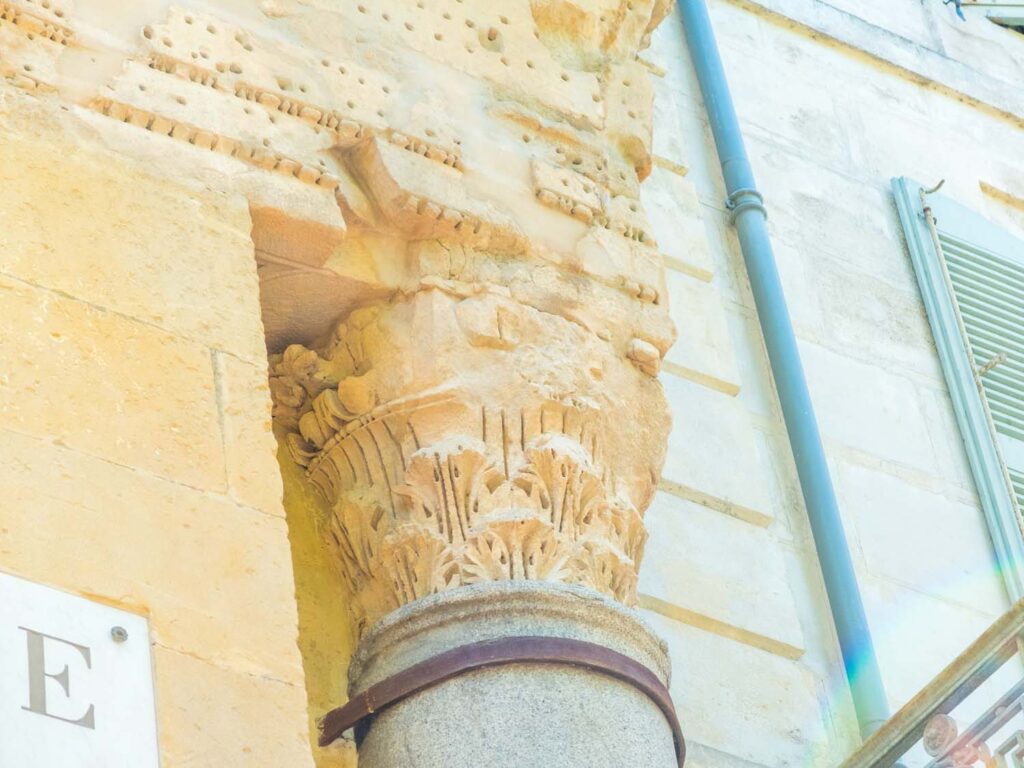
Van Gogh Café
At the heart of the Place du Forum stands the iconic Le Cafe La Nuit. Better known as the Van Gogh Café. This café features a bright yellow facade, believed to be the same café that inspired Van Gogh’s famous artwork, “Café Terrace at Night.”
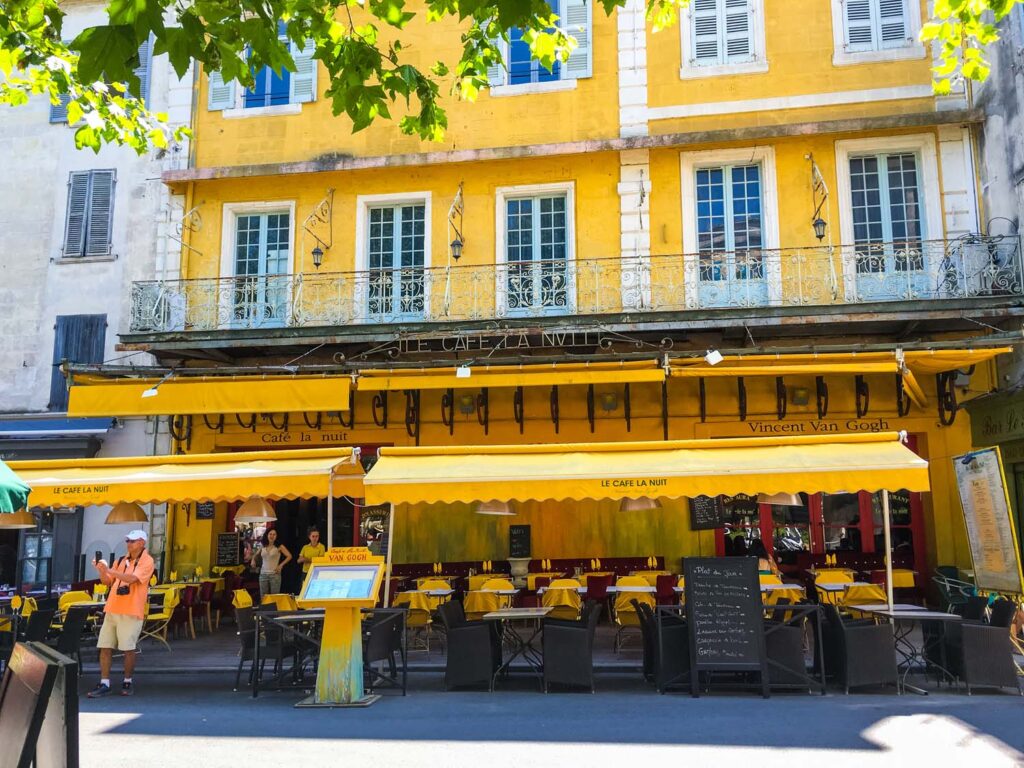
While the cafe might stand in the same spot as the original cafe from the painting, the ownership has changed hands many times. And today, the cafe sadly has a poor reupitation as a tourist trap. If you want to stop for an aperitif, consider L’Apostrophe Restaurant two doors down instead. If you can snag a spot outside, you have a beautiful view of the Yellow Cafe without the tourist trap prices and poor-quality food and service. After all this walking, you’ll definitely have deserved a sweet aperitif.
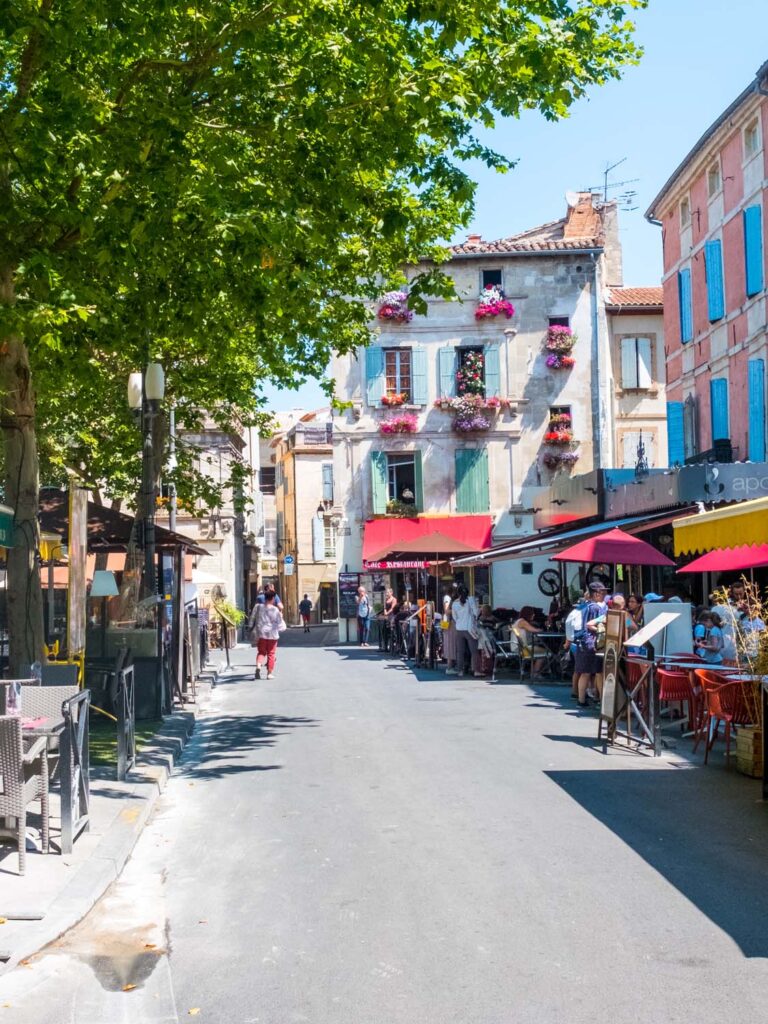
Cryptoporticus
Continue your journey towards the Cryptoporticus of the Roman Forum. This spot is just a few blocks from the Place du Forum. You must enter the old Town Hall of Arles to get inside. Once inside, you’ll find the entrance to the underground passageway.
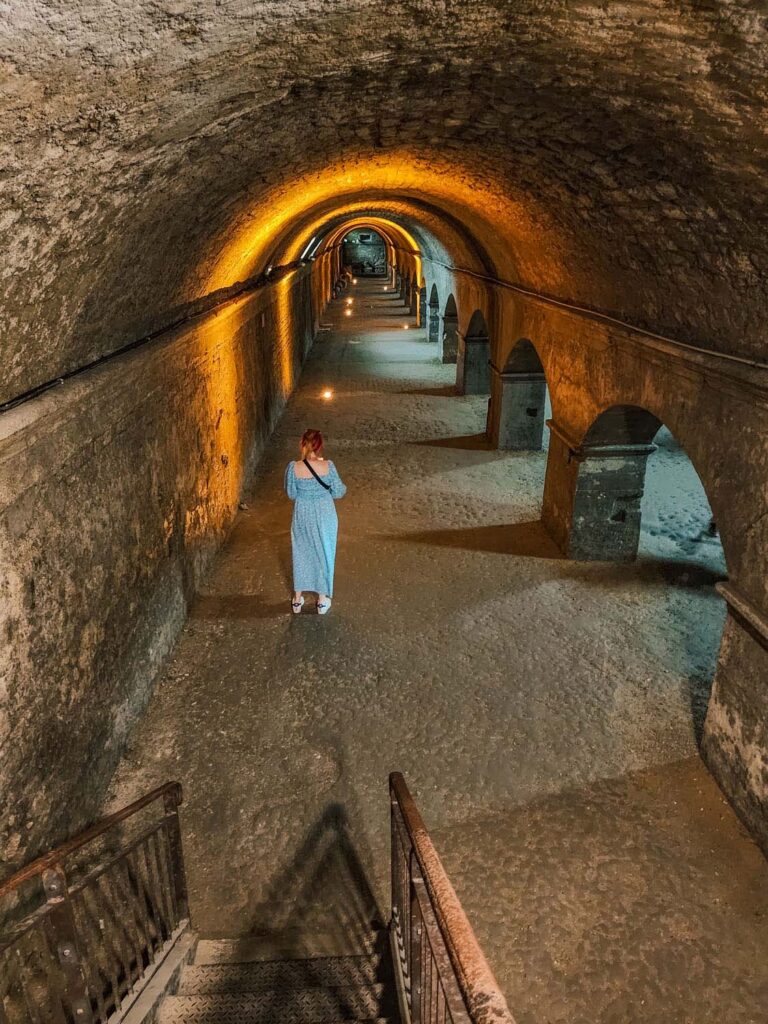
The Cryptoportiques d’Arles, also known as the Arles Cryptoporticus, dates back to the 1st century BC. These underground vaults were constructed to serve various functions, including supporting the enormous Roman Forum above. The Cryptoportiques consist of a network of underground galleries and corridors. These galleries are supported by a series of arches and pillars, characteristic of Roman architectural engineering. The ceilings of the passageways are vaulted, allowing for the even distribution of weight and enhancing the structure’s stability. Walking around in the dark, you feel like you’ve entered a labyrinth, and perhaps a minotaur lurks around the next corner…
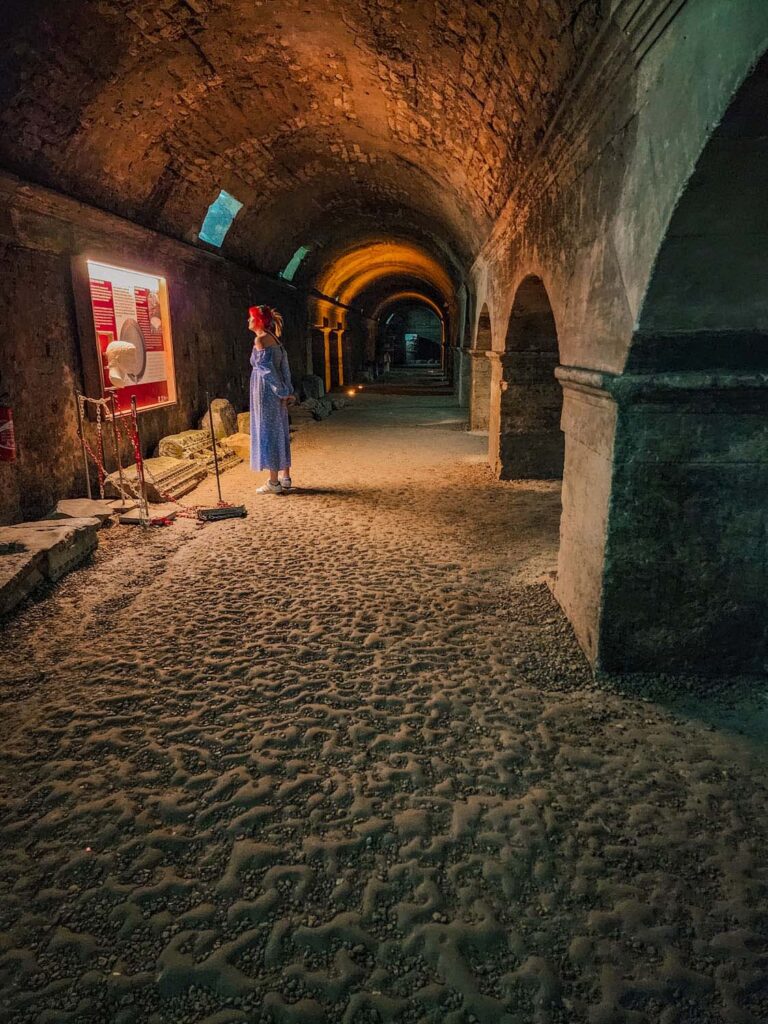
The walls and pillars of the Cryptoportiques were made using locally sourced stone, primarily limestone and sandstone. The choice of these durable materials contributed to the fact that this part of Roman Arles has been so pristinely preserved today. Since the temperature was much cooler in these underground passages, the Cryptoportiques were also employed as storage space.
Individual Entry Price Roman Baths: 5€
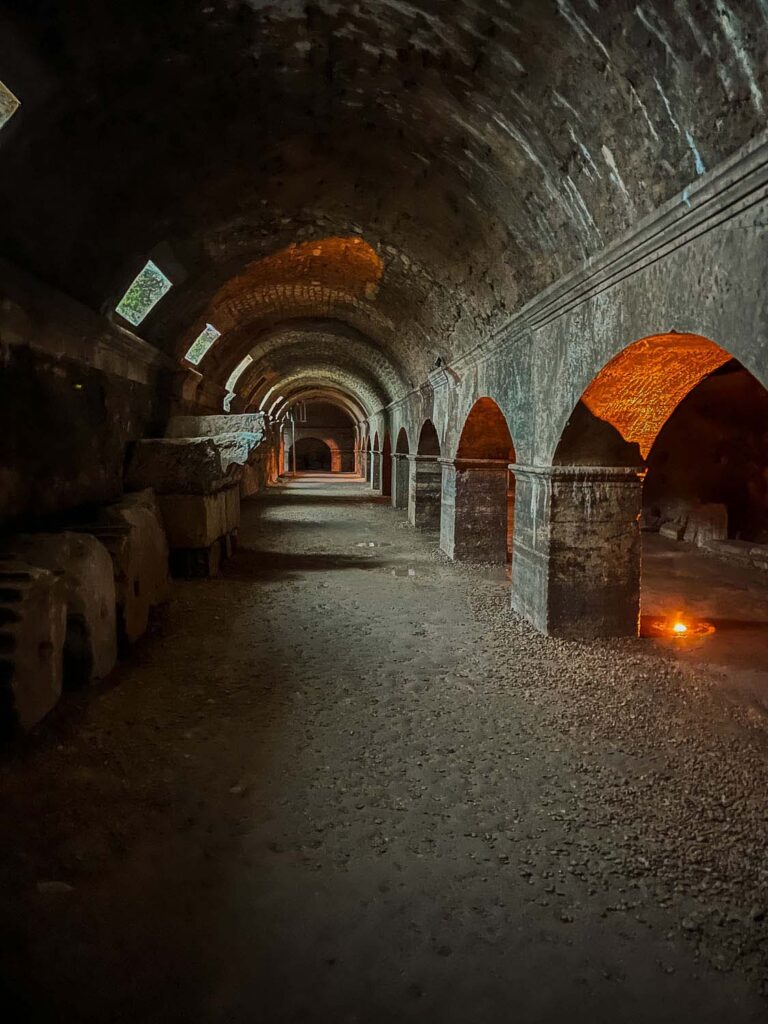
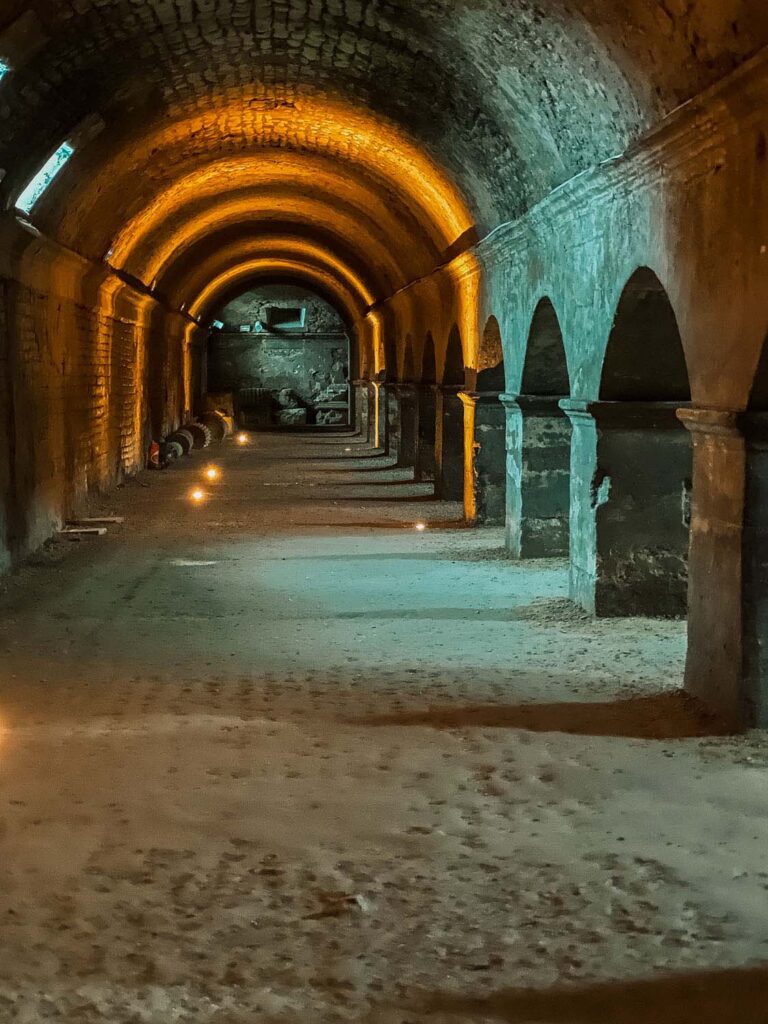
The Obelisk
After returning to street level, head out the doors from the city hall, which leads onto the Place de la République, the heart of the historic city center. Standing in the centre of the square is the monumental Obélisque d’Arles. The Obélisque d’Arles is one of the oldest surviving Roman obelisks in France. Standing approximately 15 meters (about 49 feet) in height. The Obelisk is made of reddish-pink granite, not native to France. This means that the Obelisk would have been brought in as far as Asian Minor in the region of Troy.
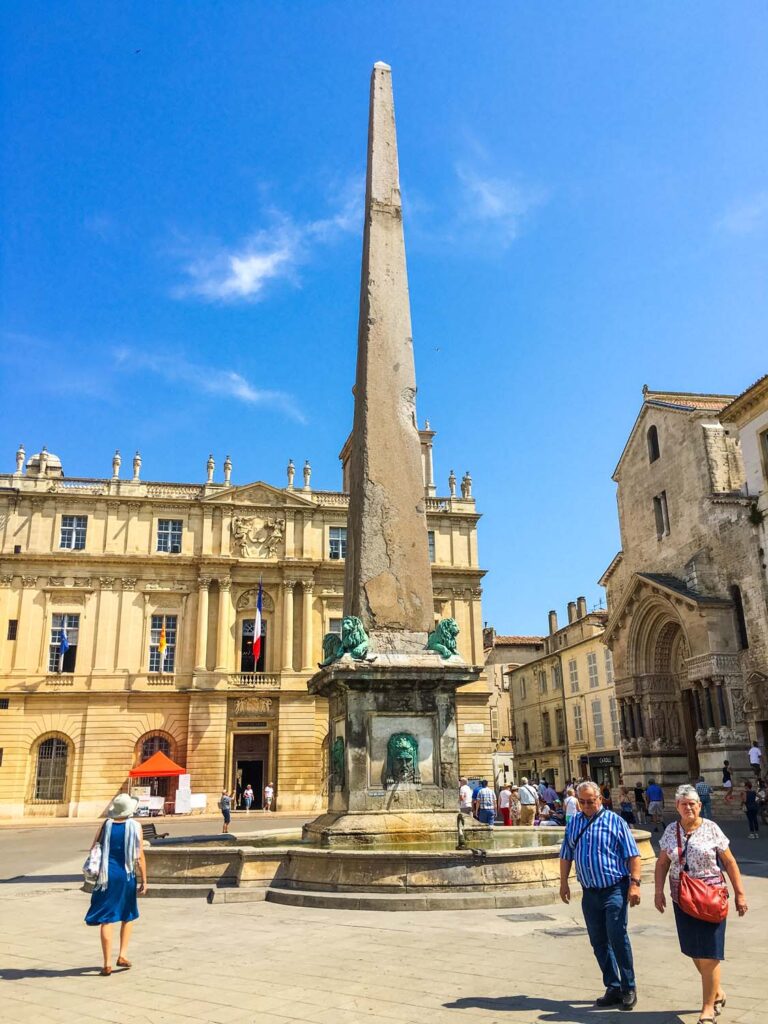
This majestic Obelisk dates back to the 4th century AD, although when it was first installed in the city, it stood in the centre of the Roman circus. A Roman circus, also known as “circus maximus” in Latin, was a large, elongated, and open-air venue used primarily for chariot racing, one of ancient Rome’s most popular and thrilling forms of entertainment.
When the Roman circus was demolished, the Obelisk collapsed or was knocked down. Breaking it into two different parts. It wasn’t until 1389 that the Obelisk was discovered and brought into the Amphitheatre to be displayed. In 1676, Louis XIV decreed it should be moved into the town square. And four engravings dedicated to the glory of Louis XIV were added. The decorative base was added in the 19th century, along with the fountain’s basin and surrounding bronze lion head water spouts.
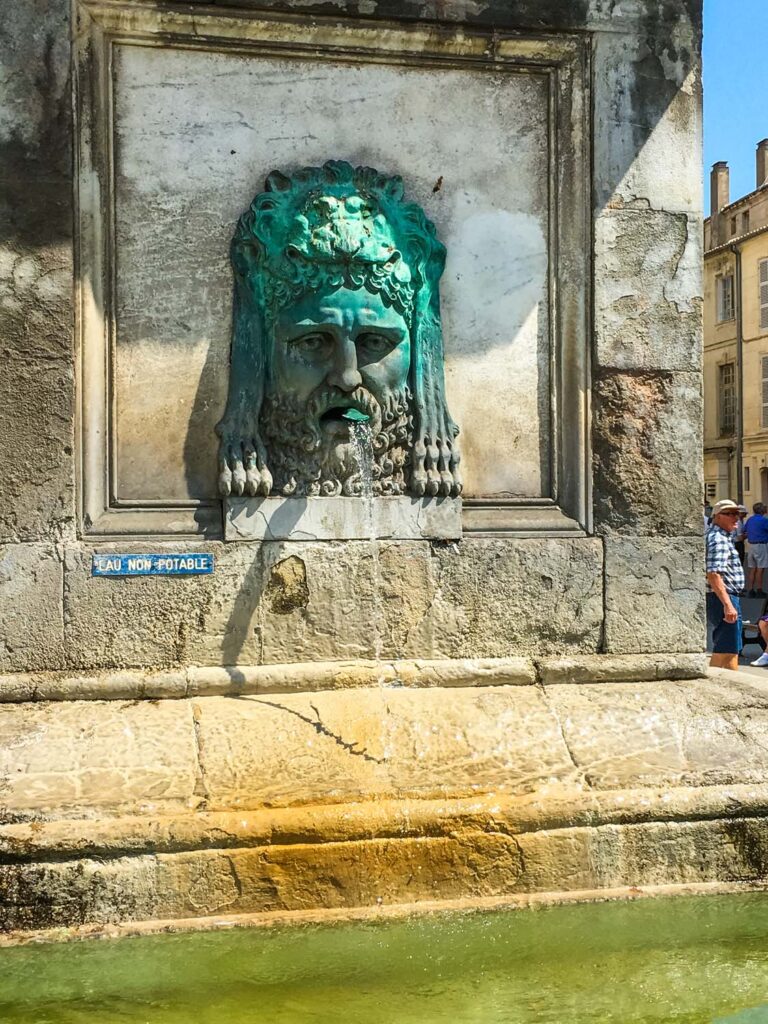
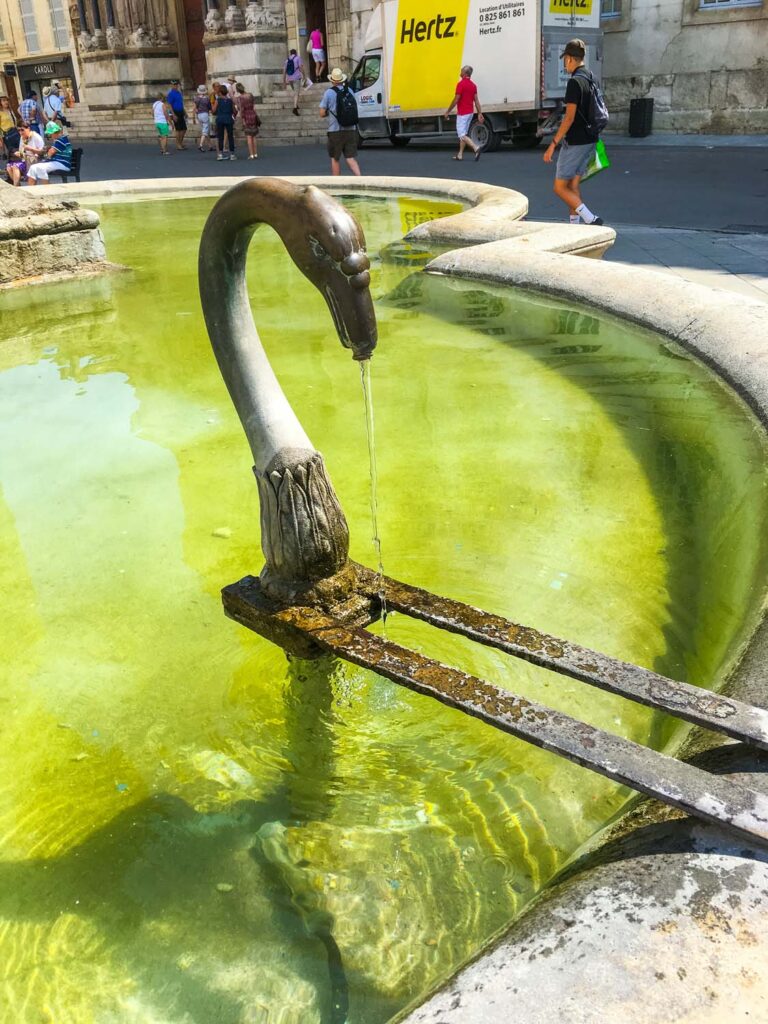
Church of St. Trophime
On the east side of the town square stands the great Church of St. Trophime. While the majority of the church we see today was completed in the 12th century, such an extraordinary structure took time to complete, and there are elements from the 11th century and even earlier still to be found throughout.
The church is named for Saint Trophimus, one of the early Christian saints and the first bishop of Arles. Originally the church was named Saint Stephen, but in 972, the relics of Saint Trophimus were reinterred, and the church was renamed in his honour.
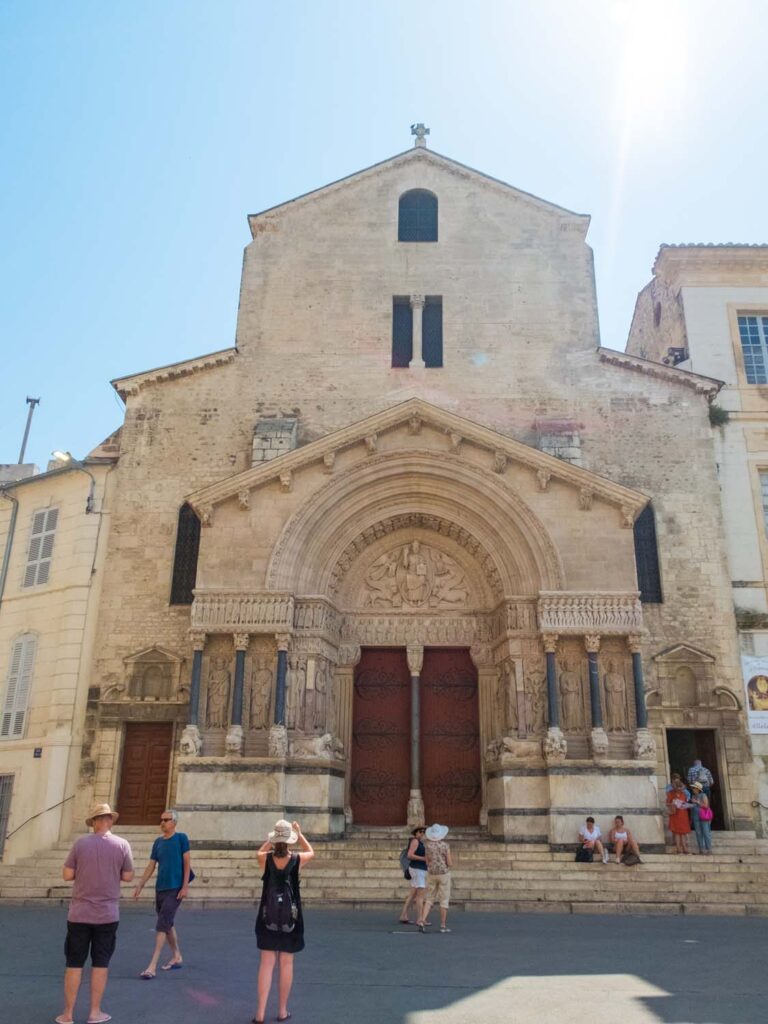
Its exterior facade, adorned with exquisite Romanesque carvings, is a magnificent example of medieval artistry and storytelling through art. Back in the medieval era, peasants were barely literate. Communicating these religious ideas and stories through art and imagery was paramount.
The Portal
The elaborate portal, known as the “Portal of the Last Judgment,” is the doorway through which visitors have entered the church for hundreds of years. For our purposes on this tour of Roman art and architecture in Arles, you should note how the archway leading into the church is reminiscent of a Roman triumphal arch.
The Tympanum
In the semi-circle above the doorway is the tympanum. Here we can see the image of Christ, seated, holding the Bible on his knees. On either side of him are found animals representing the four evangelists. The winged lion for Saint Mark, an angel for Saint Matthew, an eagle for Saint John and a winged bull for Saint Luke. Surrounding the archivolt (a moulding that frames the arch) is a choir of angels with vivid expressions; you can hear them singing.
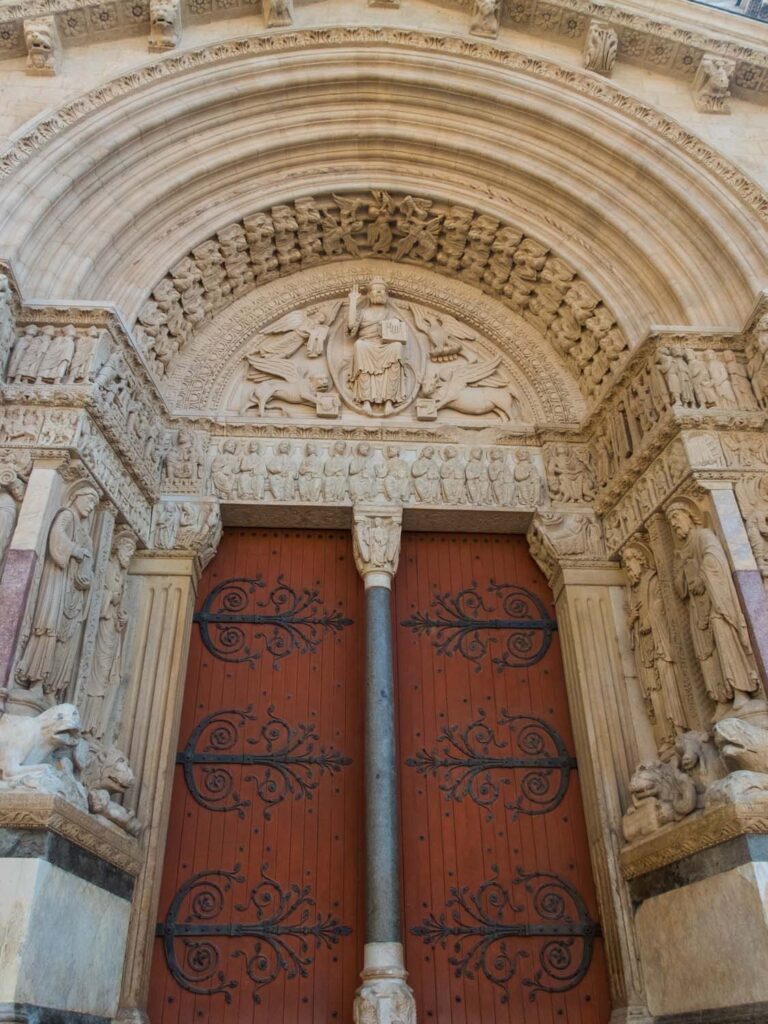
Lintels and Pilasters
The lintel, the band of stone that runs under the tympanum, depicts the souls of the dead in a The souls on the left are dressed in fine garb procession bound for judgement. The souls on the left (the righteous) march towards the centre, led by an angel with outstretched wings towards the twelve apostles. They are seated in the centre, holding a book on their knees, ready for judgment. On the right, we have the souls of the damned, who have been turned away as they walk naked and chained toward their doom.
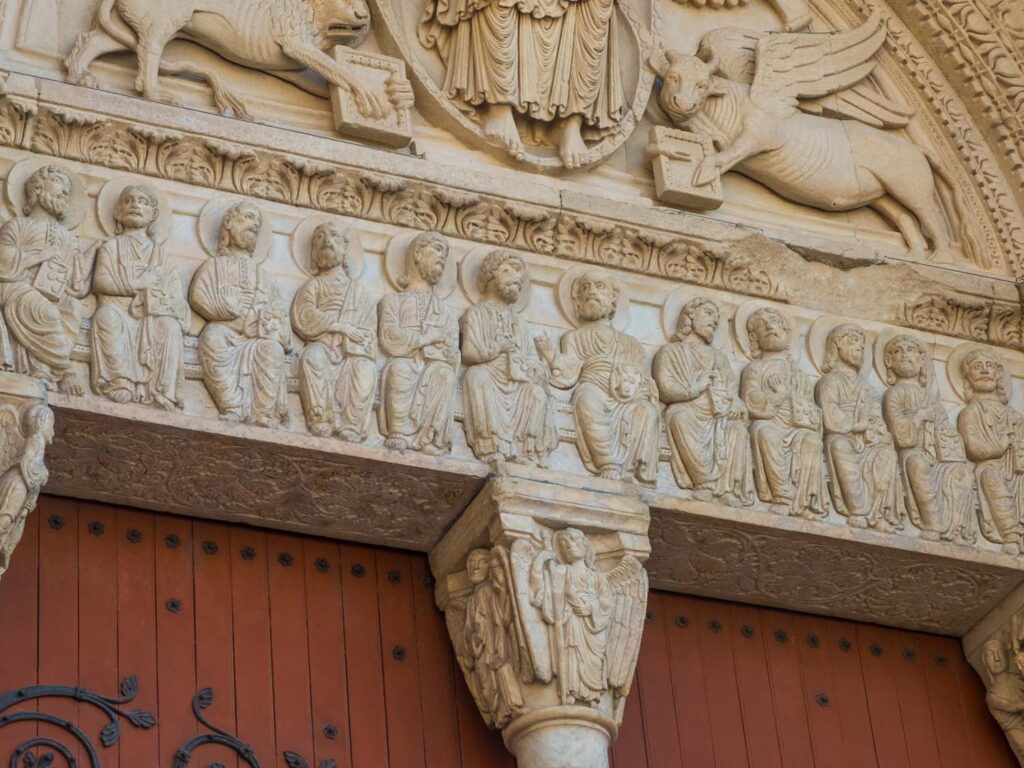
The pilasters that support the lintel are also very interesting, and it’s worth studying the intricate carvings on their base. Evil beasts and monsters torment the souls of the damned. And the huge face of Samson’s slain lion is almost wrapped around the base of the column. These tormented scenes are contrasted above, with the column capitals covered in various decorative elements like acanthus leaves, foliage, and vegetal motifs, almost like they depict heaven and hell throughout this imagery.
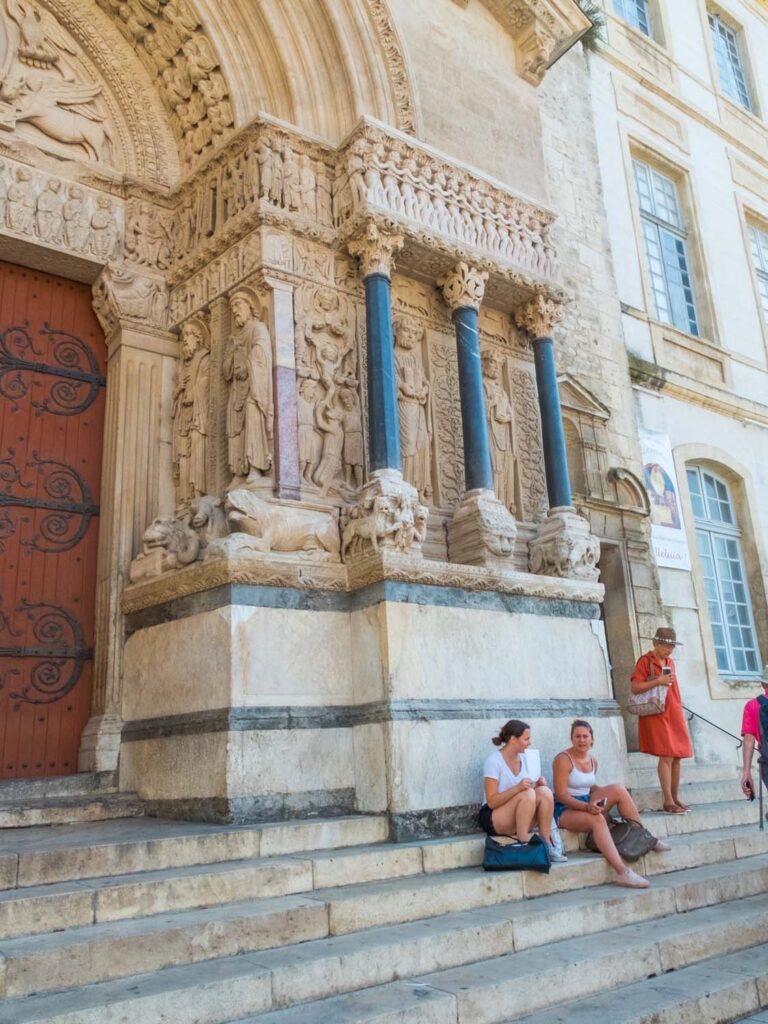
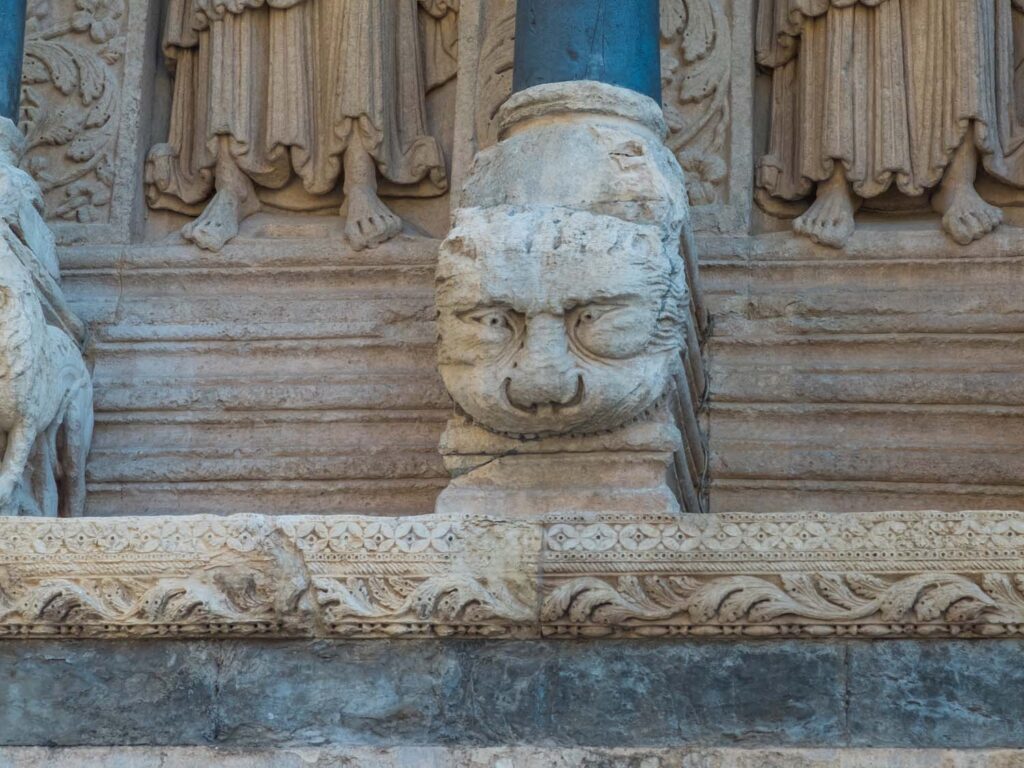
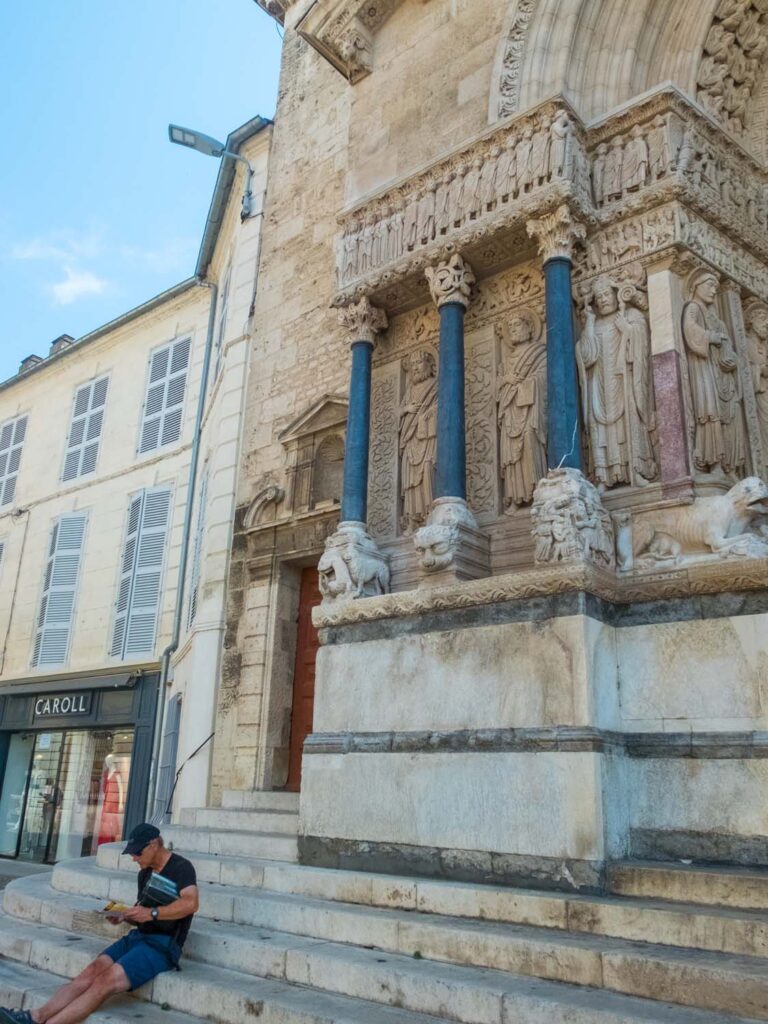
Outer Frieze
A frieze behind the pilasters depicts the major saints of the Church, including Saint Stephen and Saint Trophime. You can spot Saint Trophime on the left dressed in his episcopal costume holding a curved cane, a Crozier, in his hand. He is also seen being crowned two angles.
If you look closely, there is a secondary frieze above the apostles which illustrates the childhood of Christ. Starting with the Annunciation made to Mary, the dream of Joseph into the Massacre of the Innocents and the Flight to Egypt and finally, the Nativity.
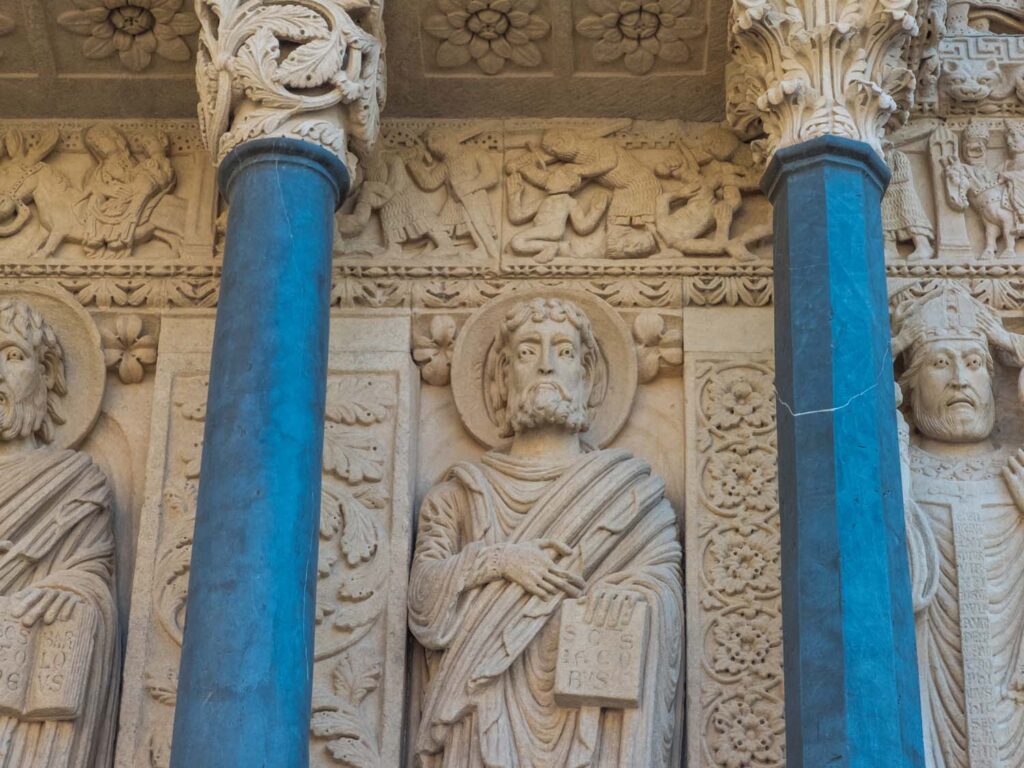
Interior
Entry into the church’s interior is free, but the St. Trophime Cloisers, located next door, require an admission fee. Thankfully if you purchased the Pass Avantage, this is included in your pass. We will explore the cloisters after briefly walking through the church’s interior.
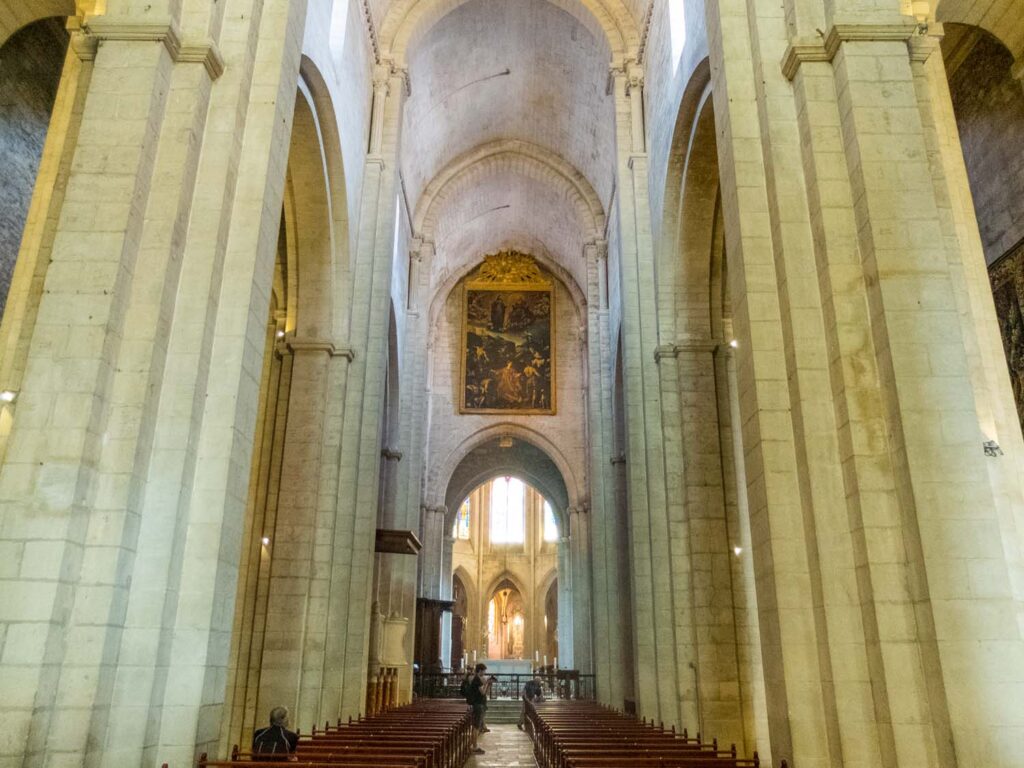
Aubusson Tapestries
Entering the church, we can tell right away that this is a romanesque construction. The columns are thick and rudimentary. Lacking the lightness of many later gothic churches. There is a heavy atmosphere inside. The stoney interior of the church is lacking in carved decorations. Several side chapels were rebuilt during the Gothic periods, as these are doubtlessly the most elaborate designs inside the church. To add some interest to the austere church, tapestries were hung on the blank walls. These date back to the 17th century and illustrate scenes from the life of the Virgin Mary.
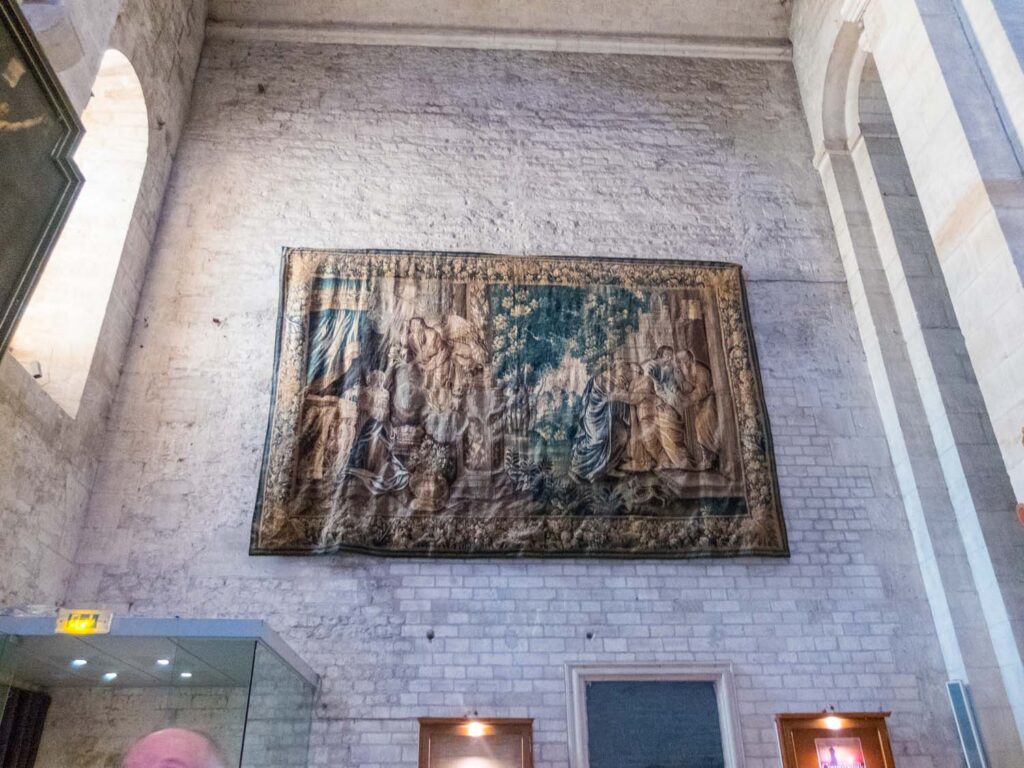

Early Christian sarcophagi
Throughout the church, see if you can spot the three early Christian sarcophagi that were brought to the church from their original resting place in Les Alsycamps. Unlike the remaining tombs in Les Alsycamps, these sarcophagi are covered in complicated and precise carvings. They almost appear architectural in their design, comprising arches, pilasters and niches that frame tiny figures representing various biblical stories. The earliest of these tombs dates to the 4th century, although they only made this church their resting place in the 19th century.
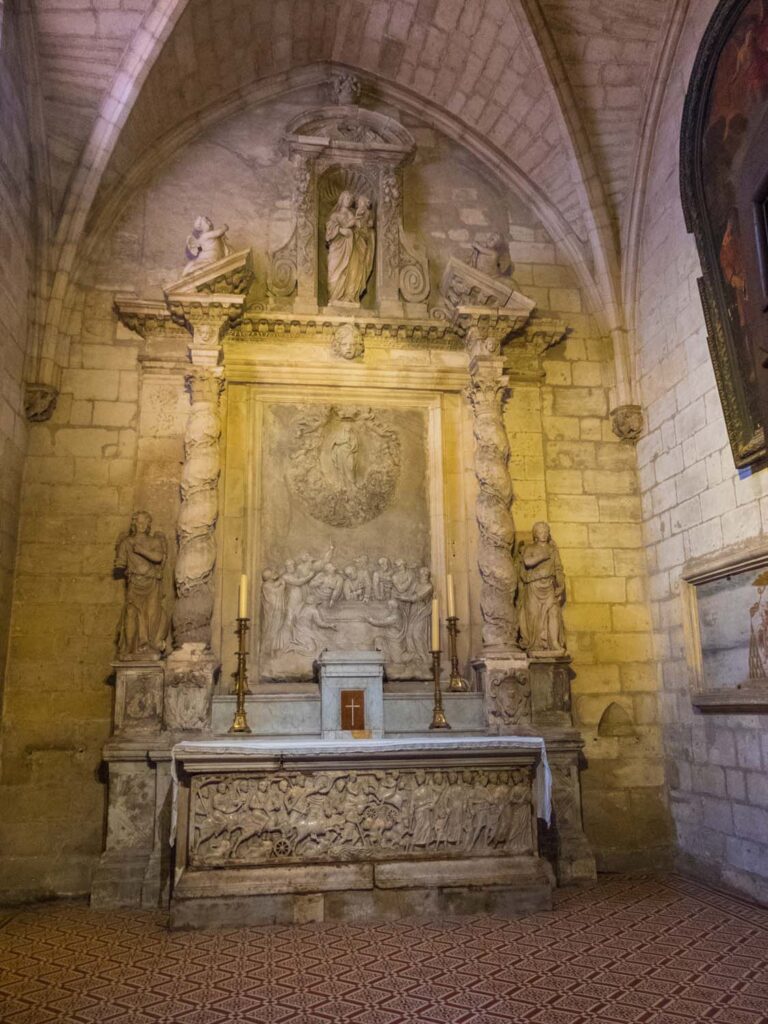
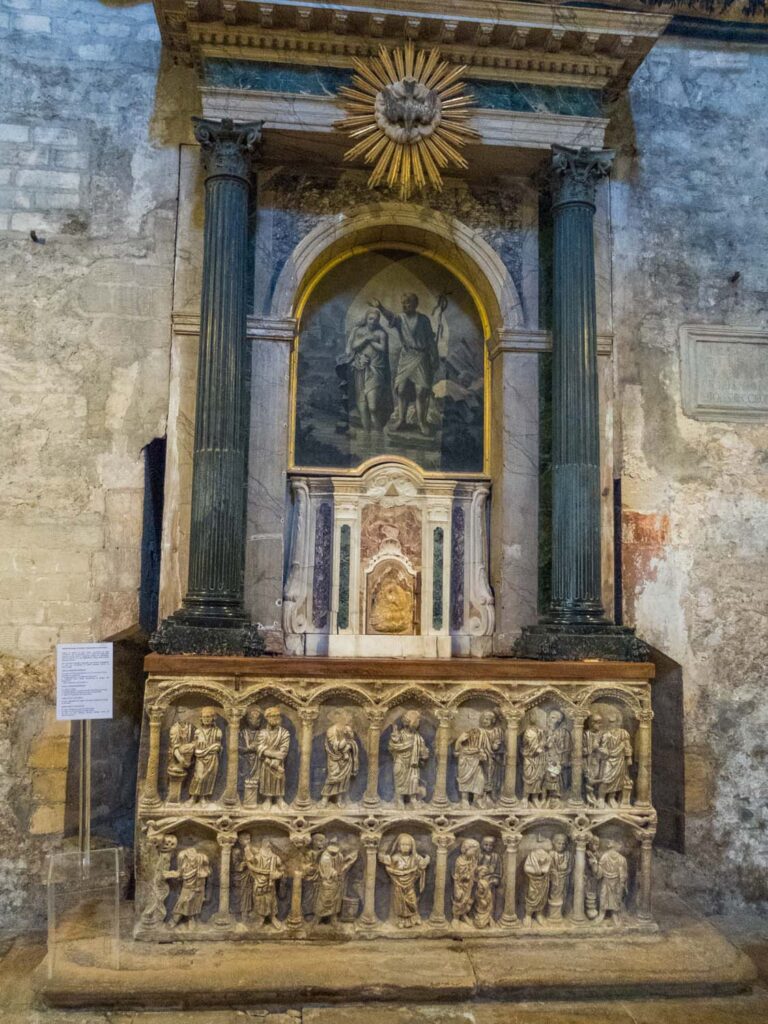
Chapel of Saint-Genès
Make a point to stop at the chapel of Saint-Genès to the north of the transept. This is where one of the old sarcophagi is held and where you can find a beautiful white marble statue of the Virgin Mary. This statue was originally placed in the Saint-Honorat-des-Alyscamps and is a great example of the beautiful decorations that would have once adorned the church we saw at the start of this tour.
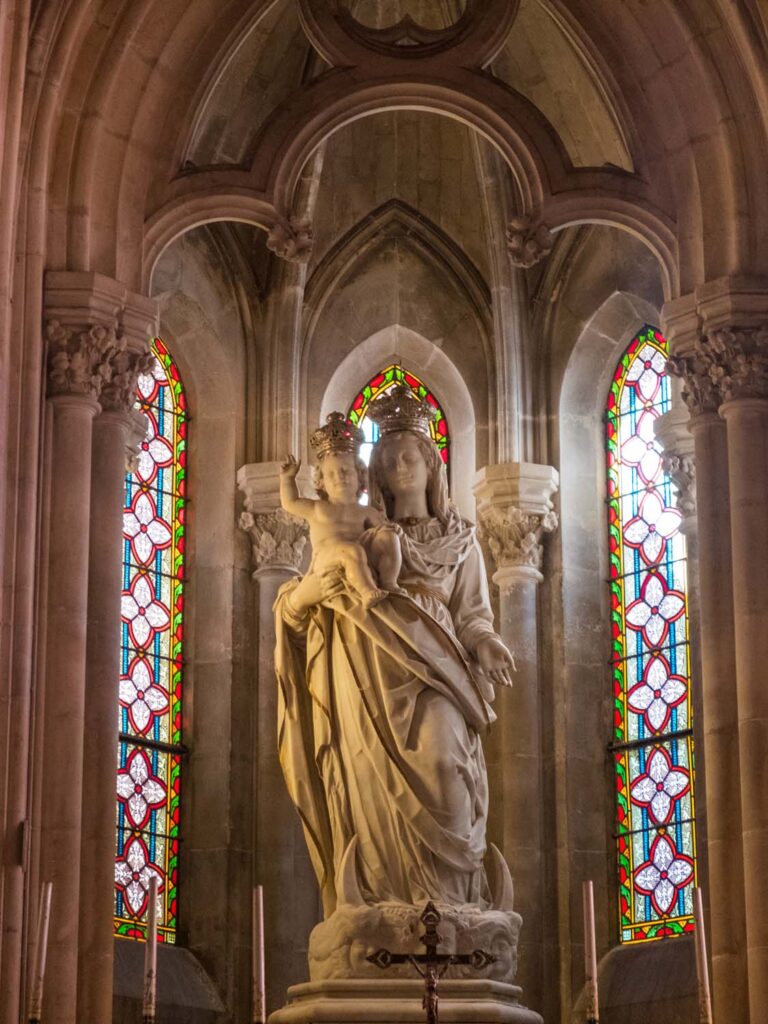
Reliquary chapel
My favourite part of the church is the reliquary chapel. Hidden behind a filagree wrought-iron gate, under a blue-painted ceiling with stars dotting the sky, are dozens of golden reliquaries. A reliquary is a container to house and display relics, which are objects or remains believed to have a special connection to a saint or religious figure. These reliquaries are stunning works of art all on their own. The most important of these reliquaries is that of Saint Trophimus, patron of the church. But you can also see reliquary for Saint Stephen, Saint Anne, and even the Mother of Mary.
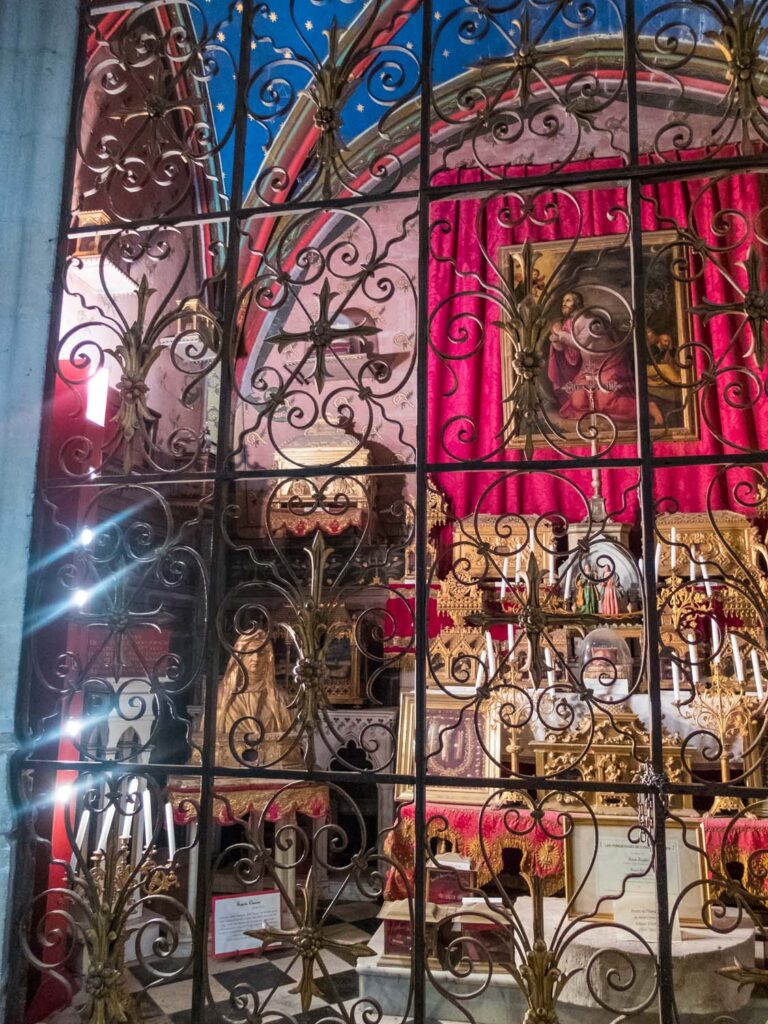
Cloître Saint-Trophime
Exiting the church, walk back onto the square and pass through the Palais de l’Archevêché. This leads you into an interior courtyard where you’ll find the entrance to the Cloître Saint-Trophime. Initially, the church would have been connected to these cloisters, but since the cloisters now require a ticketed entry, this side entrance was constructed to filter guests into the building here. Walking through this courtyard, be sure to admire the exquisite vantage point you have here to gaze up at the old Romanesque church tower.
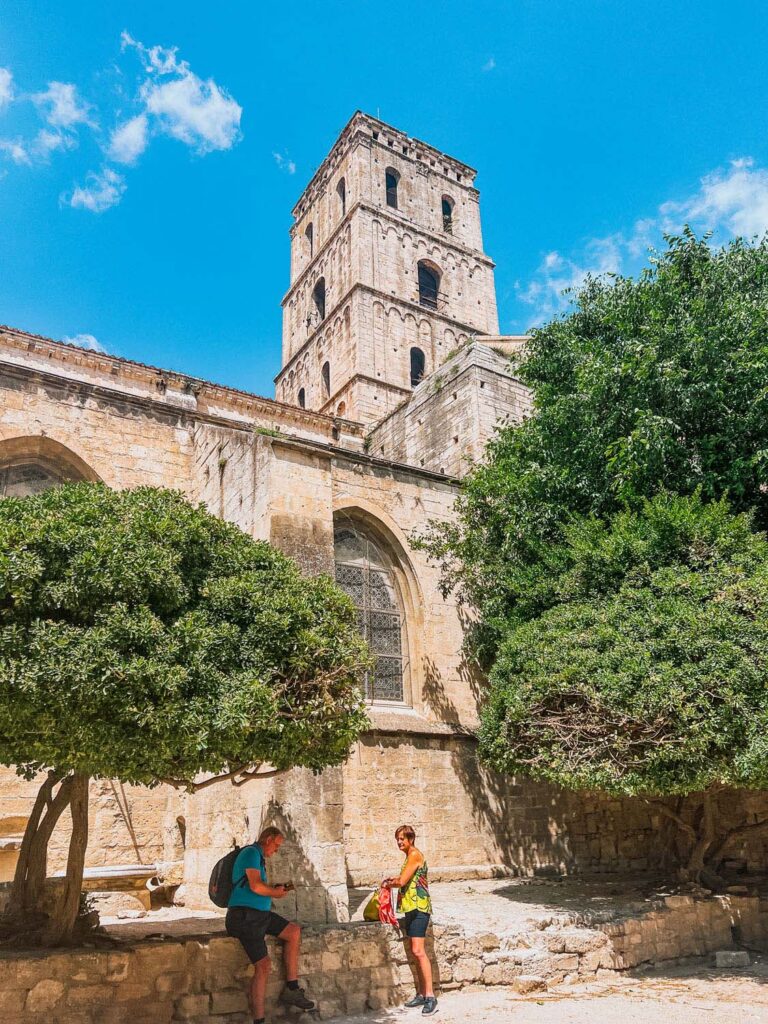
History of Cloître Saint-Trophime
The Cloître Saint-Trophime was built during the 12th and 13th centuries. It served as the monastery’s private quarters for the canons of Saint-Trophime. It was a place for them to gather for prayer, contemplation, and meditation. Providing a quiet and peaceful sanctuary away from the hustle and bustle of daily life. Surrounding the cloisters are a dormitory, refectory and dining hall were also built where the canons could continue their private life outside the church. But just as these buildings were being constructed, the Counts of Provence moved from Arles to Aix and much of the wealth that the city had been used to dissipated.
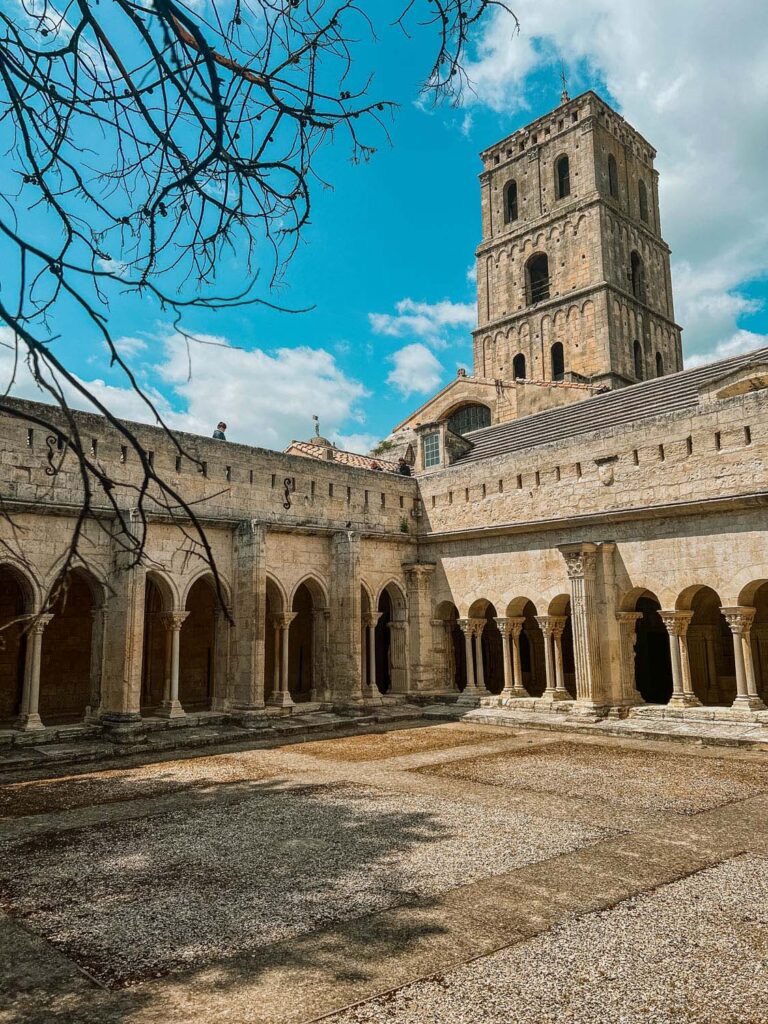
Another big hit to the continued construction of the Cloisters was in 1348 when the Black Death came to Provence, vastly reducing the population of almost every infected. When the canons filled the cloister, these buildings became granaries and storehouses for food. As such, when you visit the dormitory, refectory and dining hall interiors, you’ll notice a difference in the style of these buildings.
The highlight of the cloister is its exquisite arcades adorned with elaborately sculpted capitals. These capitals depict various biblical scenes and religious figures. Each is intricately carved with meticulous detail.
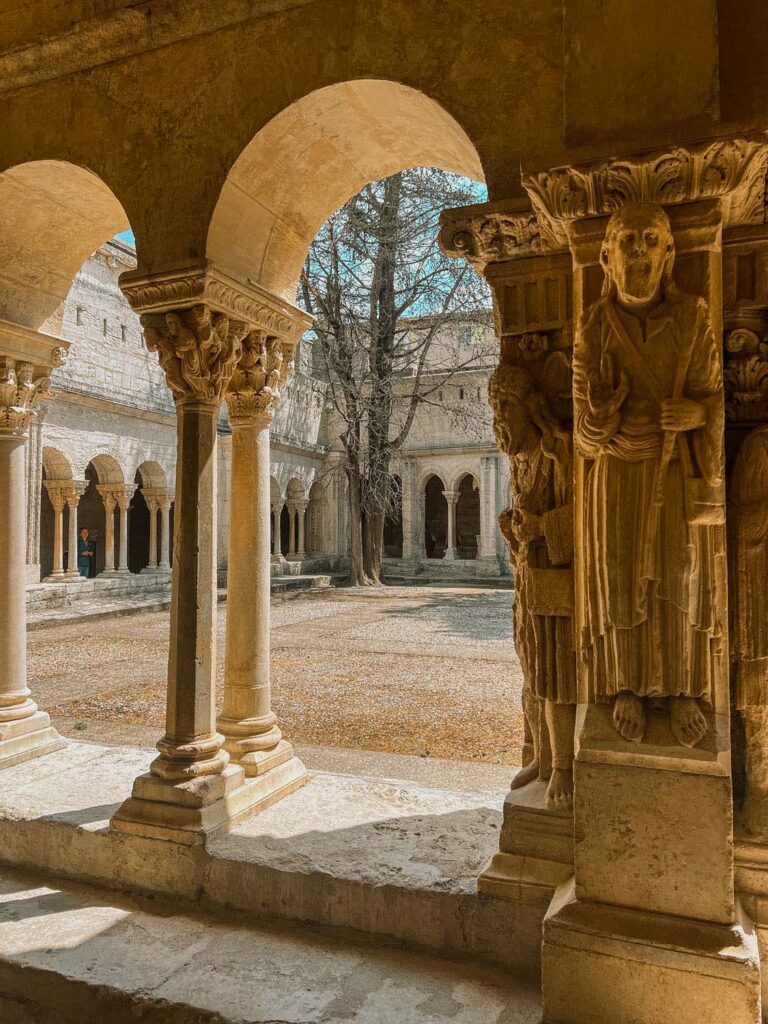
Interior Courtyard
West Gallery
You enter through the gallery’s west portions into a space built around 1375. The southern and western galleries, built later in the construction of the cloisters, are Gothic, whereas the north and east galleries are Romasnaques.
The images on the columns here are devoted to religious figures and scenes popular in Provence. You” find the story of Samson slaying the lion, the stoning of St. Stephen, Mary Magdalene kissing Christ’s feet and the Coronation of the Virgin.
North Gallery
Each section of the cloisters is divided into the north, south, east and west galleries. The North Gallery’s main themes you can keep your eyes looking to spot as you stroll through the cloister. This is the resurrection of Christ and the glorification of the patron saints of the city, Saint Trophime and Saint Stephen.
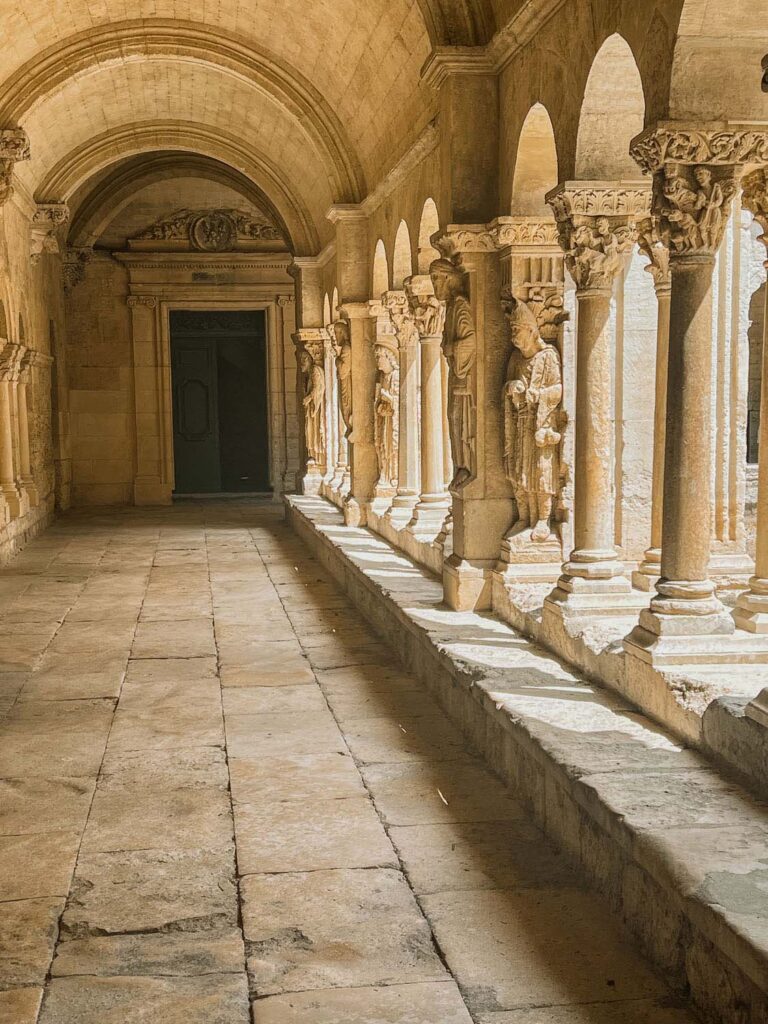
Saint Trophime
To find Saint Trophime, head to the northwest corner of the cloisters. He stands with his right palm facing the viewer while the left holds onto his curved crook, although the top of the cane has since been broken off and lost to history. On his right and left, respectively, are Saint Peter and Saint John. Saint Peter sent Saint Trophime to Gaul, now modern-day France, to evangelize the people there and become Archbishop of Arles.
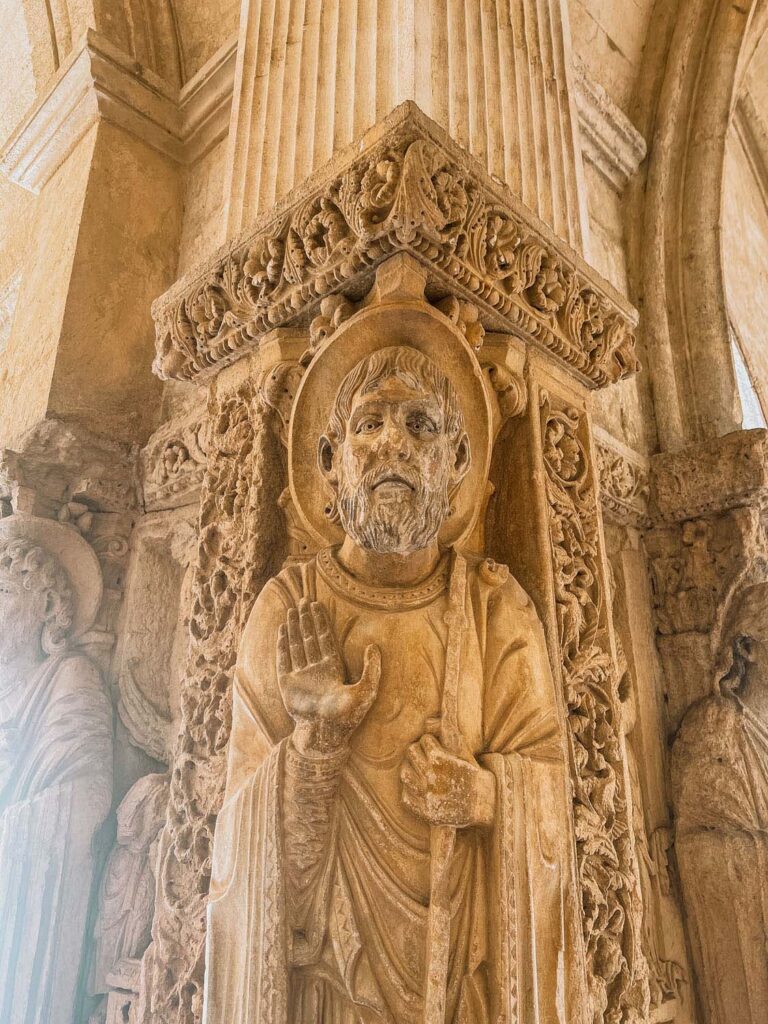
Above the doorways, you can make out the coat of arms carved onto the lintel. This image represents the coat of arms of Arles. You can see an eagle with spread wings wide; this symbolized the Holy Roman Emperor, who at the time ruled Arles.
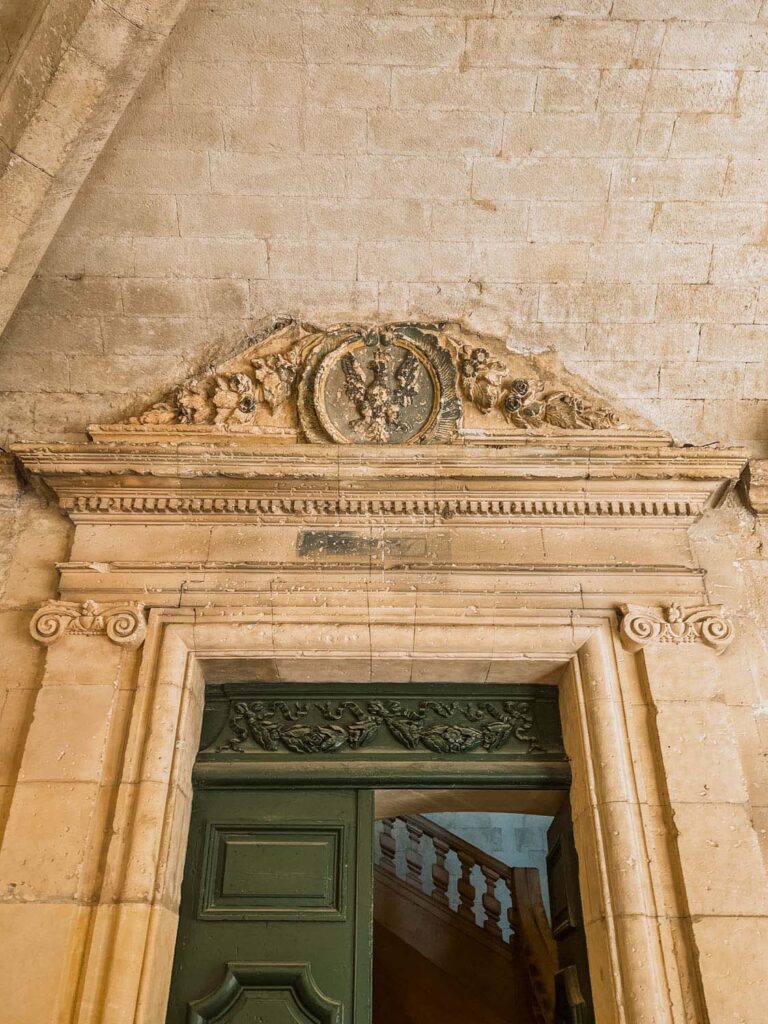
Eastern Gallery
The eastern gallery columns focus on the passion of Christ. Throughout the carvings, you can see the Christ being flogged bare-chested while tied to a column. Judas is also widely represented here, carrying the purse of coins given to Judas in exchange for his betrayal and that fateful kiss. We also can spot scenes from the last supper.
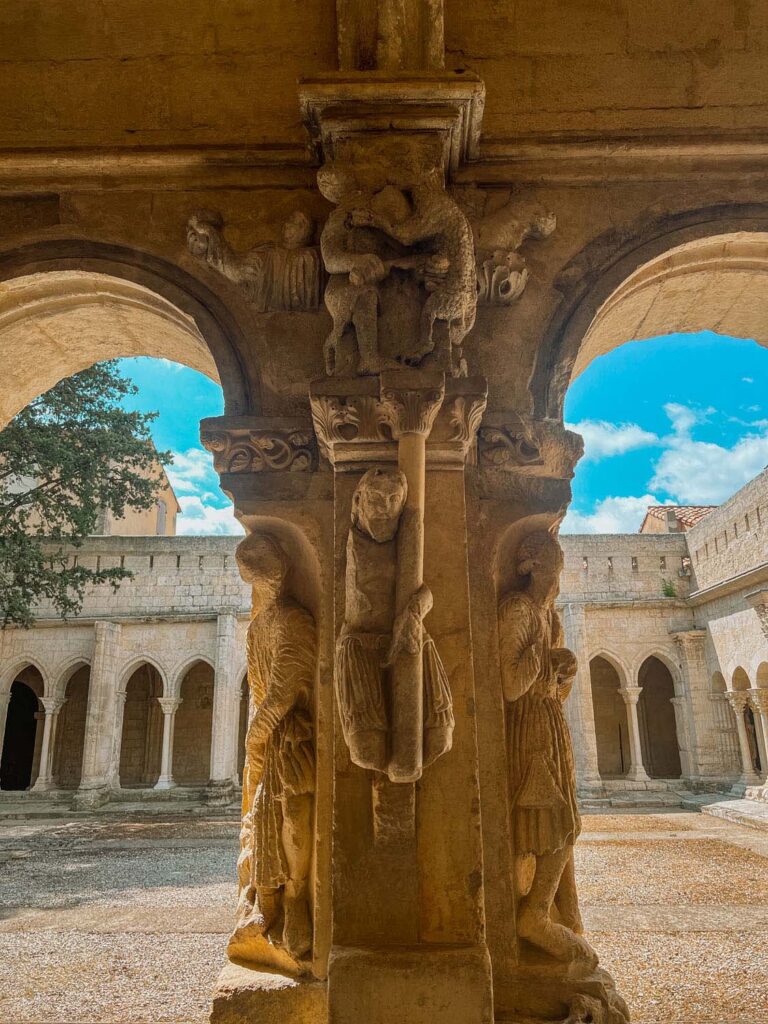
South Gallery
The south gallery features columns telling how Saint Trophime became a saint. You can see depictions of St. Trophime and Christ himself blessing the Alyscamps, the miracles they performed, and even how they brought a knight back to life! See if you can spot the scene of falsely accursed men being hanged on the gibbet who were saved by Saint Trophime. And faced with this miracle, King Charlemagne was forced to set them free.
Be sure to take a walk inside the old stone dormitory building. Despite being completely empty, it’s worth entering to admire the ethereal glow of the tiny yet intricately painted, stained glass window that cast a golden glow into the room.
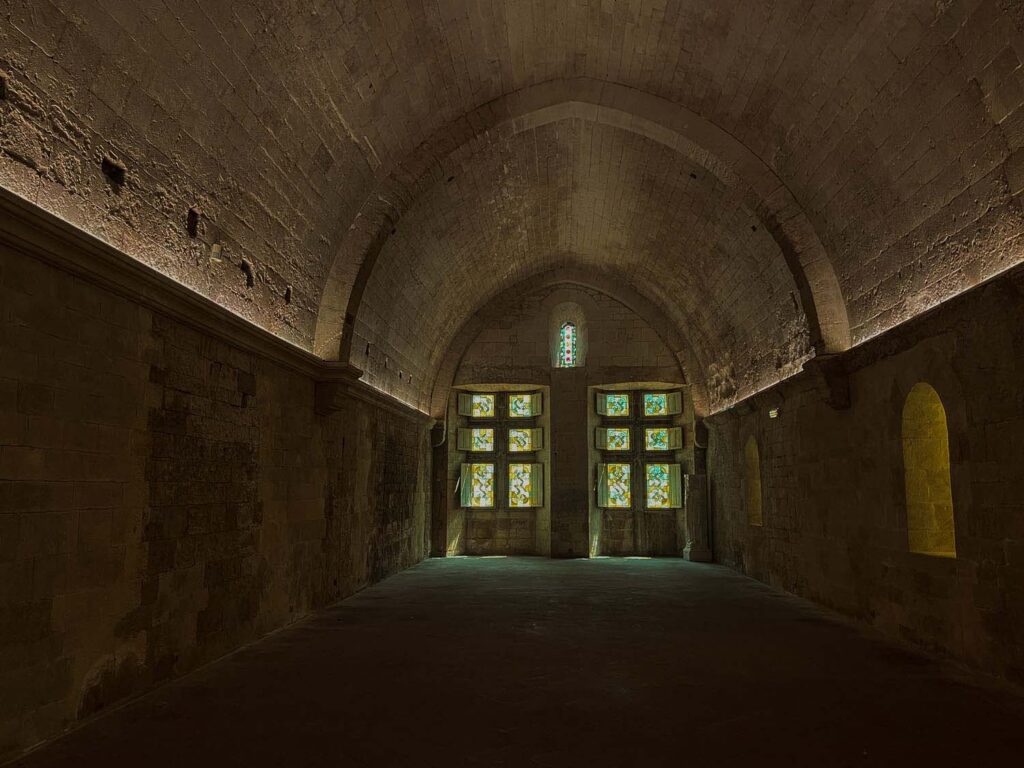
Heading to the second level, you can walk around the upper deck, which wraps around the lower level’s courtyard. From this vantage point, you have a stunning view of the cloisters below and an exquisite view of the old Romanesque Bell tower of the adjoining church.
Individual Entry Price the Cloisters: 6€
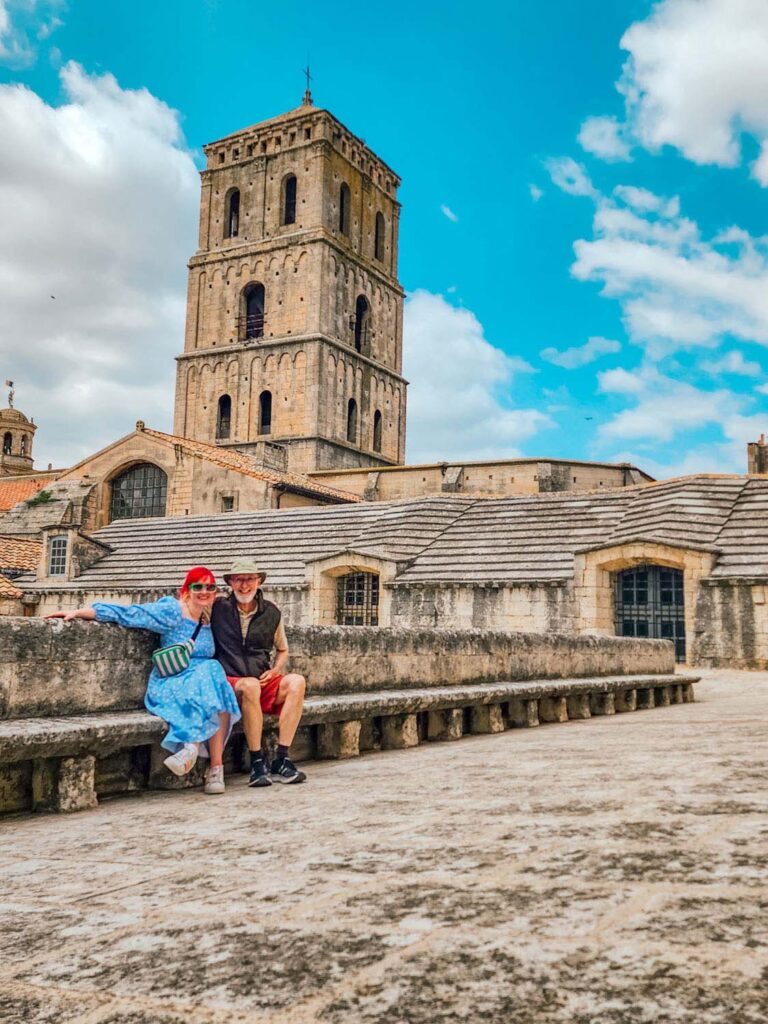
Jardin Des Arts
The cloisters are where we end the historical walking tour of Arles. But if you’re in search of the perfect on-theme place to enjoy a final meal in Arles, make your way to the Jardin Des Arts restaurant. This restaurant is located inside a 13th-century cloister. The Order of the Trinitarians founded their church here in 1198. And built a beautiful cloister and gardens where they lived and worked.
During the Revolution, the property was abandoned and partially destroyed. All that remained was the nave and some parts of the old cloister galleries. Thanks to the restaurant’s efforts, many remaining spaces have been restored and transformed into stunning restaurants. You can eat inside below the old vaults or outside on their charming outdoor terrace, where you can relax amongst the beautiful greenery. The menu features some classic French dishes, but if you’ve never tried Daube, this is a wonderful place to try this Provencal classic.
As you drive back to your home base or enjoy your dinner on the terrace, I hope you reflect on the wonderful journey we have taken into the ancient past of Arles. Hopefully, this tour allowed you to imagine yourself in the fascinating world of gladiators, emperors, and Roman antiquities. And that you leave Arles with a new sense of appreciation for all the people of this city who have helped preserve their past for generations to come.
Happy Travels, Adventurers


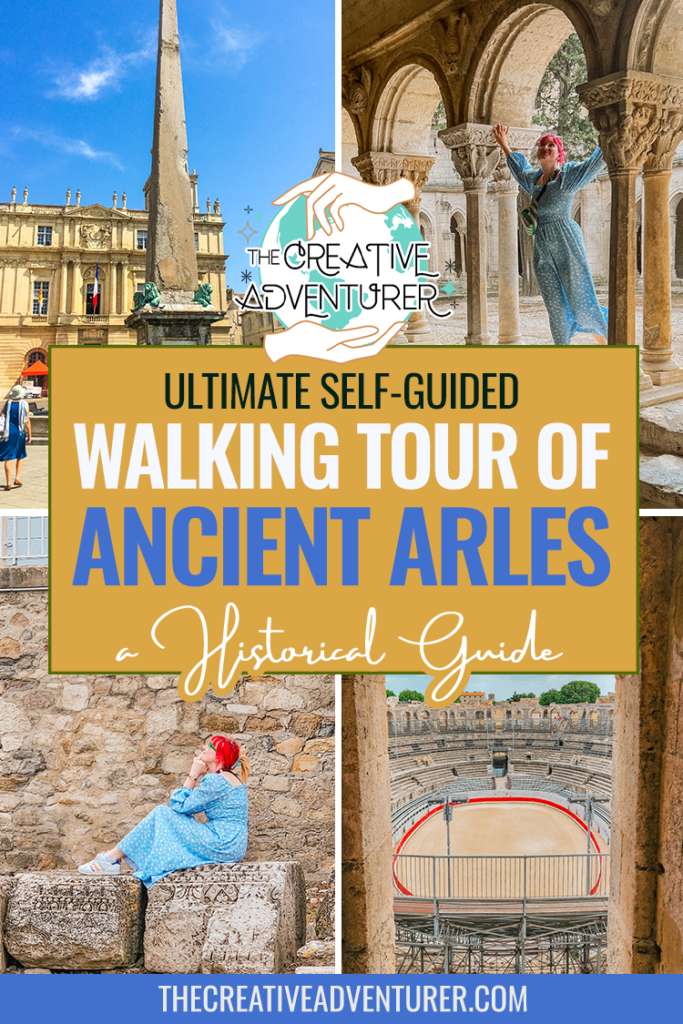





 Le Mistral
Le Mistral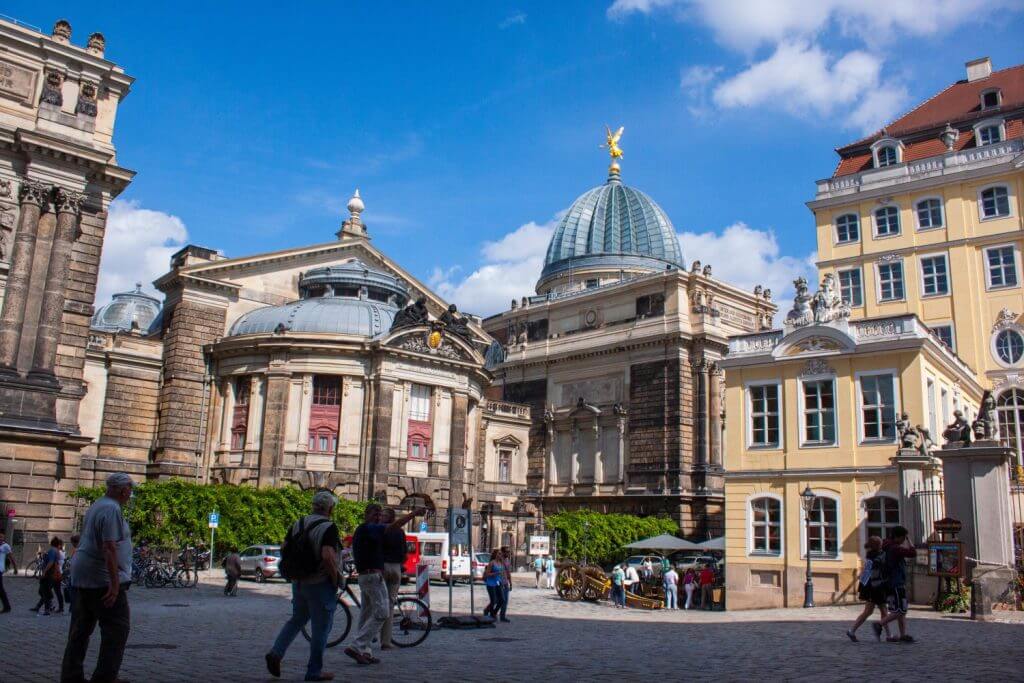
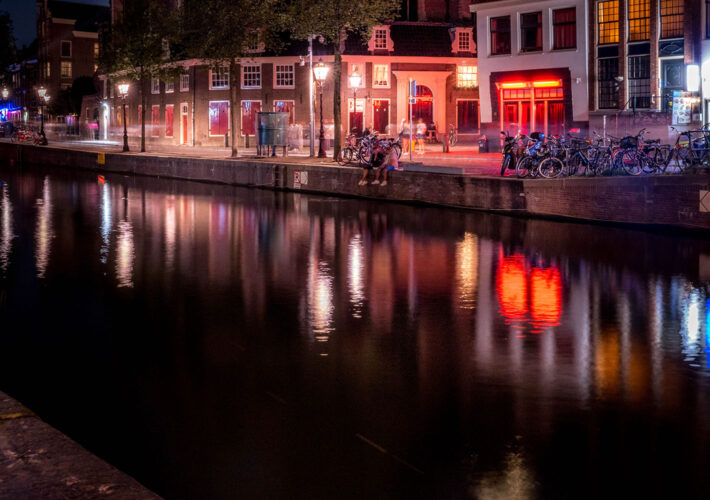


Leave a Comment